TEST
Agenda
October 22, 2024 07:30 am Exhibition October 22, 2024 07:30 am Meals Walk the exhibition space to grab your quick breakfast before general session. October 22, 2024 07:30 am Registration Desk Open October 22, 2024 08:30 am General Session As the Transportation industry evolves and innovates to deliver upon the goals of clean and safe mobility, efficient engineering processes are critical. A key enabler in shortening and making the engineering processes more efficient is simulation. Visionary automotive companies know how their world-changing ideas will perform well before prototypes and production through the use of simulation and model-based systems engineering. No longer relegated to CAE departments, simulation has changed tremendously over the past few years, empowering every engineer to innovate faster than ever before. Learn how the latest technologies in AI/ML, physic-based numerics and cloud services have transformed workflows to deliver the latest innovations in electrification, ADAS/AD, SDV, and vehicle attributes. Judy Curran October 22, 2024 09:05 am General Session The use of numerical tools and virtual analysis plays a critical role in the design and optimization of Formula 1 cars. To deliver race-winning performance on the track, Oracle Red Bull Racing relies on virtualized design and development to reproduce real-world scenarios and re-create the complex physical environment off the track. This continuous and rapid process ensures the car is optimized for maximum performance at each racetrack. Gennaro will highlight how Oracle Red Bull Racing leverages Ansys technologies for aerodynamic development and thermal management to the virtual testing of impact structures. Through the accuracy and fidelity in reproducing virtual testing environments, Ansys enables the Team to reduce costs and time necessary for physical prototypes, enabling quicker iterations and innovations in the fast-paced world of Formula 1. The Innovation Partnership with Ansys is crucial for Oracle Red Bull Racing to maintain the competitive edge in Formula 1 and to deliver exceptional performance on and off the track. Gennaro Serino October 22, 2024 09:40 am General Session Rajkumar Rajagopalan October 22, 2024 10:05 am General Session Chin-Hsu Lin October 22, 2024 10:30 am Meals October 22, 2024 10:45 am Electrification and ADAS October 22, 2024 10:45 am Electronics and Lighting October 22, 2024 10:45 am Safety and Systems October 22, 2024 10:45 am Digital Engineering October 22, 2024 10:45 am Crash I Seats play a crucial role in ensuring the safety of occupants during crashes. Seat integrity is a key factor in minimizing occupant injuries. In this study, the third-row seat of a full-size SUV was occu-pied by three Humanetics Hybrid III 50th percentile dummies in a high-fidelity model. The front crash acceleration of FMVSS208 (56KPH rigid barrier crash) was applied to assess the seat's integrity. Additionally, to account for the impact of parameter variation, a comprehensive set of variations was applied using Ls-Opt. This aimed to investigate the robustness of seat integrity performance considering parameters such as H-point, material properties, part thickness, and acceleration variation. Reza Bihamta October 22, 2024 10:45 am Forming I Stamping simulation includes: 1) forming simulation – modeling large plastic deformation during in-die forming operation and predict failures, such as wrinkling, fracture, and springback; 2) out of die handling simulation – modeling handling operation and predict dynamic effect caused surface and dimensional defects. Using rich application programming interface (API), scripts have been developed to streamline the modeling and failure evaluation of stamping simulation in LS-PrePost. The developments will be demonstrated through two case studies: 1) realization a damage-based failure index tool in hot stamping fracture prediction; 2) Graphic user interface (GUI) for parameter inputs and automatic modeling drop test. In addition to more than 90% efficiency improvement, the API supported scripts also democratize complex simulation modeling and reduce human errors. Steven Sheng October 22, 2024 10:45 am Occupant and Pedestrian Safety I Virtual testing applications are rapidly growing in the ever-changing landscape of automotive mobility applications. The key drivers to the transformation in mobility are technological changes for the future of mobility such as ADAS (Advanced Driver Assistance System), AV (Autonomous Vehicle). These technological evolutions will require assessment of a variety of safety scenarios with virtual assessment tools and would not be practical with physical testing only. One such virtual assessment tool in roadmap by consumer testing agencies like Euro NCAP and C-NCAP and other regulatory bodies is the Finite Element (FE) Human Body Model (HBM). The automotive industry must adopt HBM and other virtual safety tools to meet the requirements set forth by the consumer agencies and regulatory frameworks. The FE HBM representing the human is the most promising virtual assessment tool to support virtual testing in conjunction with anthropometric test devices (ATD) used for virtual and physical testing. HBM needs to fulfil the requirements for virtual testing by demonstrating compliance and should also meet the need of industry in product development applications. This requires HBMs to be omnidirectional biofidelic, user friendly (easy-to-use), robust, computationally efficient (fast), and certifiable by the virtual testing requirements from various agencies. HBM should also be capable of assessing injuries relevant to the accident field data in the most comprehensive manner to elevate the vehicle safety features. Another requirement is the ease of positioning the FE- HBM in the virtual testing environment in an effective manner. With the Accelerated Positioning Tool (APT-C), this process is streamlined and automated, by employing advanced methodologies such as Optimization and Machine Learning. Through these techniques, precise marker-based positioning of HBM models is achieved which includes model position, seat-squash, and belt routing. Additionally, the tool incorporates spine-posture calculations derived from data obtained in the UMTRI volunteer study, further enhancing its accuracy and applicability. The developed HBM-C and APT-C show promising capabilities to be used for virtual testing and product development aimed to improve vehicle safety applications and grow to other industries like aviation, defense, space, and sports (NFL, NASCAR) applications. This proactive approach to safety assessment is essential in the dynamic landscape of technological advancements and evolving safety regulations. Renuka Jagadish October 22, 2024 10:45 am Simulation Methods I In vehicle development CAE plays crucial role in arriving at optimum structural design to meet various vehicle performance targets in different domain such as Crash, NVH, Durability etc. Accurate CAE methodology can aid in reducing the number of physical tests & reducing overall vehicle development time. However, there are instances where there are gaps observed between test results and CAE predictions. These gaps get amplified in crash simulations as the event is highly dynamic and non-linear behavior simulation is always challenging. In order to enhance CAE methodology, it was decided to incorporate the effect of manufacturing and testing variations in crash CAE simulations. Manufacturing process accounts for variations due to inherent variation in material properties, spot weld nugget diameter, manufacturing processes such as stamping etc. whereas Physical Testing houses variation in barrier positions, test speed etc. within specified tolerance defined by regulatory bodies. These variations affect structural performance and negating these issues in early design phase will help to arrive at robust structural design. In this paper, the CAE based approach for accommodating manufacturing and testing variation in crash CAE simulation for arriving at robust BIW design is described. In the current work, unsupervised machine learning based CAE approach is used to identify variations in structural performance arising out of manufacturing and testing variations. This paper also describes accuracy verification of this CAE approach based upon its comparison with quasi-static experimental test. Shinoj Nair October 22, 2024 11:00 am Digital Engineering Automated physics-based simulation, bolstered by advancements in AI and ML, stands at the forefront of revolutionizing product development for innovative companies. This transformative technology integrates sophisticated algorithms to streamline design studies and optimization processes, significantly enhancing efficiency and accuracy in product development cycles. By leveraging AI's ability to rapidly iterate through vast datasets and simulate complex physical phenomena, companies can expedite prototyping, reduce costs associated with physical testing, and accelerate time-to-market for novel products. This paradigm shift not only fosters greater innovation by enabling engineers to explore unconventional designs with confidence but also cultivates a culture of continuous improvement and agility within organizations. Ultimately, automated physics-based simulation empowered by AI and ML represents a pivotal advancement that redefines how innovative companies conceive, refine, and bring their ideas to fruition in today's competitive landscape. Ansys Intelligent Engineering Projects, AIEP, is a holistic solution that builds on physics-based simulation capabilities, fully automated and paired with intelligent design study techniques to leverage both classic statistics and modern data science techniques. This allows a quick adjustment of new designs to newly upcoming or changing requirements by leveraging legacy information through AI. To achieve this solution, technical domains and capabilities like physics-based simulation, automation, machine learning and optimization are assembled perfectly deploy a scalable web-based application through a data management platform to ensure data integrity, oversight, and governance. Anthony Matarazzo October 22, 2024 11:00 am Electronics and Lighting The automotive industry is undergoing a transformative shift towards Software-Defined Vehicles (SDVs), where vehicle functionalities are increasingly driven by software. Managing the scalability, flexibility and interoperability of systems across diverse vehicle models is critical for successful deployment. This challenge involves the development of new hardware architectures and electronics as well as new software features. Ansys provides a comprehensive and integrated suite of tools and solutions that address the engineering challenges of software-defined vehicle development. Solutions for model-based system engineering, electronics design from chip to system, software development using real-time plant models and virtual validation of customer features. In this presentation, we will discuss how Ansys solutions enable OEMs and suppliers to partner to design, validate, and deliver the vision of the SDV. Domenico Caridi October 22, 2024 11:00 am Safety and Systems Digital Engineering is in the focus of many companies to improve their product development. It is concerned with the application of digital methods and tools covering the complete lifecycle of products, from conception through to operation and maintenance. Ansys is going to provide our customers with a digital engineering experience covering important aspects in key areas like MBSE, model-based software development, model-based compliance, and engineering simulation. In the talk our approach to Digital Engineering is discussed with a focus on safe software and compliance to safety and cybersecurity regulations. Marc Born October 22, 2024 11:00 am Electrification and ADAS Ansys ConceptEV is a new innovative cloud-based design and simulation platform for the design of EV powertrains. Engineers can collaborate on a shared system simulation connected to requirements from the start of the design process. ConceptEV provides a model-based approach to optimizing the powertrain system & components with rapid evaluation of different powertrain configurations and component design choices using innovative simulation techniques. Pavani Gottipati October 22, 2024 11:10 am Crash I Demands for ever increasing efficiency of automotive crash analysis have continued to rise in the drive to reduce automotive development costs. When major design changes are required to satisfy product performance late in the development process, significant cost and time are required to implement them. To alleviate this, automotive manufacturers have adopted the concept of "front-loading" to identify problems early-on in the development process. The earlier issues in the production phase can be identified, the more efficiently and effectively development can be performed. JSOL Corporation has developed a new method for modelling automotive body structures to simulate crash analysis in the early stage of design that employs Hughes-Liu beam elements with arbitrary cross-sectional geometry. Then JSOL Corporation has released a new modelling tool J-SimRapid that can easily create the reduction models. This tool enables front-loading crash safety analysis in the conceptual design phase. Furthermore, it can also reduce large-scale models in the detailed design phase. Consequently, J-SimRapid makes overall automotive design phases more efficient. In this presentation, the new model reduction method will be introduced along with examples of reduced model analysis by J-SimRapid. Shinya Hayashi October 22, 2024 11:10 am Forming I Achieving a sheet metal part within dimensional tolerance without the need for tool recutting is the ultimate goal of every forming simulation. Several key factors are essential to reach this goal: an accurate forming simulation with precise material descriptions, correct friction values, and an accurate binder model to determine the correct material flow and stress state of the part after forming. Additionally, an accurate springback calculation is required, considering the part clamped in the measurement device and the effect of gravity. With these results the new tool geometry has to be determined to compensate the springback of the sheet metal part. Xinhai Zhu October 22, 2024 11:10 am Occupant and Pedestrian Safety I For airbag deployment simulation, CPM is widely used due to its usability and cost performance. On the other hand, it has some difficulty in representing the gas flow into the narrow space like curtain side airbags. CPG is a new method which solves the Navier-Stokes equation for a space discretized by particles, and is expected to be able to solve his problem by representing pressure propagation and its effect to the fabric more accurately. This paper shows the preliminary validation results comparing test results and CPM for several airbags. CPG shows some better behaviors compared to conventional methods and possibilities to apply to the airbag deployment simulations. Hiromichi Ohira October 22, 2024 11:10 am Simulation Methods I Accurate simulation of solder reflow processes during Integrated Circuit (IC) packaging process is essential for ensuring the structural reliability and thermal behavior of electronic devices. In this presentation, a new approach utilizing the adaptive Incompressible Smooth Particle Galerkin (ISPG) method in LS-DYNA is presented. This method aims to simulate solder reflow processes during Flip Chip Ball Grid Array (FCBGA) die attachment processes and overall IC assembly. The ISPG method combines the advantages of incompressible fluid simulations and SPG (particle) techniques using a Lagrangian approach. Existing methods such as Surface Evolver or Fluid-Structure Interaction (FSI) techniques often struggle to accurately represent the interactions between solid composites and fluid-like molten solder balls during their reflow process. They also face challenges in maintaining efficiency and computational feasibility when simulating complete packages. This work demonstrates the effectiveness of the new approach called Adaptive ISPG which has been recently implemented in LS-DYNA. The ISPG technique utilizes a Lagrangian particle-based approach to solve the Navier-Stokes equation, specifically designed for modeling molten solder balls used in IC packaging. This technique seamlessly integrates with the structural physics capabilities within the LS-DYNA solver. The evolution of solder ball shapes is determined by the material's surface tension and the boundary conditions set by the structure. The adaptive feature of ISPG further enhances its capabilities, enabling improved flow behavior in narrow gaps and around sharp corners, which provides more accurate and realistic simulations of the solder. This novel workflow offers significant potential in optimizing new parameters of packaging assembly process through simulation-guided adjustments, enhancing the reliability and performance of IC packages. Daniel Vilyatser October 22, 2024 11:30 am Electrification and ADAS One of the biggest impediments to widespread adoption of electric transportation is battery cost. Performance, safety, and hitting time-to-market all remain challenges for the EV design cycle along with an evolving technological, supply chain and regulatory landscape for batteries. Tight product cycles make it impossible to use the build, test, fix approach against a multitude of battery design choices that exist at the material and component level. Simulation is therefore critical in EV and battery product development. Cell chemistry/format, manufacturing quality, cooling system and mechanical design significantly impact vehicle level attributes such as safety and performance with some tradeoffs involved. All of the components then need to be integrated and system performance validated against real-life usage conditions. On the safety side with new mandates that require passenger warnings around thermal runaway, propagation resistance becomes important whether thermally triggered or mechanically triggered. This presentation will cover an overview of Ansys battery solutions including key challenges in battery manufacturing, safety and how system level performance and what if failure scenarios can be investigated. Arvind Jujare October 22, 2024 11:30 am Electronics and Lighting Automotive printed circuit boards (PCBs) are the heart of all modern vehicles as they play a critical role in all advanced electronic features including autonomous driving systems, safety, infotainment, and connectivity solutions. In this presentation we will be covering the latest advancements in electronics, thermal and mechanical simulations of PCBs using Ansys tools. The presentation will highlight newer technologies to create and solve complex PCB assemblies including connectors, flex cables and housing to investigate the performance of the complete sub system and not the components in isolation, which is critical for automotive applications. Full vehicle simulations will also be presented showing virtual electromagnetic compatibility (EMC) of PCBs installed inside the vehicle along with the electrical/electronics architecture. Juliano Mologni October 22, 2024 11:30 am Safety and Systems An overview of the new ISO Standard: ISO/PAS 8800 (Road vehicles Safety and artificial intelligence). This standards defines safety-related properties and risk factors impacting the insufficient performance and malfunctioning behavior of Artificial Intelligence (AI) within a road vehicle context. Emphasis on the key elements of this standard such as deviation of safety requirements, data quality and completeness, SW architecture measures for the control and mitigation of failures and the evidence required to support an assurance argument for the overall safety of an automotive system that employes AI. Real life challenges to the implementation of this standard will be also covered for selected design areas. Activities I am involved in at both Aptiv and ISO/SAE/SCC to address these challenges are also highlighted. Majed Mohammed October 22, 2024 11:30 am Digital Engineering Capturing design insights earlier in the design process in a critical driver to shift-left initiatives, enabling increased innovation, reduced cycles times, and improved quality through earlier issue detection. Attend this session to learn how Ansys Discovery is leveraging native GPU computing and a next-generation integrated user experience to break down the barrier to upfront simulation across multiple automotive application areas, providing instantaneous design guidance where and when you need it most. Stop waiting for results and start acting on them. Justin Hendrickson October 22, 2024 11:35 am Crash I Virtual validation activity performed to fullfill all the ECE-R21 / FMVSS 201 standards requirements. Deep investigation on how dashboard stiffness will impact all the parameters to be checked like glass survival, deceleration, reaction force, gap and flush. Simone Calcopietro October 22, 2024 11:35 am Forming I The development of hot forming functionality in Ansys Forming has been a collaborative effort with BENTELER Automotive as our industrial partner. Hot forming simulation necessitates accurate computation of both temperature distribution and material deformation of the sheet metal part. Historically, setting up a hot forming simulation in LS-DYNA demanded extensive finite element (FE) expertise, posing a significant barrier for many companies. To address this, we collaborated with BENTELER to define the requirements for an intuitive and user-friendly graphical user interface (GUI). Our aim was to streamline the simulation setup process so that users only need a comprehensive understanding of the hot forming process, rather than deep FE expertise. In this presentation, we will demonstrate how we achieved this goal with Ansys Forming. We will cover the defined specifications, underlying assumptions, and the implementation process in both Ansys Forming and LS-DYNA. Additionally, we will showcase a case study from BENTELER, detailing the simulation setup and results. Finally, we will provide an outlook on future development plans for hot forming simulations with Ansys Forming. Volker Steininger October 22, 2024 11:35 am Occupant and Pedestrian Safety I The authors have previously published a paper characterizing a laminated glass pane to simulate the delamination and fragmentation response of glass in a blast event. In this study, a computational model in LS-Dyna was developed and correlated with physical testing of laminated safety glass panes subjected to blast loads. To generate an accurate model, validation of the component parts including Polyvinyl Butyral (PVB), adhesion and glass that make up the laminated safety glass was completed. In a new study, the authors using this model undertook several pedestrian head impact tests on a windshield in accordance with the Euro New Car Assessment Program (NCAP) and UN ECE R127 to determine its suitability. Building on this model, the glass material was further refined to correlate with previous physical tests completed with an emphasis to correlate against the head injury criterion (HIC) number as well as match the acceleration vs. time history curve. Following refinement, more physical testing was completed which was compared to the model and showed good agreement between the physical testing and model. Furthermore, when compared to the old approach to simulate pedestrian head impact on a windshield, the new approach demonstrated better membrane action following glass cracking which resulted in better correlation to the acceleration vs. time history curve. The approach and results of the study are presented within this paper. Marc Tatarsky October 22, 2024 11:35 am Simulation Methods I Accurate simulation of solder joint shapes and dimensions during the Flip Chip Ball Grid Array (FCBGA) packaging reflow process is crucial for ensuring signal integrity and structural reliability in electronic devices. This presentation introduces a novel approach utilizing the adaptive Incompressible Smooth Particle Galerkin (ISPG) method in LS-DYNA. Our methodology involves calibrating the ISPG model using NVIDIA's FCBGA, where a set of optimal parameters was identified. To validate the calibrated model, various FCBGA designs were simulated and compared against experimental solder joint cross-sectional data. The results demonstrated a strong correlation between the calibrated model and the experimental data, confirming the high accuracy of the ISPG method. This study highlights the significant impact of ISPG material model parameters on solder joint morphology, aiming to improve the design process by identifying key parameters. Yogev Buzaglo October 22, 2024 12:00 pm Meals October 22, 2024 12:00 pm Buffet lunch will be served during: Advancements in Sustainable HPC Solutions for Ansys Applications At this lunch presentation AMD and HPE will address the complex simulation challenges faced by our enterprise CAE customers. This session will focus on the deployment of highly efficient high-performance computing (HPC) clusters, power management options, advanced storage systems, and robust data management solutions. With customers relying on advanced modeling and simulation as a key business function, it’s important to choose HPC systems that optimize performance for a wide range of applications. Additionally, as thermal and power management become increasingly critical in next-generation HPC systems, customers need to understand the advantages of liquid cooling technology. Join us to also hear about the latest performance results of AMD EPYC™ processors running Ansys CFX, Ansys Fluent, Ansys Mechanical, and Ansys LS-DYNA, demonstrating their capabilities in real-world applications. October 22, 2024 12:00 pm Buffet lunch will be served during: Case Studies in Utilizing High Performance Computing (HPC) and AI/ML for Digital Transformation High-performance computing (HPC) and AI/ML accelerate solving complex simulations at unprecedented speeds to innovate faster. This talk will focus on case studies of clients utilizing TotalCAE-managed HPC services for clusters and cloud to accelerate their digital transformation using HPC, cloud, and AI/ML for their CAE workflows. October 22, 2024 12:00 pm October 22, 2024 01:15 pm Electronics and Lighting While simulation has been accepted as a best-practice in evaluating reliability of automotive electronics, the actual activity continues to be constrained. Overwhelmingly, OEM and Tier 1 organizations only evaluate reliability as a final signoff, instead of proactively integrating electronic reliability simulation into the entire product development process. In this talk, we will review current best practices for electronic reliability simulation within the automotive industry and then discuss future trends to better leverage electronic reliability simulation, including performing reliability prediction pre-layout and requiring reliability prediction simulation insight from Tier 1 and Tier 2 suppliers. Craig Hillman October 22, 2024 01:15 pm Digital Engineering Simulation has become an indispensable component of the modern product development cycle, enabling faster and more efficient design iterations. A critical aspect of this process is the digitalization and optimization of simulation workflows through the seamless integration of multidisciplinary computer-aided engineering (CAE) tools. In this presentation, we will demonstrate how to maximize the potential of your existing CAE tools by orchestrating and optimizing these workflows with Ansys optiSLang, the cutting-edge process integration and design optimization (PIDO) solution. By leveraging optiSLang, engineers can streamline complex simulations, reduce manual effort, and accelerate time-to-market. This talk will delve into key methodologies, including Sensitivity Analysis, Design Exploration, Optimization, and Robustness and Reliability assessments, showing how these approaches can improve product quality while mitigating risk and uncertainty in real-world applications. Ravi Teja Katragadda October 22, 2024 01:15 pm Electrification and ADAS In this presentation, we will focus on EV battery thermal runaway propagation simulation. In such a simulation, we model the heat generation due to exothermal reactions during thermal runaway and the subsequent heat transfer of the heat to the cooling system. The exothermal reaction models are calibrated from the accelerating rate calorimetry (ARC) data of a battery cell. The heat transfer is modelled using conjugate heat transfer models in computational fluid dynamics (CFD). Modelling of venting and vented gas reaction is also discussed. Several validated examples will be shown in this presentation including module/pack runaway propagation and the associated venting and vented gas reaction. Xiao Hu October 22, 2024 01:15 pm Safety and Systems How doing our FMEDAs in Medini instead of Excel: - Improved the quality of our analysis - Resulting in a higher confidence in our design. - Made extracting data on specific failures quicker, easier and more accurate - Made estimating the risk of missing/inoperative Safety Mechanism easier and more accurate Traceability matrix between SFMEA and FMEDA improved confidence in our design. Neil van Zyl October 22, 2024 01:15 pm Aerospace Structure Impact and Dynamics I The high strength, toughness, quasi-ductility over monolithic ceramics, and elevated temperature oxidation resistance make carbon-carbon (C/C) ceramic matrix composites (CMCs) excellent candidates for hypersonic vehicle components expected to experience high strain rates and high temperatures in service. However, accurate characterization of the material behavior under such extreme/harsh conditions presents significant challenges. This work will present the results of LS-DYNA computations conducted in support of an ongoing Southwest Research Institute (SwRI) internal research (IR) program focused on the high temperature, high strain rate behavior of C/C composites. The goal of this IR program is to develop and fabricate a system capable of rapidly heating metals and C/C CMC test specimens up to 4000°F to facilitate elevated temperature tensile split-Hopkinson pressure bar (SHPB) testing. This talk will provide an overview of SwRI’s dynamic material testing capabilities, challenges associated with the current effort, and will primarily focus the use of explicit finite element (FE) simulations to support the experimental program. Results of a computational investigation into apparent non-equilibrium behavior exhibited in previous SHPB tension tests conducted on a commercially available C/C composite material will be presented. Said non-equilibrium behavior is suggested by the measured signals on the input and output bars during these tests, particularly the dissimilarity of the transmitted wave and the sum of the incident and reflected waves. In the computations, the entire SHPB set up is represented/meshed. Two different approaches are taken to model the SHPB tension test coupons. The first approach considers the woven C/C CMC as a smeared homogeneous continuum. These continuum simulations resulted in sudden, brittle failure, which leads to wave attenuation/dispersion of the transmitted strain signals (i.e., the transmitter bar strain signals decrease in amplitude with increasing propagation distance). To correlate the simulated and experimental strain amplitude at the location of the transmitter bar strain gage in the tests, it was found that the value of the maximum principal stress at failure in the continuum models needed to be increased to what the authors believe is an unrealistically large value. It was also found that the continuum modeling approach is unable to capture the widening of the transmitter bar signals that is present in the SPHB experimental data. In the second modeling approach, the woven C/C CMC mesostructure (i.e., the tows and matrix) was explicitly modeled. Compared to the continuum simulations, the mesoscale simulations exhibited a more progressive failure, which was found to result in enough additional “ductility” such that the amplitude of the strain and force signals did not decrease with increasing propagation distance along the transmitter bar. Additionally, the mesoscale simulations resulted in transmitted strain signals that were wider those in the continuum simulations and were in good agreement to those in the experiments. Whereas the maximum principal stress at failure used in the continuum models had to be unrealistically increased to correlate the simulated transmitted strain signals to those in the experiment, this was not the case for the failure properties used for the tows and matrix in the mesoscale simulations, highlighting the importance of the mesoscale approach. Christopher Sorini October 22, 2024 01:15 pm Human Body Models THUMS (Total Human Model for Safety) is a detailed biofidelic finite element model of the human body, which encompass different genders and physiques including detailed anatomical features of the skeletal structure, internal organs, and other soft tissues like skin, flesh, and ligaments. The application of THUMS in numerical simulation offers exciting opportunities in automotive and civil aerospace development in areas such as safety, comfort, and ergonomics. These models will play an increasingly important role in the study of human body kinematics and assessment of injury risks in collision accidents. The Civil Aviation University of China (CAUC) aims to establish a posture database according to civil aviation standards and perform detailed numerical studies on the biomechanical response of aircraft occupants using THUMS in a variety of simulated impact scenarios. CAUC collaborated with Arup and its software house Oasys LS-DYNA, to help build this posture database and explore the feasibility of using Oasys PRIMER (a world leading LS-DYNA pre-processor) with its comprehensive human body model positioning tools and THUMS positioning metadata to achieve complex emergency braced postures. This presentation describes the entire positioning workflow used to achieve complex brace postures using the multi-stage positioning method in Oasys PRIMER and the *CONTROL_STAGED_CONSTRUCTION keyword in LS-DYNA. Further investigations were made to optimize simulation run times. Using a generic aircraft seat, a series of standard dynamic load cases are performed to predict occupant kinematics and the extent of injury risk to the aircraft occupant. This research will contribute to the wider application of THUMS in the aviation industry and promote biomechanical research into aircraft occupant safety. Emily Owen October 22, 2024 01:15 pm Material and Constitutive Modelling I Joining is a critical part of any structure for transferring load and maintaining integrity for the product. Ultrasonic weld is one of the popular methods for joining plastic parts in automotive industry. Along with providing a visually demanding finish, the method has been established for tight, strong, and dimensionally accurate joints. With the increase of complexity and integration of electrical and sensing instrumentation in autonomous and electric vehicles, ultrasonic weld provides a necessary means of attaching parts into plastic parts without compromising visual impact. However, the sonic weld performance is yet to be quantified, and the criteria for capturing weld separation, and losing this connected load path during structural vehicle analysis, has not been studied extensively. Sonic welds, even though it is a very effective joining method, the whole welding tooling process is expensive and time consuming. Ideally, to optimize the welding spot number and develop future cost-effective welding method, it is crucial to understand the actual weld performance under various variables such as material, thickness, temperature, strain rates etc. In the following study, sonic weld performance has been evaluated in five different material combinations, three different strain rates and three different temperatures. Based on the analysis, a fully characterized FEA sonic weld modeling method has been developed, which captures weld separation, for in-production parts joined with sonic welding method. This method can be applied on full vehicle level analysis, like front and rear low speed, and enables for optimized design by determining an ideal number of sonic welds necessary for this type of structural loading. ABM Iftekharul Islam October 22, 2024 01:15 pm SDM In recent years, the speed required for product development has increased significantly. With the increasing sophistication of requirement levels, data-driven development utilizing past data is gaining attention in the automotive industry. Compared to physical testing, simulation is characterized by the ease of obtaining information through calculation and analysis, but on the other hand, handling huge amounts of data is a challenge. In this paper, we propose a new process to search for similar behavior of the part of interest from dozens of crash simulation results by using the order-reduction technique. Assuming that an irregularity occurred in the behavior of a member, the modeling history database was searched for members with similar irregularities using the shape of the member as a key, and highly similar behaviors were found in the database. MASAHIRO OKAMURA October 22, 2024 01:40 pm Aerospace Structure Impact & Dynamics I Impacts at or exceeding speeds of 7 km/s are classified as hypervelocity impacts (HVI). Micro-meteorites and space debris travelling at these speeds pose a present and prevalent threat to the operational safety of satellites. The damage can be measured through loss of operation and the corresponding economic expenses. HVIs against satellite shielding structures need to be understood to improve their design, however, physical testing is usually associated with high economic expenses. A commonly accepted and widely used alternative relies on numerical modelling of HVI shielding structures. More recently, the use of advanced composite materials in space applications, such as carbon fiber reinforced polymers (CFRPs), has increased. This necessitates the development of accurate numerical modelling techniques adept at predicting failure mechanisms and damage under these extreme loading conditions. Generally, numerical techniques employed in HVI modelling rely on the Lagrangian implementation of the finite element method (FEM; well-suited for tracking relative motion between interfaces, useful in modelling delamination) or the meshfree smoothed particles hydrodynamics method (SPH; excellent for replicating extreme deformation and fragmentation). To leverage the benefits of both methods and capture the wide range of failure mechanisms and damage occurring simultaneously, this study employs an adaptive FEM-SPH method. 16-ply laminated composites under HVI by three different types of orbital debris (steel, aluminum and nylon, classified as high, medium and low-density materials by NASA, respectively) are studied. Crater size and delaminated area are used as comparison metrics to gauge the accuracy of the numerical models and variations in the prediction of these features are explored and quantified across different composite material models. October 22, 2024 01:40 pm Human Body Models HBMs have become a much-needed tool for the safety simulations of the automotive industry. Out-of-position load cases for passengers and simulations for other vulnerable road users, like pedestrians and cyclists are increasingly needed, and HBMs can address this need. Euro NCAP in its Vision 2030 plans to replace ATDs with HBMs and the same is expected by other consumer information programs. Nevertheless positioning, pre-processing and post-processing of these models on a level suitable for industrial use has not been straight-forward until now. ANSA, offers a novel solution to this complex problem, making the positioning and handling of an HBM, as easy as with an ATD model. Using an advanced integrated MBD solver in parallel with morphing algorithms, engineers are provided with real time articulation and positioning of a HBM within an easy user interface. While the user just articulates the human model with the mouse in a most direct way, the biofidelic joint modelling guarantees realistic model movements and the generation of a ready-to-run model without the need of pre-simulation. In parallel we are developing tools to tackle the problem of producing variants of an HBM adapting it to different anthropometries, thus better representing the population variability. We are addressing the problem with morphing and remeshing tools along with methods of incorporating anthropometric data into our algorithms. Vulnerable road users is another area of great interest where HBMs are the only choice. We are conducting our own research projects related to cyclists' postures. Through statistical processing of laboratory scanned data we aim to produce statistical rider models that will be applied on the HBMs. This gives the possibility to the engineers, to simulate crash events of any kind of bicycle for any rider anthropometry. On the post-processing side, running interactively or in batch mode, the META HBM tool automatically creates PPTX and PDF reports including videos and images of GHBM's kinematics, strain contour plots, elements erosion identification, chest-bands deformations, and injury criteria calculations (Brain CSDM, Abdominal soft tissue organs SED, etc.). Moreover, time history results can be extracted from the Occupant Injury Criteria tool. Injury criteria like HIC, BrIC, Nij, etc. are calculated. The extracted and calculated results can be compared to corresponding results of Anthropomorphic Test Devices (ATDs), while it is also easy to make comparisons between multiple HBMs simulation runs or between results from different solvers. Lambros Rorris October 22, 2024 01:40 pm Material and Constitutive Modeling I In comparison to Metals, several aspects of Polymers such as Viscoelasticity, Early Necking, Wide range of ductility, poses several challenges for manual calibration that can be accepted for us in full-vehicle crashworthiness. This paper provides recent advancements in d3VIEW to develop an accurate *MAT_024 and *MAT_SAMP models. The automation is powered by d3VIEW's Workflow and powered by its new product, FORA, a generative-AI multi-agent that is tightly integrated with d3VIEW. Suri Bala October 22, 2024 01:40 pm SDM From an industrial or productive standpoint, the scale of simulation models, the number of involved simulation model components, and the complexity of the utilized processes with a vast amount of data are at a level that is challenging to manage manually. The introduction of virtual testing adds to the complexity of the development process and the quantity of data to be handled. Consequently, the use of an SDM system for this purpose can be advantageous in numerous ways. The introduction of virtual testing can be accomplished in several steps. The initial step is the automation of data preparation, encompassing both input data and produced result data for both the OEM and the testing authority. Subsequent steps involve the implementation of individual processes and security mechanisms against data manipulation. This paper/presentation primarily addresses the initial step and outlines a methodology for achieving the objective of safeguarding against data manipulation and intellectual property (IP) infringem Marko Thiele October 22, 2024 01:45 pm Electrification and ADAS Ansys Electronics continues to demonstrate its multi-decade leadership in computational electromagnetics and multi physics simulations. In the newest release 2024R2, the unmatched market leading and multiphysics motor design simulation software, Ansys Motor-CAD, now offers capabilities that are further widening the competitive gap. Some of these new capabilities are: three new cooling methods; extending the capability of the adaptive templates; and enhanced electromagnetics. As an advanced electromagnetic field solver that widely used for electric machine design and analysis, Ansys Maxwell in 2024R2 now has: an improved formulation for the sliding mesh interface called Continuum Air; a new reduced order model(ROM) for brush commutating machines; and a new User Defined Primitive (UDP) for hairpin coil. Dennis Steward October 22, 2024 01:45 pm Digital Engineering Ansys is advancing its customer experience, accelerating democratization of simulation, and powering next-generation innovation with new AI capabilities across its simulation portfolio and technical support services. As simulations are being leveraged more in early stage design processes, there is a need to run them faster compared to high fidelity simulations. AI presents here an opportunity to address key challenges and scale the solution to non-experts. Ansys SimAI, a cloud-enabled physics-neutral platform, empowers users across industries to greatly accelerate innovation and reduce time to market. SimAI allows engineering teams to predict performance of complex problems in minutes, encouraging performance improvement, progress and innovation. AI Models rely heavily on high-fidelity data with several data points and accuracy. Leveraging the right data becomes important for a good AI Model; this is where Ansys Minerva comes in. Minerva offers traceability, versioning and data driven insights across a centralized, access controlled repository thereby complementing and enriching the SimAI workflow. Gowri Jagannathan October 22, 2024 01:45 pm Electronics and Lighting The design complexity of high-performance electronics systems, including chip-package-board and accompanying enclosures and housings and even entire systems such as electric vehicles (EV) has dramatically increased in recent years. With further requirements to integrate high-speed digital functionality for infotainment and safety systems such as HDMI, USB, DDR4, PCIe and UCIe, reaching compliance with EMI/EMC (ElectroMagnetic Interferences and Compatibility) standards has become ever more challenging. In addition, electromagnetic co-existence issues with RF wireless protocols such as AM/FM, Satellite Radio, WiFi, Bluetooth, ZigBee, and 5G/6G can potentially occur, causing signal integrity issues within and across systems resulting in bandwidth reduction and reduced performance. Finally, the push to EV technology with the demands for higher voltages and operating frequencies has introduced some of the most challenging problems in EV development. In the worst cases, addressing EMI/EMC issues requires a significant re-design of critical EV systems resulting in increased cost of design and delayed time to market. This presentation reviews the most recent advancements in electromagnetic simulation methodologies for virtual EMI/EMC testing covering the entire design spectrum from chips to systems on to full EV capacity. Matthew Commens October 22, 2024 01:45 pm Safety and Systems Modern vehicles are getting more and more complex and an approach that utilizes industry best practices is needed to prevent the vehicle from behaving in ways that are unwanted and/or dangerous. This presentation describes an approach based on a process model, automotive functional safety and Safety of the Intended Function as well as automotive cyber security to prevent unexpected behavior. We will investigate how the process can be used to ensure that requirements are documented, understood and implemented. Then we will use ISO 26262:2018 to explain how unreasonable risk due to E/E malfunctions can be prevented. After that we will discuss the use of ISO 21448 (SOTIF) to prevent malfunctions caused by technological insufficiency and foreseeable misuse. The final layer of protection is achieved by using ISO 21434 cyber security to identify and analyze hacking attack risks. Heinz Bodo Seifert October 22, 2024 02:05 pm Aerospace Structure Impact and Dynamics I Due to the anticipated growth in the Advanced Air Mobility (AAM) market, there has been a surge of interest in novel advanced material systems like thermoplastics. This new-age aerospace industry could benefit from novel manufacturing and joining processes to meet the expected high-production volume requirements compared to traditional aircraft. As these materials are projected to be used in primary and secondary structural applications, there is a need to understand their resistance to dynamic impact conditions. The present research evaluated flat thermoplastic composite laminates for bird strike resistance through a series of experimental and numerical investigations. The test article was a flat composite panel fabricated with unidirectional carbon fiber and a thermoplastic resin system, and the impactor was a bird. Before conducting the bird strike experiments, pre-test numerical analysis was conducted to determine the laminate thickness that would achieve two desired outcomes: bird penetration through the laminate and bird rebound. The composite panel was modeled using LS-Dyna *MAT Laminated Composite Fabric, commonly referred to as MAT058. Coupon and sub-component level tests were conducted to develop the material model. Pre-test numerical analysis was used to predict the laminate’s response and determine the impact velocities. Bird strike experiments were then conducted and numerically validated using post-test simulations. Aswini Kona Ravi October 22, 2024 02:05 pm Human Body Models Current trends and developments in the automotive market have caused changes in the way we evaluate and analyze our vehicles. Reacting to a growing demand for realism in simulations, Hans was born. Hans is the DYNAmore's human model, characterized by its detail and excellent performance. Realistic Human Body Models (HBMs) are one of the major revolutions in the world of vehicle development simulation nowadays. But the greater realism of the models comes together with a greater complexity in their handling. GNS offers its well-known products in response to this new need: Generator4 and Animator4 . Thanks to Generator4, Hans and other HBMs can sit comfortably through a simple GUI that is as flexible as the model itself. An industry that requires high realism in passenger models also expects a high level of accuracy in capturing the effects of changing model position and interaction with its environment, reflecting seat deformations and realistic positioning of anchoring systems. leyre Benito Cia October 22, 2024 02:05 pm Material and Constitutive Modeling I The diverse characteristics of Polymer materials, in comparison with Metals, presents significant challenges to develop accurate material laws for use in Crashworthiness simulations efficiently. With the advent of decision-making Workflows combined with the power of AI, this paper provides benefits, efficiency and accuracy of HPC and AI powered Workflow-based calibration over traditional methods using several Industrial materials used frequently large deformation and high-velocity applications. The paper will cover sequential and parallel calibration of brittle and ductile Polymers, using *MAT_024 or *MAT_SAMP_LIGHT, with DIC for Quasi-static hardening curve, strain-rate based failure with damage using *MAT_ADD_GISSMO, and Mesh-regularization with the use of AI. The paper will demonstrate the immediate availability of the AI-powered Workflows as Software-as-as-Service (SaaS) in the Cloud that can consume Test-data in Excel format and generate calibrated material cards that can be applied in real-world applications. Suri Bala October 22, 2024 02:05 pm SDM In recent years, crash and safety simulations have reached a very high level of accuracy in the prediction of the crashworthiness of the vehicle and the probability of injury for occupants and pedestrians under a multitude of loading scenarios. Among several factors, this achievement is also attributed to the fine resolution of finite element models that enables the precise representation of even the smallest parts and geometric features affecting the simulation results and the increase in the number of simulated loadcases. However, accuracy does come with a cost: Model size and variability have considerably increased, together with the number of loading scenarios that need to be simulated on each model variant. From the definition of the different model variants from the CAD structure and the subdivision of the simulation models into functional sub-assemblies, to the set-up of the numerous different types and flavors of loadcases, there's one thing in common: The modular management of the model at each phase of its lifecycle. At early phases, modules are as small as CAD parts. Later, modules become functional sub-assemblies which, for crash and safety loadcases, are handled as include files. Although the modular way of work is the only reliable method to enable parallel work on different areas of the model, it increases the“administration cost” during the simulation preparation, as the pool of different modules (be they parts or include files) needs to be consumed by higher level structures in a way that facilitates data reuse and enables traceability throughout the complete digital thread of a simulation model. BETA CAE Systems' Suite of applications addresses these challenges during model build and loadcase set-up with its Modular Model and Run Management solutions, that facilitate the handling of the different model and loadcase variants in a way that maximizes data reuse and enables traceability from part to simulation run, while mitigating the “administration cost” with the extensive use of templates. From the population of CAE subsystems based on the CAD structure, to the definition of different subsystem variants, vehicle configurations and loadcases, templates act as recipes that hold the instructions on which ingredients to use and how, in order to complete each given task. This work discusses the definition and use of templates during model build and loadcase set-up, focusing on three key phases of the simulation preparation: First, the CAD to CAE structure mapping during Subsystem definition from PDM/PLM structures. Second, the handling of Subsystem variants in the scope of the different vehicle configurations. Third, the handling of parametric include files for the definition of Loadcases. Insights are given on the methods used for the adaptation of the templates to the specifications of each model in hand and how these are finally interpreted into LS-DYNA keywords behind the scenes, by making use of parameters, transformations and ID management techniques. Irene Makropoulou October 22, 2024 02:15 pm Electronics and Lighting EMC is a challenging topic for power electronic applications that are trying to switch more power at higher speeds inside smaller packages. Early system insights are valuable since EMC compliance testing failures are notorious for delaying product release and costing lots of time and money late in the development cycle. In this presentation we will look at ANSYS simulation capabilities for power electronic EMC analysis of electric vehicle drivetrains that predicts switching transients based on real-world packaging parasitics and mutual coupling between traces and components. Ryan Magargle October 22, 2024 02:15 pm Digital Engineering Honda has been constructing a unique material intelligence digital platform using material database Granta for the purpose of highly efficient, environmentally friendly R&D. We’ve designed a material database structure ’schema’ , which is easy to be utilized for fields of design, simulation (functional and manufacturing CAE, additive manufacturing, materials informatics), additive, procurement, and material development. Over thousand users in the company accesses to the in-house material database and we’re now tackling to enlarge its application for Honda products not only automotive, but motorcycle, power products, aerospace, and other technical fields. Besides, under VUCA circumstance for future, we suggest a prospective digital utilization on material information toward environmental, regulatory issues, and AI technology progress. Toru Furusawa October 22, 2024 02:15 pm Safety and Systems Legacy approaches to automotive system design often consider systems engineering and systems safety analysis as critical yet separate engineering activities. This results in specialized but siloed and disconnected processes, ill-equipped to efficiently respond to industry trends of increasing product complexity and reduced development times. To counter these challenges, as in other industries, automotive systems engineering has adopted a Digital Engineering approach centered around a model-based representation of the design intent. However, unlike other industries, model-based work products in automotive are not a direct deliverable to our customers. Why then do we invest significant engineering resources into model-based systems engineering (MBSE)? This presentation will highlight the value proposition of closely coupling automotive systems engineering and safety workstreams via a shared, common SysML model. Discussion will include how the model enables an integrated development process where safety is designed into the system from day one. Additional return on modeling investment will be shown in the form of integrated system simulations, efficiencies in system verification and validation, and accelerated design certification and instantiation. Jeremy Ross October 22, 2024 02:15 pm Electrification and ADAS The electric powertrain has become a pivotal component in modern electric vehicles (EVs), directly impacting their performance, efficiency, and user experience. Ensuring the durability and reliability of the electric powertrain is crucial for the long-term success of EVs. This study focuses on developing predictive models for the durability of electric powertrains, with particular attention to Noise, Vibration, and Harshness (NVH) characteristics, which are critical to both the perceived quality and mechanical integrity of the system. By integrating advanced simulation techniques, material fatigue analysis, and real-world testing data, the research aims to enhance the accuracy of durability predictions and optimize NVH performance. The findings provide insights into the key factors affecting powertrain longevity and noise reduction, offering valuable guidance for the design and engineering of more robust and quieter electric vehicles. Santosh Kottalgi October 22, 2024 02:30 pm Aerospace Structure Impact and Dynamics I This paper discusses the challenges of simulating a rotating helicopter main rotor blade constructed from heterogeneous materials. A two-step LS-DYNA process is used to pre-load the helicopter blade: first, a centrifugal force is applied with the blade at rest, followed by initializing the stresses for a transient explicit rotation simulation. The blade, modeled with a combination of shell and solid elements, encounters instabilities such as element erosion and checkered stress patterns when the adhesive is modeled with *CONTACT_AUTOMATIC_SURFACE_TO_SURFACE_TIEBREAK. Several strategies are proposed to resolve these instabilities, including replacing TIEBREAK contacts, adjusting contact settings, and employing implicit transient preload simulations. After the implementation of the strategies, the model's stability was verified over a full revolution simulation. Armando De Abreu October 22, 2024 02:30 pm Human Body Models Hans - Human Body Model: Enhansments Over the last months, our Hans - Human Body Model has successfully been introduced to a few selected pilot customers. These customers tested the model in their environments, evaluated application load cases, and kindly shared their feedback with us. Coming this fall, an update of our Hans – Human Body Model will be released based on this valuable customer feedback. The model has further improved in several aspects like the overall response, geometrical level of detail, robustness, etc. In terms of usability, more output definitions are now available as well as the occupant and pedestrian postures are fine-tuned to better fulfill the requirements of certification load cases. Regarding the model performance, several load cases have been added to the correlation repository of Hans. To evaluate potential injuries, a stand-alone tool will be released with the upcoming update of Hans. This tool encompasses the calculation of injury risks based on the output of a Hans analysis. Alexander Gromer October 22, 2024 02:30 pm Material and Constitutive Modelling I This contribution will deal with the latest developments in the field of material models in LS-DYNA. This includes completely new methods as well as extensions and improvements to existing models. The range of materials concerned includes metals, foams, composites, plastics, honeycombs, glass, adhesives, damage and failure models, and others. The new developments are aimed at improving prediction quality, robustness, performance, and user-friendliness. Examples will be used to illustrate the new features. Tobias Erhart October 22, 2024 02:30 pm SDM Due to the continuously increasing demand in Computer Aided Engineering (CAE), it is essential for high efficiency and transparency to automate and standardize processes. In many cases, Simulation Data Management (SDM) software is used for this purpose. To achieve all mechanical target values of a product, there are several standard disciplines in the field of CAE, such as crash, Noise Vibration Harshness (NVH) or fatigue. Assembly, solving and postprocessing for these disciplines can differ greatly from one another. For this reason, it is best practice in many companies to carry out the optimization of a model in each discipline separately and to compare the results and structural adjustments with other disciplines at regular intervals. This approach can lead to two disadvantages: Firstly, this results in redundant work. Model adjustments successful for one discipline must be redone in other disciplines later on. Secondly, deterioration in other disciplines may be discovered late: Model modifications that produce positive results for one discipline can have a negative impact on the results in other disciplines. This can lead to short-term changes of plans, postponements, or additional costs for optimizations. With the help of a base model and SDM, several disciplines can be covered based on a single source of truth. The basic approach is not to work directly on the solver specific files, but on the base model itself. All discipline and solver specific files are generated from this file via SDM automatically. As an example, the two disciplines crash and NVH are considered in this paper. LS-Dyna is used as solver for both disciplines. There are several criteria that must be met to successfully carry out multidisciplinary variant creation and result evaluation: A complete database for all discipline-specific information, such as load case definitions or connection configuration is essential. Furthermore, a flexible and simple selection of the load cases is needed. It is also crucial to have an automatic process flow from the creation of the include to the finished report. This report must be designed according to the discipline-specific load case. A clear overview of all created variants is as important as a dynamic variant comparison of the results for each discipline. The SDM software SCALE.sdm fulfills all these points, which is why it is used as the basis for this paper. So far SCALE.sdm is used by users in the industry like in the best practice example mentioned above: For each discipline there is a separate variant tree that is considered independently. By customizing specific key features such as an automatic creation of the include- and inter-include-connections, it is now possible to display all disciplines together with a single variant tree. This approach makes it possible to avoid the above-mentioned disadvantages of the separate discipline approach: All the desired disciplines can now be covered by a single model modification, allowing the user to work effectively on structural optimizations while minimizing resources. Andreas Lohbrunner October 22, 2024 02:45 pm Electronics and Lighting Lighting technology is significantly evolving. Displays are becoming larger, brighter, and multi-dimensional. Lighting systems are more customizable, flexible, adaptable and complex as ever. Imaging sensors are getting smaller, while image quality is getting higher. For many of these optical systems, challenges are being solved at the micro-level, but system-level integration and performance are equally as complex. With the Optics portfolio at Ansys, we can bridge the gap between microstructure optimization and system level performance. Many advances in our Optics products have enabled us to keep up with the evolving lighting & sensing technologies, such as improved GPU acceleration, stray light analysis, and full optical product workflows. Join to discover the Ansys Optics solution and its recent innovations. Mike Grove October 22, 2024 02:45 pm Electrification and ADAS Modern vehicles put new demands on electronic devices and systems for the control and conversion of electrical power. Electrification promises more efficient powertrains with increased range, faster charging, and lower weight but they also introduce new sources of electromagnetic interference (EMI). The design and optimization of these systems are essential to achieving greater power density, efficiency, and reliability. This presentation will introduce the extensive simulation capabilities used to design and fine-tune power electronics, predict their behavior under both normal and faulty conditions, and proactively address potential issues – from analysis and sizing of power converter topologies to reduced-order modeling of electromagnetic components and electronics reliability. Peng Han October 22, 2024 02:45 pm Safety and Systems The complexity of an open pit mining Fleet Management System (FMS) presents challenges for Medini Analyze FFMEA tools. The FMS is structured into four main architectural layersSite Operations, FMS, Autonomy, and Drive-By-Wire each containing multiple internal layers and many functions. The AIAG-VDA 2019 FMEA Handbook reflected in Medini does not directly provide a concept of system nesting or module reuse found in the design. This session explores an example of an open pit FMS and an approach using Medini to address its complexity. The approach is a work in progress, building on lessons from previous efforts and enhanced through collaboration with the Medini Analyze Expert Team. Andy Saxsma Varun Jayaram October 22, 2024 02:45 pm Digital Engineering Automotive external aerodynamics is a key factor in vehicle design, impacting aspects such as performance, fuel efficiency, stability, noise, and comfort. In electric vehicles (EVs), aerodynamic performance is especially critical as it significantly affects battery range and longevity. Moreover, EVs generate significantly less engine noise compared to traditional combustion engines, making aerodynamic designs crucial for achieving acoustic comfort. Another crucial area for the automotive industry is thermal management. Efficient thermal management systems help maintain the right temperature for the engine, battery, and other critical parts, ensuring optimal performance and longevity of vehicle components. This presentation will showcase the latest Ansys solutions in the field of aerodynamics and thermal management. We will also demonstrate how our Native Multi-GPU solver can accelerate simulations by an order of magnitude, enhancing the accuracy of aerodynamic predictions and enabling faster design iterations and better optimization. Lastly, we are thrilled to introduce our latest AI innovation, Ansys SimAI, which promises to revolutionize data-driven design. Marco Coderoni October 22, 2024 02:55 pm October 22, 2024 03:10 pm Battery/Electric Vehicle The rapid advancement of battery technology has driven the demand for advanced tools for a comprehensive understanding of battery cell behavior. This contribution proposes a holistic approach to generate digital twins of battery cells via coupled electro-thermo-mechanical modeling techniques within LS-DYNA. These models serve as precise representations of real-world battery cells, contributing to the development of efficient and secure battery systems. Martin Schwab October 22, 2024 03:10 pm Machine Learning Topology optimization plays a crucial role in generating initial design concepts during the early stages of vehicle development. It is a Finite Element Analysis (FEA) based technique that helps to optimize the shape and distribution of the material in a desired packaging space. This paper explores the application of LS-TaSC and LS-DYNA for topology optimization of giga casting in a vehicle’s underbody. This paper touches on the importance of topology optimization in the design development process and elaborates how the LS-TaSC tool can be used to get directional guidance before initiating detailed design (CAD) work. BIW (Body-in-White) global static bending and torsional stiffness load cases were considered while setting up the optimization model. Various optimization setting parameters, constraints, and post-processing tools available in LS-TaSC were explored and have been elaborated in the paper. The use of LS-TaSC and LS-DYNA in this project enabled the generation of an initial giga casting design concept, indicating the critical areas where material is needed or can be removed. These designconcepts were further refined by the design team using CAD tools, considering more realistic manufacturing and performance constraints. AKSHAY KULKARNI October 22, 2024 03:10 pm Multiphysics Modeling The sloshing phenomena is defined as the movement of a free fluid in a space or tank. Sloshing of fuel in a tank of an aircraft can cause dynamic disturbances that can affect the functionality of the operational system. This work examines two industrial real-life sloshing problems. The first example is the sloshing of fuel in a satellite tank. This can arise from the operational maneuvers of the satellite, which in turn can cause significant inertial forces that may lead to the decrease in performance of the satellite even up to the point of control loss. Another example concerns the slag liquids that may accumulate during the combustion process and acceleration phase of the rocket. These liquids can undergo sloshing which may narrow the nozzle opening and affect the motor performance and mission success. This work presents the attempt to model these sloshing phenomena using the most appropriate LS-DYNA solver. An overview of the available FSI solvers are presented and test cases are done in order to define the most appropriate way to model these real industrial sloshing problems. Yoav Lev October 22, 2024 03:10 pm Simulation Methods II In recent years the fidelity of finite element models in structural mechanics has reached a remarkable quality and level of predictiveness. Hence, the question arises, if these models could even be more than the digital twin during product development: Could they be also used for homologation and certification of the corresponding products through the respective authorities or regulators as well? This idea is often referred to Certification by Analysis (CbA) or Virtual Testing (VT). It should be noted that in different industries various steps towards these goals are already taken. The respective virtual testing procedures (including certification and homologation by regulators) require additional attention: Method development for solver enhancements needs to ensure data as well as IP protection of all stakeholders and provide measures to prevent data manipulation possibilities before homologation and market launch of the product. There are various technical as well as legal aspects to the whole process. But it needs to be emphasized that one key ingredient will be the ability of the solver to protect and safeguard input and output data while at the same time allow for traceability and transparency through fingerprinting technology when it comes to data sources like i.e. material properties, geometrical data, solver settings like version, solution method and contact parameters. Clearly, these requirements can only be met by new solver enhancements. The present talk will target the big picture of CbA, show the route to achieve some of the most pressing issues and showcase a proposal for a first step into new solve features. This approach will be exemplified by the new Euro NCAP Virtual Far Side Simulation & Assessment regulation for occupant safety. Andre Haufe October 22, 2024 03:15 pm Meals October 22, 2024 03:30 pm Electronics and Lighting The design of automotive lighting requires a deep understanding of optical, thermal, electronics, and structural domains to comply with stringent legal requirements. The complexity of automotive lighting systems and the integration of their subsystems necessitate feedback across these different physics domains. This presentation will address several key aspects, including the optical design considerations of automotive lighting, which involve optical design principles, light source creation, materials definition, and the integration of data across various software platforms. It will also explore the capabilities of automotive lighting in validation and optimization, aiming to enhance product workflows while reducing costs and time to market. Furthermore, we will illustrate how high-fidelity computer simulations can be utilized to understand the effects of these physics domains and their interactions on automotive lighting design, which is crucial for achieving operational success, refining design decisions, and accelerating the product lifecycle. Akshay Patke October 22, 2024 03:30 pm Digital Engineering Structural simulation and Durability prediction is paramount to next generation vehicle validation which ensures the reliability, safety, and performance of vehicles under various conditions like different loading conditions, environments, and usage scenarios. Electrification, rapid technology advancements and shorter product development cycles demands rapid advancements in simulation best practices in a form of new modeling & meshing practices, different connection types, innovative simulation workflows, solver accuracy, performance, high performance computing, incorporation of manufacturing aspects into simulation, test correlation at different stages and ability in running end to end durability workflows to automate process of durability performance improvement. In this presentation, we will show how Ansys structural and durability solutions will help deliver next-generation vehicles that provide a safer, more comfortable passenger experience. We will cover different approaches customers are adopting both solver and workflow perspectives for component, system and vehicle level simulations. Hardik Shah October 22, 2024 03:30 pm Safety and Systems Advanced software engineering tools can be used to generate test cases and test case sets of inputs and expected results. Leveraging generative AI as well as traditional advanced software engineering tools enables engineers to develop test and certify safety critical software in new and more efficient ways. This presentation will go through a journey of the tools and techniques of developing test cases of Natural language processing and software testing automation focusing on efficient methods and commercial software tools. Luke Zeleznak October 22, 2024 03:30 pm Electrification and ADAS Join us for an exclusive presentation where Ansys unveils the future of highly automated driving. Discover how we tackle the engineering challenge of ensuring safety across diverse scenarios through model-based systems engineering. Our approach to safety encompasses design integration, verification and validation, and incremental safety case development, all supported by advanced simulation and analysis. You will also gain insights into Ansys's commitment to safety and simulation at scale, highlighted by an exclusive testimonial from OEM customers introducing the 'Personal Pilot L3' in the new BMW 7 Series. During the presentation, you will learn how to effectively integrate safety into design and verification processes, navigate system limits with a focus on safety and SOTIF (Safety of the Intended Functionality) during development and validation, and utilize synthetic sensor data for perception machine learning and AI training and validation. Additionally, you will explore how to leverage simulation at scale to validate autonomous driving features, including sensitivity and reliability analysis in scenario-based simulations. Keywords include simulation, virtual testing, toolchain, sensor, functional safety, SOTIF, safety case, MBSE (Model-Based Systems Engineering), synthetic data, machine learning, AI, radar, camera, lidar, ultrasonic, sensor fusion, and cloud. Tony Karam October 22, 2024 03:35 pm Battery/Electric Vehicle With the increasing popularity of electric automotive vehicles, electric vertical take-off and landing (eVTOL) aircraft, and commercial drones, there is a subsequent increase in the need to better understand and predict the mechanical behavior of batteries during crash and impact events. A plasticity model of the cylindrical metal casing of commercially available batteries is developed through mechanical testing. The plasticity model is then validated by simulating the mechanical tests with LS-DYNA, which is then used to simulate crush tests on full batteries to determine the mechanical response of the inner battery components. Future work includes using LS-DYNA to accurately predict the coupled mechanical, electrical, and thermal response of batteries to prevent unwanted battery ignition during vehicle and aircraft crashes. Nathan Spulak October 22, 2024 03:35 pm Machine Learning The process of developing a new vehicle in the automobile industry typically involves a comprehensive timeline of 3 to 4 years. This duration is necessary to conduct a wide array of tests and adhere to various regulations across different domains, particularly focusing on aspects such as Crashworthiness and Safety standards. In an alternative ‘mid-cycle refresh’ design and development process, the industry also considers introducing a new vehicle by making ‘delta’ mechanical/electrical and technological changes to an existing vehicle design. Either of the vehicle development processes require extensive virtual validation through CAE simulations of Crashworthiness load cases. The purpose of the Crashworthiness analysis is to assess how well a vehicle's structure can protect its occupants during a collision. This study involves transforming the vehicle Crash Model Partially into a Lumped Parameter representation using DEP MeshWorks’ - Reduced Order Modelling (ROM) technology. The ROM model shows an impressive 85-95% correlation with the original Detailed Finite Element model. The complex process of converting the Detailed Finite element model into lumped parameter representation is automated through the ROM approach. The ROM model is further parametrized with a broad ranging category of parameters involving a) shape, b) gage, c) material, d) spot welds, e) adhesives, f) seam welds, g) crush-initiators, h) reinforcements, i) darts, j) bulk-heads, k) slots/holes, l) laser welded blanking, m) ribbing and o) composite lay-up to convert it to an intelligent ‘Parametric ROM Dyna model’ using DEP MeshWorks. This parametric ROM model is integrated with a DOE (Design of Experiments) based Optimization scheme to obtain an optimized design that maximizes Crashworthiness performance and minimizes weight & hence cost. Thanks to the significantly reduced number of nodes/elements in the parametric ROM model, the entire optimization process can be completed in less than 50% of the time that detailed models would require. Rajasekaran Mohan October 22, 2024 03:35 pm Multiphysics Modelling Parachutes for aerospace application is a new research area in the current era of space science. The scope of our project includes parachute design and inflation techniques. The current research project focuses on the following application areas: â— Parachutes for Re-entry Capsule â— RLV Parachutes Parachutes are used as aerodynamic decelerators in airdrop systems, so inflation is a significant fluid-structure interaction (FSI) phenomenon. New patterns of parachutes are constantly being developed and tested for airdrop systems but this research into parachute inflation is heavily reliant on historical experimental data. Till now, no parachute inflation model that is not based on this experimental data was developed. Material and instrumentation have changed significantly since the early experimental testing, yet the methods to develop the parachutes can still be traced to the same techniques used over ninety years ago. Rapid development of computational technology and modern computational mechanics combined with numerical simulation techniques have become more widespread in parachute research field and would enable us to develop the parachutes that are more optimized. Simulating the landing of a vehicle on water using LS-DYNA is a complex task that involves the interaction between the fluid (water) and the structure of the vehicle. This type of simulation is crucial for vehicles designed to land on water. The process typically involves several steps and requires specialized techniques within LS-DYNA. Chandra Sekhar Kattamuri October 22, 2024 03:35 pm Simulation Methods II FMVSS301 mandates fuel system integrity for vehicles post-crash, so a detailed assessment of the fuel system is needed to validate its integrity. Modeling the fuel tank assembly for vehicle crashworthiness is very challenging due to the fuel slosh phenomenon which occurs in the dynamic crash event. The fuel slosh behavior affects the overall dynamics of the fuel tank and its interaction with surrounding vehicle structures. Extensive studies can be found in the literature to improve fuel tank modeling. However, there is limited information related to modeling fluid’s free surface and the pressure profile imparted by the fluid on the tank during the crash event. A fully coupled Fluid Structure Interaction (FSI) simulation of this event, using an explicit mechanical solver and an incompressible fluid solver (ICFD), is computationally expensive. Smooth Particle Hydrodynamics (SPH) has long been the choice for this application. This study uses the weakly-incompressible SPH formulation (ELFORM 15) to model the fluid behavior. In Phase-I of this two phase detailed calibration effort, the model is calibrated against a series of rigid tank slosh tests at two different speeds and various volume fills with and without baffles. The study shows good correlation of both the pressure time histories and the slosh pattern (fluid free surface) between the experiment and simulation. Vikas Sanghavi Onkar Akolkar October 22, 2024 04:00 pm Electronics and Lighting Vehicle vision ergonomics are becoming more and more relevant in todays automotive market. The comfort and safety of the passengers in a vehicle might be affected by different natural and artificial light sources. Interior lighting, sun reflections, displays and external lamps must be taken into consideration during the development of an optimum cabin. The human factors are no longer a subjective topic, and thanks to Ansys Speos and its virtual human vision capabilities, an infinite number of scenarios can be assessed, and a robust design can be achieved. Victor Loya October 22, 2024 04:00 pm Electrification and ADAS ADAS/Autonomous vehicle Software is very complex as SAE level 5 autonomous vehicle probably will have 1B SLOC vs 14 M SLOC in Boeing Dreamliner (As per Bloomberg energy report). Testing of such complex software is challenging and also time consuming. Product quality and maturity for such high complex ADAS/AV is function of testing at various levels like SW testing, integration testing, System Qualification Testing and vehicle testing. With conventional approach ADAS features get tested only at fag end of the project as it requires availability of vehicle with fully equipped sensors and actuators needed. This is extremely risky for meeting the stringent quality standard of safety critical systems, and extremely expensive. With development and maturation of artificial scenario and sensors simulation, Virtual Validation is gaining prominence as it address all demits of conventional development and testing approaches and gives edge by left shifting features testing along side of SW development. With increasing fidelity of simulation and realistic visual orchestrations, feature function testing gets left shifted and performed at bench level and use vehicle to measure Key Performance Indicators. With developments on physics based Radar model from companies like Ansys (AVx) enable configuration of antenna properties and give out ADC signal level data Virtual RWUP will gain prominence and minimize expensive Real World user Profile tests (RWUP) in real vehicle, and also enhance coverage of testing towards Safety of Intended Functionality (SOTIF) standards. Smart tradeoff between tests segregation between vehicle and simulation, makes projects execution faster, and cost effective. Venkatesulu Bhajanthri October 22, 2024 04:00 pm Digital Engineering NVIDIA Modulus is a state-of-the-art, open-source scientific machine learning platform that enables research, development and deployment of surrogate ML models for a wide range of engineering applications, such as external aerodynamics, cabin cooling, electro thermal cooling simulations etc. The platform offers training pipelines that enable development of optimized and scalable end-to-end workflows for ingesting large simulation datasets, training models in a distributed manner on multiple GPUs, physics-based validation and ease-of-deployment. It offers unique tools for embedding physical constraints derived from governing equations into ML models to increase their robustness and accuracy state-of-the-art model architectures. It also offers specialized ML model architectures that cater to specific engineering applications. In this talk, we will demonstrate these capabilities of the NVIDIA Modulus platform to Develop end-to-end training pipeline for building surrogate models Show the benchmarking workflow to evaluate and validate different model architectures This will be demonstrated in the context of two use cases external aerodynamics and structural analysis of cars. October 22, 2024 04:00 pm Safety and Systems Among aircraft systems, the Fly-by-Wire (FBW) system is one of the most safety critical and it matures throughout the flight test campaign. During the campaign, many software loads are released, and several software verification activities must be satisfied before each of those software loads are allowed to be flown. At EMBRAER, SCADE has played a pivotal role for over 15 years in allowing the quick deployment of FBW software releases used throughout all its business units. The latest version of SCADE is being used by EMBRAER in the development of the FBW for EVE - a leader in EVTOL industry. The brightest new feature in this latest version is SCADE Model Coverage Assistant (MCA), which is being used for the first time. This discussion will describe how EMBRAER believes how SCADE MCA will considerably alleviate verification activities and reduce software lead-times during the most strenuous phase of the aircraft development. Charin de Silva October 22, 2024 04:00 pm Battery/Electric Vehicle The safety of battery systems in electric vehicles (EVs) and portable electronics under impact or penetration is critical. Traditional modeling methods, relying on simplified approaches, fall short in capturing complex interactions and dynamic behaviors. Advanced simulation techniques using LS-DYNA offer more accurate predictions of battery responses to penetration loads. This abstract outlines recent methodologies employing LS-DYNA for high-fidelity modeling of battery components and protective measures. Innovations include sophisticated material models for electrodes, electrolytes, separators, and structural packaging. These advancements align with standards like SAE J264, ensuring battery safety and reliability, thereby supporting the adoption of electric mobility and renewable energy technologies. Satish Kumar Meenakshisundaram October 22, 2024 04:00 pm Machine Learning N. Abdelhady1, D. Borsotto1, V. Krishnappa1, K. Schreiner1, C.-A. Thole1, T. Weinert1 1SIDACT GmbH Reaching and fulfilling several design and crash criteria during the development process is what makes the engineer adapt and redesign the simulation model over and over again. Ideally resulting in new simulation runs with in best case improved performance, matching the intention of the applied changes. For the more demanding case of unforeseen results which do not necessarily fit to the expectations of the actual changes, machine learning methods and a workflow are being introduced here, which allow to identify the root cause of this behavior. In a first instance every new simulation run is being added into an analysis database, which is continuously being used to compare new simulations against. Previous studies have already shown that this process can assist the engineer in automatically highlighting new behavior and pin pointing the engineer to the regions of interest. Rather than only highlighting the new behavior now a second phase is being triggered additionally. In this second phase the previously detected event is being isolated and analyzed against the gathered data of the development history. The analysis methods used are based up on the Principal Component Analysis, a reduced order modelling technique. This allows not only identifying structures in the data but also correlating deformation patterns against each other. Especially the latter one is of interest for an automated process, as it allows automatically detecting and suggesting possible root causes to the engineer. As an outcome of this process the engineer receives a list of correlating parts, so that he can focus on deriving a better engineering solution to achieve a deterministic behavior, rather than searching for the root cause of the event. To provide additional information about the type of cause, as for example failure or buckling, the identified parts are also forwarded to a classification prototype. This type of classification shall assist the engineer in deriving a possible design adaptation. Dominik Borsotto October 22, 2024 04:00 pm Multiphysics Modeling This paper focuses on implementing immersed interface techniques within the Incompressible CFD (ICFD) solver in LS-DYNA. For Fluid-Structure Interaction (FSI) simulations, immersed methods offer several advantages: they simplify the pre-processing stage, prevent large mesh distortions due to structural motion, and provide more robustness in scenarios involving complex contacts. However, these methods sacrifice accuracy in near-wall regions, suggesting that a hybrid approach between body-fitted and immersed methods could be beneficial in some cases. This work discusses two methods: the Resistive Immersed Implicit Surfaces (RIIS) method [1] and a method based on a new set of discontinuous finite element functions [2]. The basics of these methods will be presented, along with considerations for setting up a model in LS-DYNA, including pre- and post-processing. [1] Fernandez MA, Gerbeau JF, Martin V (2008) Numerical simulation of blood flows through a porous interface. ESAIM: Mathematical Modelling and Numerical Analysis 42(06): 961-990. [2] R. Zorrilla, R. Rossi, R. Wüchner, E. Oñate, An embedded Finite Element framework for the resolution of strongly coupled Fluid-Structure Interaction problems. Application to volumetric and membrane-like structures, Computer Methods in Applied Mechanics and Engineering, Volume 368, 2020, 113179. Facundo Del Pin October 22, 2024 04:00 pm Simulation Methods II The "Modular Contact" is a new implementation of contact algorithms in LS-DYNA. We will give a short overview of the fundamental ideas behind it and how it tries to achieve its main goals: a more uniform implementation between different contact options and improved (parallel) performance by better harnessing of modern hardware and improved MPI communication. The performance will be demonstrated on large models and put in comparison to the well-established, existing algorithms in LS-DYNA. Albert Ziegenhagel October 22, 2024 04:25 pm Battery/Electric Vehicle As EVs become more mainstream safety concerns have been paramount for OEMs, consumers and regulators. Owing to the risk of thermal runaway in an EV crash incident, a full Multiphysics battery analysis is required to capture the mechanical deformation that triggers internal shorting and thermal runaway. This is helpful in knowing the mechanical design limits and designing vehicles with good crashworthiness while balancing the need to lightweight EVs as car companies strive for better range. Ansys developed a simulation workflow from battery cell to vehicle level (in partnership with universities and industry test labs) to validate key pieces using physical test data from a 26Ah automotive pouch cell. LS-DYNA models were calibrated and subsequently validated against cell experimental data. Multiphysics models that captured a battery cell’s electrical, mechanical and thermal behaviors were then to used to scale up in a proof-of-concept simulation of full vehicle crash. Ansys has partnered with George Mason University’s Center for Collison Safety (CCSA) to incorporate battery models into a full vehicle validated crash model. Ansys has tested cells (at our internal labs or through test partners) that CCSA extracted from a commercial EV to build battery models. The ongoing work to date will be discussed and used as an example to demonstrate the battery safety workflow in an EV. Vidyu Challa, PhD October 22, 2024 04:25 pm Machine Learning LS-OPT includes an improved version of the MOP (Metamodel of Optimal Prognosis) system developed for optiSLang. The feature allows automatic selection of the ‘best’ metamodel. The updated version also includes the standard LS-OPT metamodels (Neural and Radial Basis Function Networks) as candidates for the MOP selection process. Examples are presented. A previously introduced methodology for integrating LS-OPT, LS-DYNA and Ansys Twin Builder for the purpose of creating fast full-field surrogate models, is presented with results using industry examples. LS-OPT is used to generate and schedule multiple LS-DYNA simulations according to an experimental design. The dynamic field results are then gathered as input to create a Reduced Order Model (ROM) using Ansys Twin Builder. Recent examples using single history ROM surrogates are also presented. Finally, an outlook on current developments is provided. NIELEN STANDER October 22, 2024 04:25 pm Multiphysics Modelling In the first part, we will introduce a newly implemented porous media model in the dual-CESE solver along with its applications. The implemented model is an interface jump condition method. In this method, the Darcy-Forchheimer momentum equation is solved as a jump condition at the porous structure interface. This model can be used in many different flow conditions, especially for supersonic flows, such as flows around supersonic spacecraft parachutes. Some improvements have also been made, such as removal of the ‘ideal gas law’ restriction in order to extend its usage to more general EOS fluid applications. In this paper, we will give several examples to show the capability of these new features and how to set up the model in the dual-CESE solver format. Please note that this porous-medium model is implemented in both the single and two-phase dual CESE FSI solvers. This capability can be used in many different applications with porous media, such as airbag deployment and supersonic parachute flows. But it Grant Cook October 22, 2024 04:25 pm Simulation Methods II In the last three decades, DEM (Discrete Element Method) has been extensively developed and applied to solve many geotechnical and petroleum engineering problems. Another approach is developed to account for the elastic and brittle behavior of materials. The method has been successfully implemented in the LS-DYNA to study cementitious, sintered, and rock materials such as concrete, fibers, rocks, etc. Explosives with the combination of rock, concrete, and other brittle materials are simulated using LS-DYNA and studied extensively by researchers. In such cases, the volume of the fragments and number of fragments would be beneficial to the researcher. To assess this, we have developed a system that computes the number of fragments, fragment volume, and number of bond links associated with the DEM particles. Users have the option of outputting the results described above, depending on the user control card by using *DATABASE_DEFRAGMENT. Additionally, DEM has been extended to simulate the likes of intumescent material through new keyword *DEFINE_DE_TEMP. The DEM formulation has been extended to include the temperature effect on the radius of DEM particles. The method takes the user’s temperature with several inputs and expands the radius of the particle based on the temperature and coefficient of thermal expansion. With recent improvements, the DEM can be thermally coupled with the Finite Element Method (FEM), and particles can change size in response to temperature changes in the DEM. The new improvements allow for the simulation of complex thermal behavior in a variety of real-world scenarios, like soil interaction with a blasting battery, a heated container containing discrete material etc. Users can activate thermal conductivity of the DEM by providing the required data in the DEFINE_DE_BY_PART, CONTROL_DEM, and DEFINE_DE_TO_SURFACE_COUPLING. The LS-DYNA/MPP decomposes the problem once based on its initial geometry. For good MPP parallel efficiency, the deformation of the geometry should not be too large to keep reasonable ratio between computation and communication time. However, most DEM problems are dealing with granular flow which involve mixing and large relative displacement between particles. The parallel efficiency degrades due to increasing data communication. A re-decomposition algorithm supports DEM features which can reduce computing costs by 30%. This algorithm would rearrange the grouping of the particles, thus avoiding the search for neighbors that are far away from the group. A Galerkin meshfree method can generate shape function without the need of element or mesh, allowing it to provide a quality solution for large deformation problems such as fragmentation, cracks, material separation etc. The shape function in the meshfree method is rational function with complexity and because of this the domain integration scheme becomes challenging. Over the last 2 decades, several integration schemes were developed to obtain a computationally efficient and stable solution. Few methods can resolve the stability related issues and the efficiency; However, the meshfree methods are still computationally expensive due to the requirement of the higher support size. To address this issue a novel method, namely Expedited Galerkin Meshfree Method (EGMM) is developed. The method employs a nodal integration with a unique stabilization scheme to stabilize the solution at lower support size. The method only needed a minimum evaluation point and does not require direct second order derivative of the shape function. The method achieves its objectives by stabilizing the Galerkin solution with minimum computational cost. The resulting method conserves the linear momentum and the total energy. The contact between the two bodies or the particles can be easily implemented by integrating with the Discrete Element Method. Overall, the simulation result demonstrates that the method is stable and works effectively for the various types of materials. The user can define this model similar to the solids by generating solid and using *SOLID_EGMM. Numerous material behaviors are taken into consideration by using the constitutive model, which can be defined by *MAT_. Mohammed Mujtaba Atif October 22, 2024 04:30 pm Digital Engineering In the drive towards an electrified and sustainable future, automotive companies are increasingly adopting simulation technologies to accelerate design cycles and reduce costs. As technology complexities escalate, there is a growing need for an integrated development approach that emphasizes early-stage development and validation processes. Engineers are turning to simulation to address complex system requirements, but achieving comprehensive system validation through virtualization requires the creation of high-fidelity, physics-based plant models. These models, calibrated using machine learning and integrated with software functions and real-world driving scenarios, enable a virtual replication of the vehicle. Moreover, companies are now extending these models from product development into operational phases, leveraging the power of Hybrid Digital Twins for real-time fleet management. In this session, Ansys experts will explore the use of simulation methods, reduced-order models (ROMs), and AI/ML techniques for performance validation through model-in-the-loop (MIL), hardware-in-the-loop (HIL), and virtual drive tests. The discussion will also cover how to combine data and physics to create hybrid digital twins, which offer online insights into component operation through virtual sensors, predict service life, and optimize operating conditions. Key takeaways include understanding Hybrid Digital Twins—why and how to implement them, high-fidelity system simulation through reduced-order models, integrating test and 1D data with 3D data for accurate virtual validation, and the role of virtual sensors in predictive maintenance, all powered by physics and refined by data. Vitor Lopes Pereira October 22, 2024 04:30 pm Electronics and Lighting Heads Up Display (HUD) systems present information within the driver's field of view, allowing them to keep their eyes on the road at all times. HUD systems have been around for over half a century, but a renewed interest and investment in this technology is currently taking place. This is being driven, in large part, by the advent of Advanced Driver Assistance Systems (ADAS) where the need to display safety-critical information effectively, with minimal distraction, is essential. To keep up with the growing demand and complexity of HUD systems, engineers need a fast and effective way to design, optimize, test, and validate them. This includes defining functional specifications & quality targets, assessing key performance metrics, and visually perceiving the system as the driver would. Ansys optical solutions provide purpose-built tools and workflows to virtually design, assess and test a HUD prototype under various driving conditions. This presentation will demonstrate how optical simulation and virtual prototyping can help solve the challenges of HUD design. TJ Gilleran October 22, 2024 04:30 pm Safety & Systems Using the scenario of an electronic powertrain, we demonstrate how a suite of digital engineering tools using an Model-Based Systems Engineering (MBSE) approach. This will demonstrate how different engineering domains can collaborate and connect with tighter integration between design, analysis and simulation. John Macauley October 22, 2024 04:30 pm Electrification and ADAS This joint presentation by Jeff Blackburn of Ansys and Chris Manning of dSPACE will discuss the new FMVSS-108 Adaptive Driving Beam (Smart headlamp) regulations, and how SiL and HiL simulation can be used to greatly reduce the need and inconvenience of track and road nighttime physical testing, saving time and money Integrating the Ansys AVx physics accurate camera and headlamp models with the dSPACE ASM 3D driving simulator and vehicle dynamics models yields a SiL virtual twin of your vehicle and ADB exterior lighting system allowing you to test your ADB headlamp function and control logic virtually on the desktop. Using a dSPACE HiL bench with an ESI (environmental sensor interface) module, the Ansys AVx simulation generated raw image frames can be directly injected into the real camera’s image processing chip. This let’s you test the ADB headlamp function and control logic using the real camera’s perception software in the convenience of the lab, versus having to send your engineering team out at night. Jeff Blackburn Chris Manning October 22, 2024 04:50 pm Battery/Electric Vehicle Over the past decade, considerable advances have been made on battery safety models but achieving predictive accuracy across a wide range of conditions continues to be extremely difficult. From a numerical perspective, the obstacles are numerous. Multiple physics can potentially be involved and interact with one another, electrochemistry, thermal, mechanical, fluid dynamics and so forth. The question of modeling scale also invariably arises. Is it reasonable to imagine a numerical model resolved at the micro scale being later used in a macro model such as car crash simulation? LS-DYNA was initially approached by several actors in the automotive industry in order to develop simulation tools that would eventually allow an engineer to design a Multiphysics model for a battery pack or module that could be run as a stand-alone simulation or, later on, be included in different crash simulations at a reasonable cost. Several developments have emerged from this original ask, that are present in LS-DYNA and available to all users and engineers interested in the broad aspect of battery simulation. In this paper, modelling techniques for the mechanical aspect of battery simulation (eg material laws), will be discussed. The BatMac module, a part of the LS-DYNA EM solver used to capture internal and external shorts will be introduced up to and including the initial heat generation, thermal expansion, and thermal runaway modelling. Validation results and workflow examples will be given. Finally, topics that are of contemporary interest to battery simulations such as busbar thermal expansion, swelling, or venting will be discussed. inaki Caldichoury October 22, 2024 04:50 pm Machine Learning Deep learning methods have had a significant impact on design process in the recent past. SimAI is a deep learning-based AI platform that has shown to be very effective in approximating the behavior of fluid flow applications, especially fully developed steady state flows simulated by CFD solvers. The underlying neural networks in SimAI are very versatile and can be easily extended to structural applications as well. This study aims at demonstrating the applicability of SimAI for highly non-linear transient structural simulations like automotive crash. We use a sled model to simulate a frontal impact of the vehicle with a flat rigid-wall. Multiple training samples are generated by changing the thicknesses of several parts. This dataset is used to train a SimAI model and the resulting model can predict the full field vehicle deformation and the rigid-wall force signals within 10% relative error throughout the transient event. SimAI is many orders of magnitude faster in predicting the system behavior than direct numerical simulation and hence can be very effective in evaluating designs upfront in the vehicle development process. Srikanth Adya October 22, 2024 04:50 pm Multiphysics Modelling The study of external aerodynamics is now an integral part of the development of new vehicles. Indeed, in the current context of limiting energy consumption, it is essential for a vehicle to minimize its fuel consumption. Optimizing external aerodynamics limits the aerodynamic drag generated by the vehicle and therefore optimizes its energy efficiency. Moreover, in a car race context, it is also important to improve downforce to keep the vehicule on track in corners. For a long time, manufacturers have used simplified models to carry out these studies. However, given the growth in computing capacity and the need to obtain results faithful to experience, the models have become more complex. This paper helps to highlight the capabilities of the LS-DYNA software and its incompressible fluid mechanics (ICFD) solver with respect to the transient resolution of external aerodynamic problems for models with complex geometry with calculation times similar to steady state solutions. It provides a methodology adapted to the ICFD solver in order to solve external aerodynamic problems with reliability by intervening on different parameters linked to the surface mesh, the volume mesh, the boundary layer or even the turbulence model. The work presented also tests the keywords added during the latest software updates, which make it possible, among other things, to turn the wheels of a vehicle model or to simulate physical contact with the ICFD solver. This paper presents the results of this methodology implemented to verify and improve the aerodynamic design of the Quarkus P3 which participated in the Pikes Peak race in June 2024. October 22, 2024 05:00 pm Electrification and ADAS October 22, 2024 05:00 pm Electronics and Lighting October 22, 2024 05:00 pm Safety and Systems October 22, 2024 05:00 pm Digital Engineering October 22, 2024 05:30 pm October 23, 2024 07:30 am Exhibition October 23, 2024 07:30 am Meals October 23, 2024 07:30 am Registration Desk Open October 23, 2024 07:30 am Next gen CAE: Setting a new standard for product development with HPE and AMD To effectively support and scale their Ansys applications, manufacturers must enhance engineering productivity, become more data-driven, meet sustainability goals, scale flexibly, and increase profit margins. Hewlett Packard Enterprise and AMD have teamed up with Ansys, the premier provider of CAE software, to help revolutionize product design. Our next-generation CAE solutions deliver virtually unlimited capacity and industry-specific tools to speed up design cycles and lower total cost of ownership (TCO). Join us to explore how you can optimize your CAE infrastructure for all your Ansys applications. Bring your questions and let’s shape the future of engineering together! October 23, 2024 07:30 am The Impact of AI/ML in the Product Development Process
Artificial intelligence (AI) and machine learning (ML) have emerged as a potential transformative force in product development. This round table will explore the pivotal role of AI and ML in shaping the future of product design and optimization. We will delve into how these technologies streamline the speed and quality of the development process, AI/ML challenges and limitations that we can work together on addressing, and how to get started in testing these technologies. October 23, 2024 08:00 am General Session Rudolf Reichert October 23, 2024 08:30 am Biomedical/Healthcare I Finite element (FE) modeling of the heart is becoming more common. However, calculation of myocardial material parameters (MP) remains problematic in part because pressure and geometry-based objective functions (OF) are not well constrained (1). Therefore, we tested the hypothesis that the use of a bi-ventricular (Bi-V) shape-based OF in conjunction with a feasibility classifier allows a more robust diastolic material parameter optimization. Mark Ratcliffe October 23, 2024 08:30 am Crash II A critical consideration in the design of protective structures for electric vehicles is their energy absorption capacity. The development of lightweight structures is essential, as the range and weight of electric vehicles are intrinsically linked. High-strength aluminium structures are frequently used due to their exceptional strength-to-weight ratio and excellent mouldability. Aluminium alloys within the 6xxx series are of significant interest attributable to satisfactory performances in energy absorption applications when subjected to severe mechanical loads. Traditionally, in the automotive sector, extruded profiles are modelled using shell elements, which are based on the plane stress assumption. This approach is generally accepted for thin-walled profiles. In contrast, shell elements inadequately describe the mechanical behaviour of complex thick-walled structures. As the wall thickness becomes significant in relation to their length, stresses and deformations appear in the thickness direction, which could lead to the formation of out-of-plane shear cracks. Therefore, the use of shell elements appears unsuitable for this application. Instead, refined solid element meshes and fracture models are used in these models. In this study, the mechanical behaviour of a thick-walled multi-chamber aluminium extrusion has been investigated. Different element technologies and materials models have been evaluated based on dedicated material and component tests, trying to find a balance between accuracy and computational cost. Eduard Teixidó-Marquès October 23, 2024 08:30 am Drop/Impact Dynamics With the enforcement of the revised Road Traffic Act, wearing helmets has become a mandatory effort for all cyclists since April 1, 2023 in Japan. However, there are still many people who do not wear helmets. Therefore, we considered developing a foldable helmet that can be easily carried by applying the concept of origami engineering. Origami engineering is a research field proposed with the aim of developing lightweight, high-strength structural components based on the idea of origami, a traditional Japanese craft in which various shapes are created by folding paper-like materials. Under the same conditions of the safety test for industrial helmets, a 5 kg striker was dropped from a height of 1.0 m onto a dummy head wearing the hat, and the impact load received by the dummy head was computed in the simulation. As a result, it was confirmed that it was possible to reduce the impact load by devising the proper material properties and folding shape. Sunao Tokura October 23, 2024 08:30 am Forming II Ansys Forming is the new graphical user interface (GUI) for sheet metal forming simulations with LS-DYNA. While LS-DYNA is renowned for its precision in sheet metal forming simulations, its complexity often necessitated extensive expertise. Ansys Forming addresses this challenge by providing a user-friendly GUI that guides users through the setup process seamlessly. Developed by the same team behind the solver, Ansys Forming ensures perfect integration with LS-DYNA, facilitating all finite element (FE) related tasks. It is designed to meet the needs of method engineers, making the process more intuitive and efficient. Users can easily define operations, set up tools and their kinematics, specify the blank and material properties, select trim lines, and configure flanging operations. Additionally, determining the measurement station with all pilots and clamps to accurately calculate springback is straightforward. The analysis features of Ansys Forming empower users to thoroughly evaluate the part and process. The GUI provides tools for visualizing tool movements, formability diagrams, wrinkle analysis, surface analysis for class A panels, real sheet thickness, and contact gaps. Assessing the formability of the part and displaying springback relative to a reference part is essential for tool springback compensation. This presentation will offer an overview of Ansys Forming's functionalities and a perspective on future developments. Chris Robinson October 23, 2024 08:30 am IGA I To reduce the impact of automobiles on the global environment, there is an urgent need for automotive OEMs and other related companies to take initiatives such as carbon neutrality and resource circulation. As part of the use of sustainable materials, each company is considering the adoption of large-scale aluminum diecast (ALDC) parts for the purpose of integrating components and enhancing the recycling rate. ALDC could be applied to parts for which safety performance against car crashes is required. For the design of such parts, their performance needs to be predicted through crash analysis. Large ALDC parts usually contain thick walls and complex geometry, and tetrahedral elements are often used to model such parts in Finite Element Analysis (FEA). While tetrahedral elements are relatively easy to use for creating a model, they generally have poor analytical accuracy, especially when reproducing bending deformations. To achieve sufficient accuracy, models need to be subdivided adequately in the thickness direction as well as in the in-plane direction, or higher-order elements need to be used. Consequently, computational time could increase significantly compared to conventional steel sheet parts that use shell elements, due to an increase in the number of solid elements or a reduction in the time-step size. This increase in computational time hinders efficient vehicle development. One of the methods that can address the issue is Isogeometric analysis (IGA). IGA is an analysis method that employs high-order spline functions as basis functions, similar to CAD. Because IGA achieves higher continuity than C^{p-1} even at element boundaries, it provides good accuracy even with coarser elements. Additionally, analysis can be performed with larger time step sizes compared to the FEA. In bending analysis, IGA only requires one solid element through the thickness, resulting in significant computational time reduction compared to tetrahedral elements. However, a drawback of IGA is the difficulty of solid model creation, making it very challenging and time-consuming to create large and complex ALDC part models. In such circumstances, the development of trimmed solids for IGA is in progress. The trimmed solid is one of the embedded analysis methods that do not require the creation of boundary-fitted meshes strictly defining the geometry's boundaries. Consequently, the model creation is much easier than with boundary-fitted solids used in conventional IGA. Considering both model creation time and analysis time, the trimmed solids are expected to have a significant impact in crash analysis. However, its application in industry is still limited, and to the best of the author's knowledge, there are no examples yet of its application in vehicle crash analysis. In this presentation, we will introduce some application examples of trimmed solids for ALDC parts analyses. First, a simple bending analysis was conducted to evaluate the load response and confirmed its accuracy. Subsequently, more analyses were performed on complex parts. The results confirmed that computational time was significantly reduced compared to conventional FEA, while maintaining accuracy. Additionally, we will discuss some remaining issues during the presentation. Tadashi Naito October 23, 2024 08:30 am Occupant and Pedestrian Safety II Humanetics is at the forefront of developing Finite Element (FE) dummy models, with a focus on enhancing safety assessments for autonomous vehicles and virtual testing. These updates encompass improvements tailored to diverse testing scenarios, including the integration of pre-crash and crash scenarios, and cater to the evolving landscape of autonomous driving. Key developments feature the introduction of biofidelic female crash test dummies, facilitating more accurate safety evaluations across different demographics and regions. In collaboration with CAERI, the THOR-50M AV FE model is being integrated into testing protocols, while CATARC NTCAS plans to adopt it into GB/T standards. Furthermore, C-NCAP is pioneering virtual testing methodologies, combining pre-crash and crash events for comprehensive safety ratings. Concurrently, the THOR-5F AV model is under development to address the specific safety needs of female occupants, particularly in zero gravity seat systems. The EVA-RID CAE model is aimed at enhancing female safety in low-speed rear impact crashes, with endorsements from IIHS, C-NCAP, and CAERI. Additional advancements include the THOR-5F FE model, SID-IIs, and WorldSID-5F FE models, alongside innovative safety equipment such as the HIII-5F IIHS pressure vest and the HH395 FE model. The HBM-Connect Human Body Model initiative is revolutionizing virtual testing solutions by enhancing biofidelity and integrating with ergonomics tools. This initiative ensures more accurate simulations, thus improving safety assessments and designs. Complementing this effort, the Accelerated Positioning Tool (APT-Connect) simplifies the positioning process for both dummies and human body models, leading to more efficient and precise crash testing scenarios. In summary, Humanetics is committed to aligning with regulatory standards while pioneering advancements in biofidelity, virtual testing, and dummy development for autonomous vehicles. ZHAOYING FENG October 23, 2024 08:30 am Join us for an in-person hands-on workshop as we aim to explore solutions for digital transformation initiatives. Discover the tools to optimize processes faster with greater efficiency, and be inspired to design, build, and work in new ways. Gain insight into how digital transformation challenges are being addressed with innovative solutions by thought leaders and industry experts. Attendees are asked to bring a laptop for the hands-on portion of the Workshop. 8:30 AM - 8:45 AM Welcome/Opening October 23, 2024 08:30 am Join us and the industry leaders from automotive and semiconductors in this in-person hands-on technical workshop focused on model-based safety analysis. We recommend the participants who plan to join bring their laptops for the hands-on experience. 8:30 AM – 8:45 AM Welcome/Opening October 23, 2024 08:30 am Join us and the industry leaders from automotive and semiconductors in this in-person hands-on technical workshop focused on model-based safety analysis. We recommend the participants who plan to join bring their laptops for the hands-on experience. 8:30 AM – 8:45 AM Welcome/Opening October 23, 2024 08:55 am Biomedical/Healthcare I Pierre L'Eplattenier October 23, 2024 08:55 am Crash II Brett VanMierlo October 23, 2024 08:55 am Drop/Impact Dynamics I The cost-sensitive development project for a new sewing machine series within Bernina International AG includes optimizing the packaging to the new logistical conditions and adapting it to the new product design of the sewing machine. Packaging protection also had to be increased. Regarding specifications, no acceleration forces more significant than 100G may occur on the machine during a standardized drop test from a height of 0.9m. Furthermore, polystyrene should be reduced by at least 20% for cost and environmental reasons. The package should be easily transported by hand and leave a tidy and logical impression when unpacked for the end customer. That was difficult to specify and led to some loose ends concerning the arrangement of accessories. Yury Novozhilov October 23, 2024 08:55 am Forming II Die Hemming Simulation with Ansys Forming and LS-Dyna Evangelos Liasi, Arthur Kelsey, Blake Novaczyk, Alexander Kvocka, Ford Motor Company Xinhai Zhu, Xiaolong He, ANSYS Volker Steininger, Tiwa Quest AG Die hemming is a common process for joining the inner and outer panels of a car (pic 1). In recent years, the simulation of the hemming process has significantly advanced. The main objectives of the simulation are to determine - The material roll-in - Shape, position, and moving direction of pre-hemming tools - Tool forces for final hemming tools - Final flange size - Springback of the hemmed parts To setup a die hemming process, the following needs to be specified: - Material, mesh, initial position, and clamping of inner and outer panel - Pre and final hemming tools – initial position, moving directions, and final position - Contact between inner and outer panel and between outer panel and hemming tools Since die hemming is primarily a forming process, we utilized Ansys Forming to setup a die hemming benchmark in collaboration with Ford Motor Company. The objective was to validate the functionality of Ansys Forming and LS-DYNA for a comprehensive simulation of the die hemming process of a hood outer and inner panel. This presentation will outline the simulation setup process, the assumptions, and simplifications made. Detailed discussion will be provided on the simulation results. Finally, a conclusion will be drawn, and the future developments in Ansys Forming for hemming process simulations will be presented. Volker Steininger October 23, 2024 08:55 am IGA I Iso Geometric Analysis (IGA) uses higher order and higher continuity splines to represent the geometry and the solution field. This enables the use of more accurate geometry representation, higher solution accuracy and a larger timestep size compared to traditional Finite Element Method (FEM). In this study, IGA shells are used to simulate the B-Pillar crush and the results are compared with FE mesh and physical test results. Both the B-Pillar displacement as well as the platen force are predicted reasonably accurately by the IGA model. Since all legacy material models, contact and connection techniques can be used with IGA without any change, a Hybrid modelling approach can be used for vehicle crash models where the IGA shells can be included for critical parts where higher accuracy and better crush prediction is desired. Amruta Raut October 23, 2024 08:55 am Occupant/Pedestrian Safety II The automotive industry is continually evolving to meet stringent safety standards and enhance occupant protection in crash scenarios. With Euro NCAP supplementing far-side impact testing with Virtual Testing Crashworthiness (VTC) starting in 2024, real tests and CAE simulations come closer more than ever. The VTC protocol mandates the use of simulation and physical test data to robustly evaluate far-side impact protection, requiring detailed compliance with validation and quality criteria, as well as specific data formatting for submission. Consequently apart from far-side more protocols will be implemented in the virtual testing raising more challenges to the safety engineers. As a result there is an increasing need for efficient tools that streamline the assessment process offering ‘know how’ of the different protocols and simultaneously minimize the human interaction with the aid of automation. This paper introduces the solutions that BETA CAE has come up with, in order to bridge CAE with real testing covering all the current but also the future needs of VTC. In ANSA the pre-processor a new tool has been introduced that automates the ATD/HBM positioning process following the specifications of each protocol or utilizing experimental data coming either from posture landmarks or scanned STL meshes. Along with the already known in the market, seat positioning, seatbelt and impactor tools form a complete suite to ensure an easy and proper preparation of the model for ANSYS LS-DYNA safety simulations. Additionally, an innovative software tool has been integrated within META, BETA CAE Systems post-processor, designed to meet and exceed the requirements of the Euro NCAP VTC protocol. The tool offers comprehensive functionalities to facilitate the evaluation process, ensuring accuracy, efficiency, and compliance. Key features of the tool include the ability to read and process all necessary LS-DYNA simulation and physical test results, and export the data in the ISOMME format with precise adherence to protocol requirements, ready to be uploaded to the Euro NCAP website. Additionally, the tool performs pre-assessment in the same manner as Euro NCAP, allowing automotive manufacturers to know their potential rating before submitting the results officially. This pre-assessment ensures that manufacturers can refine their designs to achieve the desired safety ratings. By automating the critical aspects explained above, the aforementioned tools significantly reduce the time and effort required for vehicle safety assessments. They ensure that automotive manufacturers can efficiently comply with the latest Euro NCAP standards and beyond, ultimately contributing to the development of safer vehicles. Thanassis Fokylidis October 23, 2024 09:20 am Biomedical/Healthcare I The design of a stent frame for transcatheter valve replacements is a challenging task as treatment preparation and deployment have an influence on the final shape and performance of the device. Moreover, a complicated fluid-structure interaction load case is required to assure optimal performance of the valve and to predict stresses and strains in the frame for fatigue life assessment. Typically, one distinguishes between balloon-expandable frame designs mostly made of stainless steel or self-expandable frame designs made of nitinol as shape memory alloy. The focus of this contribution is on self-expandable frames and all simulations are based on a mockup geometry of the Evolute-R System of Medtronic, which is frequently used in literature. The goal of this presentation is to set up these simulations such that they can be connected in an automated workflow. Simulation steps include a crimping simulation of the stent frame into a delivery capsule as well as a micro catheter insertion simulation into the anatomy to determine a good initial position for the deployment simulation of the device into the anatomy. After the device is properly deployed, fluid-structure interaction simulations are carried out to assess the performance of the valve. With such a workflow, these simulations can be repeated at different implant depths to find a position where the performance of the valve is optimized or even repeat the simulations for other anatomies. This will allow design engineers in industry to quickly assess design ideas under real-life loading conditions. A simplified user interface of the workflow will democratize these complicated simulations to make them available to clinicians to check the optimal sizing and positioning of the device. Nils Karajan October 23, 2024 09:20 am Crash II Pete Klein October 23, 2024 09:20 am Drop/Impact Dynamics I Spent Fuel (SF) Storage racks are fully submerged in water and stand freely at the bottom of the Spent Fuel Pool (SFP). The water column acts as a coolant for residual heat removal from nuclear fuel and provides radiation shielding. Due to the storage of large quantities of nuclear material, Appendix D to NUREG-0800 Section 3.8.4 specifies that the functionality of the SF racks be demonstrated for the D+L+Fd load combination, where Fd is the force caused by the accidental drop of the heaviest load from maximum height. This paper investigates the deep drop (center strike case) which has the tendency to cause maximum deflection and nonlinear deformation. A typical SF storage rack with 10x10 storage configuration and eight storage legs is considered for this article. The Fuel Assembly is modeled as *MAT_RIGID, and the fuel racks are modeled using material models *MAT_PIECEWISE_LINEAR_PLASTICITY and *MAT_PLASTIC_KINEMATIC with true stress-strain properties. Different models with the base plate modeled as *SECTION_SHELL and *SECTION_SOLID are analyzed. While the *SECTION_SHELL is investigated using ELFORMs 10 and -16, the SECTION_SOLID models are examined using element formulations ELFORM 1 ad 3. The RIGIDWALL option provides a simple way of treating contact between a rigid surface (SFP stainless steel liner) and nodal points of a deformable body (foot support circular disc). The use of *RIGIDWALL_PLANAR_FINITE_ID helps to obtain conservative reactions for designing SFP liner and concrete. Element erosion is enabled using *CONTACT_ERODING_SINGLE_SURFACE. The acceptance criteria for the design depends on various factors, including the vertical downward deflection of the baseplate (inches), maximum local stress intensity (ksi), maximum effective plastic strain (in/in) and support leg maximum plastic strain (in/in). These criteria ensure that criticality control, retrievability of the stored spent fuel, and SFP rack storage functions are maintained for regulatory compliance. While the shell elements are very efficient and easier to post-process for obtaining ASME BPVC Section III Subsection NF stresses (membrane and membrane plus bending), solid elements provide lower deflections. Depending on the impact energy and the nature of plastic deformations, shell sections may not be appropriate. Recommendations are made for efficient LS-DYNA techniques. Ragunath Sankaranarayanan October 23, 2024 09:20 am Forming II Mesh adaptivity refines the blank mesh as needed in stamping simulations. Users do not need to anticipate where a dense mesh will be required. Despite its universal use, it demands significant effort due to serialization and the need to carry a dense mesh through subsequent iterations. In-Core adaptivity and Mesh fusion assist the solver in conserving effort, thereby enhancing performance. This paper will demonstrate best practices for utilizing In-Core adaptivity and Mesh fusion in Ansys Forming through practical cases. In addition, for different model, we should find an optimum number of CPUs to run the job. Beyond this number, the scalability will not see any obvious improvements. Kang Shen October 23, 2024 09:20 am IGA I Isogeometric Analysis (IGA) [1] is a Finite Element Analysis (FEA) technology that uses spline basis functions known from Computer Aided Design (CAD) to describe the geometry and the solution field. Employing such spline basis functions with higher order and higher continuity may yield several advantages such as an easier transition from CAD to analysis, a more accurate geometry description, smooth solution fields or a larger time step in explicit analysis. In fact, only the higher-continuity property of splines enables the concept of trimming (ubiquitous in CAD) to be used in explicit analysis with a feasible time step size [2]. Over the last years, the trimmed IGA shell capabilities of LS-DYNA were consistently enhanced and reached a high level of maturity [3,4] as demonstrated in a recent study by Bauer et al. [5]. In that study, a Body in White was modeled with hundreds of trimmed IGA shell components (using ANSA [6]) and successfully implemented in hybrid IGA/FEA full vehicle crash simulations. Lukas Leidinger October 23, 2024 09:20 am Occupant/Pedestrian Safety II All major metropolitan areas are served by a complex network of public bus transit services with thousands of transit stops, serving millions of passenger trips, including a large number of riders with wheelchairs or bicycles. The safety of bus network patrons and employees is critically important, especially while onboard transit vehicles and at transit stops. Although most metropolitan bus services have a good overall safety record, several bus stops are struck by motor vehicles each year. Fortunately, most of such incidents do not result in significant fatalities or major injuries. However, it is important to enhance the safety of bus stops through proactive measures to mitigate vehicle crash risks. These measures not only provide a safe space for passengers but also protect the bus stop shelters. This work considers the use of bollard systems to protect transit stops. The main objective of the study is to assess the effectiveness of a proposed interconnected multi-bollard design in protecting bus stop occupants from vehicular impacts. An analysis was conducted to determine the efficacy of this system in stopping oncoming vehicles, and the potential effect of the crash on the driver. A detailed model of a 3-bollard system was developed in Ansys LS-DYNA. This model included the bollards, their underground support structures, and the rebars connecting the bollards. The bollard system was composed of 116 parts with a total of 443,799 elements. The bollard system model was merged with a detailed model of a 2007 Chevrolet Silverado, 4-door crew cab pickup truck. The vehicle model has 603 parts with 251,400 elements. The vehicle was simulated to impact the bollard system at speeds between 15 and 90 mph at angles ranging from 0 degrees (normal to the bollard system) and 90 degrees (parallel to the bollard system). Impacts were also made at various degrees of centeredness, with cases showing response from impact at the center of bumper, as well as at the edge of the bumper. With each case, vehicle velocity and acceleration were monitored using virtual accelerometers, placed in the vehicle to assess the effectiveness of the bollard to stop the vehicle and the potential of driver's injuries. Simulation results show that the bollard was able to stop a vehicle traveling normal to the bollard system, impacting the center of the bumper at speeds up to 45 mph. However, the vehicle would continue past the bollard system at higher speeds. The study also discusses the effect of the vehicle impacting the bollard system at different angles and at different off-center locations. Jonathan Lazatin October 23, 2024 09:45 am Drop/Impact Dynamics I Modeling drop tests of various goods has always been one of the classic problems for explicit structural dynamics. Current requirements for such tests often require the consideration of multiple sequential impacts, such as the procedures described by the International Safe Transit Association. CADFEM is investigating the possibilities of automating such sequential drop tests in the Workbench LS-DYNA environment. With the automated calculation of sequential drop tests, these can be integrated into optimization cycles. Yury Novozhilov October 23, 2024 09:45 am Biomedical/Healthcare I Facundo Del Pin October 23, 2024 09:45 am Forming II In ANSYS FORMING, we have developed innovative techniques for predicting drawbead forces and generating 3D drawbead geometry to streamline the drawbead design process, which is crucial for controlling material flow in stamping processes. These tools include a drawbead profile generator, a simulator, and a 3D drawbead generator. The profile generator creates custom drawbead profiles based on sectional design parameters, while the simulator estimates restraint and uplift forces through a strip drawing test. The 3D drawbead generator automatically creates 3D drawbead meshes from single or multiple drawbead profiles for both closed and open beads, enabling accurate material flow estimation in 3D high-fidelity stamping simulations. In addition, we introduce an innovative surface mesh regeneration method based on adaptive quadtree refinement to address issues of distorted or skewed initial meshes. This method intelligently refines regions with complex features or high gradients that require higher resolution, while discretizing smoother areas with coarser elements, optimizing computational resources without sacrificing precision. Our approach also preserves original boundaries, ensuring the fidelity of simulation results. These advancements, validated through real-world examples, significantly enhance the design capabilities and modeling performance of ANSYS FORMING in stamping simulations. Xiaolong He October 23, 2024 09:45 am IGA I Recently, so-called trimmed Isogeometric B-Spline Solid elements have been introduced in LS-DYNA [1]. The numerical analysis methodology Isogeometric Analysis (IGA) dates to the paper by Hughes et al. [2] in 2005. While standard Finite Element Analysis (FEA) usually uses polynomial-based basis functions, IGA tends to use the same shape functions employed in the Computer Aided Design (CAD) environment for numerical analysis. This paper recalls the main ideas and concepts of the trimmed IGA B-spline solid finite elements in LS-DYNA and gives an update on the available capabilities. The current workflow of how to setup LS-DYNA models with these new types of elements will be introduced. Available methods of how to deal with boundary conditions, contact, connection modeling and refinement strategies will be shown, and some recommendations and best practices will be shared. A set of numerical studies will demonstrate the potential benefits of these new types of solid finite elements. The paper closes with a summary and an outlook of future development activities. 2 References [1] Hartmann, S., Leidinger, L., Bauer, F., Benson, D., Nagy, A., Li, L., Pigazzini, M., Nguyen, L.: "Trimmed IGA B-Spline Solids vs. Standard Tetrahedra Finite Elements", 14th European LS-DYNA Conference 2023, Baden-Baden, Germany. [2] Hughes, T.J.R., Cottrell, J.A., Bazilevs, Y.: "Isogeometric Analysis: CAD, finite elements, NURBS, exact geometry, and mesh refinement", Computer Methods in Applied Mechanics and Engineering, Vol. 194, 2005, 4135-4195. Stefan Hartmann October 23, 2024 09:45 am Occupant/Pedestrian Safety II In 2024 the Euro NCAP Virtual Testing far-side protocol was introduced with a monitoring phase. The protocol defines all the requirements in precise detail. To obtain an assessment for the virtual testing, the OEM needs to pass two validation load cases. The assessment is conducted using ISO18571 ratings. Euro NCAP is responsible for the ISO18571 rating calculations. The OEM must provide the simulation and test data in a predefined ISO-MME data format. If the ratings meet the defined criterion, the virtual testing assessment is deemed successful. This paper presents a straightforward workflow for preparing ISO-MME data, illustrated by a case study of a far-side test involving the open-source Yaris car and the DYNAmore WorldSID dummy model in LS-DYNA. The DYNAmore Eco System tool DM.binout2isomme is used to create the required ISO-MME files for sharing with Euro NCAP. Furthermore, the ISO18571 scores are calculated with the assistance of a Python script provided by Euro NCAP. Alexander Schif October 23, 2024 10:10 am October 23, 2024 10:30 am Aerospace Structure Impact & Dynamics II LS-DYNA MAT224 is a tabulated material plasticity and fracture model. The plasticity part of the model can include strain rate, strain hardening and temperature effects. The fracture part uses a fracture surface that gives the value of the equivalent strain at fracture as a function of the state of stress (triaxiality and the Lode parameter). The fracture surface is made up of experimental data points. Each point corresponds to a specific combination of triaxiality and Lode parameter values. The value of the equivalent plastic strain at a point is obtained from an experiment in which the specimen is subjected to loads that generate the desired state of stress. Ideally, the specimen is loaded proportionally until it fractures and the value of the equivalent plastic strain at the fracture location is entered as a point in the fracture surface. When the model was first introduced the data points used for the construction of the fracture surface were obtained from relatively simple experiments like uniaxial tension tests, tension of notched flat and round specimens, pure shear, uniaxial compression, combined tension or compression with shear, and punch tests. The fracture data points from these experiments cover only a small portion of the fracture surface. In many applications fracture occurs when the material is loaded with combination of stresses that are not near the data points from the simple tests. One example is impact events associated with failure of jet engine rotating parts that impact containment and shielding systems where the penetration of debris involves plastic deformation and fracture under a three-dimensional state of stress. The present paper introduces new experiments that have been developed recently to support the MAT224 model by providing data points to the fracture surface at combinations of stresses (combinations of triaxiality and Lode parameter values) that are important in simulations of projectile impact and penetration. These stress states include biaxial equal and unequal in-plane tension and out-of-plane compression and plane strain compression. The new experiments consist of spherical and elliptical miniature punch tests of a thin specimen plate supported by a backup plate and compression of a notched ring. Digital Image Correlation (DIC) is used in all the tests to measure deformations. Numerical simulations of the tests are performed using an assumed plasticity model, and the model stress prediction is validated by matching the simulated force-displacement response and strain with the experiments. Amos Gilat October 23, 2024 10:30 am Biomedical/Healthcare II Heart disease is among the leading causes of death in the Western world; hence, a deeper understanding of cardiac functioning will provide important insights for engineers and clinicians in treating cardiac pathologies. In this paper we will concentrate on the electrophysiology (EP) part of the physics, which describes the propagation of the cell transmembrane potential in the heart. In LS-DYNA, EP can be coupled with the mechanics and the fluid solvers for a Multiphysics simulation of the heart, but pure EP is also often used to investigate complex phenomena such as cardiac arrhythmias or fibrillations. The gold standard model for EP is the “bi-domain†model, along with the slightly simplified “mono-domainâ€. These were introduced in LS-DYNA a few years ago. They give very accurate predictions, but the associated computational expenses are significant, which can be an issue for patient-specific predictions, for example, cardiac activation patterns for complex procedures such as cardiac resynchronization therapy (CRT). In this paper we introduce new computationally efficient eikonal and reaction-eikonal solvers. The eikonal method is very general and describes the propagation of a wavefront in a medium with given propagation velocities. The solution is the arrival time of the wave at each node, which corresponds to the activation time in the case of EP. This activation time can either be used to just trigger an action potential at each node independently, or a spatial diffusion term between nodes can also be added so that each node can influence its neighbors. The eikonal solver works on the 3D elements of the myocardium, but also on the beams composing the rest of the conduction system of the ventricles, i.e. the bundle of His, the left and right bundle branches, and the Purkinje network, which can all be coupled. Also, the eikonal solver can handle several waves by tracking more than one activation time per node. This allows for example to simulate reentry phenomena. The eikonal solver will be presented and different examples will be shown. Pierre L'Eplattenier October 23, 2024 10:30 am Drop/Impact Dynamics II The integrity of solder joints in PCBs under dynamic loading conditions is critical for the reliability of electronic devices. Traditional modeling methods, such as representing solder joints with beam elements or solid elements in one-scale simulations, often face trade-offs between computational efficiency and accuracy. In this study, we introduce a two-scale co-simulation approach using LS-Dyna to address this challenge and provide both accuracy and efficiency in PCB analysis. Conventionally, one-scale methods either sacrifice accuracy for computational speed by using beam elements or prioritize accuracy at the cost of computational efficiency through solid element modeling. However, our proposed two-scale approach strikes a balance between these two factors. By dividing the model into a global component representing the entire PCB assembly and a local component focusing solely on detailed solder joint modeling, computational resources can be optimized effectively. A key advantage of the two-scale method lies in its two-way information exchange between the local and global models. Unlike traditional submodeling techniques, where information flow is typically one-way, our approach enables comprehensive communication between the global and local scales at each time step. This bidirectional exchange ensures that the effects of local solder joint behavior are accurately integrated into the global analysis, leading to improved accuracy compared to traditional one-scale methods. To evaluate the effectiveness of the two-scale approach, we conducted a comparative analysis with one-scale simulations. Our results demonstrate that the two-scale method achieves superior accuracy, with an error rate of only 10% compared to the benchmark. Furthermore, the two-scale approach offers significant computational savings, reducing the running time by approximately 40% compared to one-scale methods. By accurately capturing the intricate dynamics of solder joints within the broader context of PCB assembly, our approach provides engineers with a reliable tool for optimizing the reliability and performance of electronic devices. In summary, this study presents a novel two-scale co-simulation approach for shock and vibration analysis of PCBs, offering a balanced solution that combines accuracy and efficiency. By leveraging the advantages of both global and local modeling, our methodology represents a significant advancement in the field of PCB analysis. Keywords: PCBs, Solder Joints, Shock and Vibration Analysis, Finite Element Analysis (FEA), Two-Scale Co-Simulation, Computational Efficiency Henan Mao October 23, 2024 10:30 am Material & Constitutive Modelling II Viscoelastic behavior of a material is often used as a probe in the field of material science since it is sensitive to the material’s chemistry and microstructure. The behavior enables understanding of the quantity of energy absorbed by the material’s internal structure and the energy dissipated to the surroundings. The viscoelastic properties can be determined experimentally by tests such as stress relaxation, creep, or Dynamic Mechanical Analysis (DMA). Numerical modelling of rubber-like viscoelastic materials in terms of energy dissipation and energy storage is usually done using hyperelastic and viscoelastic constitutive models. Hyperelastic material model captures the material’s nonlinear elastic behavior with no time dependence. Viscoelastic model describes the material response as a function of time, frequency, and temperature, and contains an elastic and viscous part. This paper presents the dynamic characterization of rubber in terms of hyperelastic and viscoelastic constitutive models. The parameters of the constitutive models are determined from the uniaxial tensile and stress relaxation tests. These parameters are used for the numerical model of the rubber components and the accuracy of the characterization is presented by means of a numerical case study. Capabilities of different constitutive models available in LS-DYNA to predict viscoelastic behavior of rubbers viz., MAT76 (general viscoelastic), MAT77H (hyperelastic rubber) and MAT77O (Ogden rubber) are compared. Additionally, the recent developments under *MAT_ADD_INELASTICITY are discussed and recommendations are made for the usage of these models based on the material application. Vesna Savic October 23, 2024 10:30 am NVH/Implicit LS-DYNA has been used by many automotive companies for many years, especially in the vehicle crashworthiness and occupant safety analysis areas. LS-DYNA also provides many useful features to help users to run NVH (Noise, Vibration and Harshness) analysis. During the past two years, numerous updates and enhancements have been made in the NVH solvers based on customers’ feedback and suggestions, including 1) A fast FRF analysis with reduced eigenvectors; 2) Frequency dependent adaptive remeshing for BEM acoustics; 3) Frequency interpolation for BEM acoustic solvers; 4) Fluid added mass computation and its application in modal and vibration analysis; 5) Coupling of acoustic spectral element method and piezoelectric material for ultrasonic sensors simulation; 6) Enhanced d3max output; and 7) New options and output in fatigue solvers. This paper aims at giving a brief introduction of these updates and enhancements to LS-DYNA users. Some examples are included in the paper for illustration purpose. Yun Huang October 23, 2024 10:30 am Simulation Misc. I Ansys has a four-decade history of using accelerators to speed up Computer-Aided Engineering (CAE). The MAPDL Mechanical CAE code has been using Graphics Processing Units (GPUs) to accelerate implicit analyses since 2010. Following their lead, Ansys developers are now adding GPU acceleration to the linear and eigenvalue solvers in LS-DYNA. Meanwhile, the end of Dennard scaling, and arguably Moore's Law, has led to a proliferation of other accelerators, often designed to solve problems in Machine Learning and Artificial Intelligence. Ansys developers are also examining the feasibility of using some of these new devices as accelerators. In particular, we are looking to accelerate iterative linear solvers and NP-complete optimization problems. For memory bandwidth bound iterative solvers we are considering Xilinix Field Programmable Gate Arrays (FPGAs) and the Cerebras Wafer Scale Engine. For optimization, we are considering adiabatic quantum annealing with D-Wave and Pasqal, gate-model quantum computing with IBM, the digital annealers produced by Fujitsu and Toshiba, and LightSolver's optical system. Together with the vendors of the novel accelerators, we are doing this work in collaboration with UCLA, NETL, and BMW. Robert Lucas October 23, 2024 10:55 am Aerospace Structure Impact & Dynamics II A material model has been developed which incorporates several key capabilities which have been identified as lacking in currently available composite impact models. The material model utilizes experimentally based tabulated input to define the evolution of plasticity and damage as opposed to specifying discrete input parameters (such as modulus and strength). The material model has been implemented into LS-DYNA® as MAT 213. The model can simulate the nonlinear deformation, damage and failure that takes place in a composite under dynamic loading conditions. The deformation model utilizes an orthotropic plasticity formulation. For the damage model, the nonlinear unloading response that is observed prior to the point where the peak stress is reached can be simulated, as well as the stress degradation response that occurs after the peak stress is reached. A variety of failure models, including a generalized tabulated failure model which facilitates the utilization of general failure surfaces, have been implemented into MAT 213. Recent studies at NASA have concentrated on using MAT 213 to analyze both the impact and crush response of a variety of laminated and textile architectures. Several of these studies will be discussed in the presented paper. For example, a woven carbon/Kevlar composite is currently being examined for use in an energy absorber system for rotorcraft structures. MAT 213 analyses have been conducted to examine the ability of the model to accurately simulate the dynamic crush response of this material. Studies are also being conducted to examine the ability of MAT 213 to simulate the ballistic impact response of representative laminated and woven thermoplastic and thermoset matrix composites. NASA efforts are also concentrated on developing methods and processes for improving characterization methods and developing “best practices” for using MAT 213, a summary of which will be discussed in the paper. Robert Goldberg October 23, 2024 10:55 am Biomedical/Healthcare II Physics-based computer simulations of the heart are gaining rising interest for optimizing the design of medical devices and for its treatment prediction and planning. LS-DYNA offers a powerful framework for modeling cardiac electrophysiology, mechanics, and fluid dynamics, as well as the coupling between the three physics. However, its wider adoption is hindered by several requirements among which: knowledge in cardiac function in health and pathology, expertise in numerical simulation, appropriate right modeling choices for the target application, availability of realistic heart geometries. In this paper, we present a free to use python package that allows for the generation of physiologically accurate heart models in an automatic and modular fashion. The architecture is organized in an abstract form that allows users to easily choose between the different physics, anatomical chambers of interest and parameters of interest and export the LS-DYNA keyword files ready for simulation. We also introduce the relevant heart modeling features that are available in LS-DYNA and present two exemplary models generated by the package: a full electrophysiology heart model and a bi-ventricular mechanical model. Karim El Houari October 23, 2024 10:55 am Drop/Impact Dynamics II Electronics use in vehicles has increased significantly over the past few decades and accounts for 40% of a new car’s cost today. Automotive electronic assemblies see high shock/vibration environments with mechanical shock experienced in a variety of scenarios such as a door slam, a vehicle crash or going over a pothole. The solder joints that connect the electronic components to their circuit boards are common failure locations in electronic assemblies, particularly in high shock/vibration environments and extreme power cycling conditions The failure behavior for a particular component’s solder joints is heavily influenced by the component’s package construction and materials. Automotive qualification testing, which is required to ensure that component/system design meets verification and validation requirements with respect to performance and manufacturing, can be expensive and time consuming. Using a finite element approach, component-level failure models can be used in conjunction with simulation to predict load-specific failure and virtually test designs to gain confidence ahead of physical qualification testing. Ball grid array (BGA) packages, in mechanical shock and thermal cycling environments are common in automotive environments and were the focus of this workflow. The goal was to create both failure models and FEA strategies using a simplified test board that can then be used going forward whenever the electronic component is used in a real product design. This presentation will outline how to create and validate simulation-based, component-specific failure models by correlating FEA to physical test. The component-level failure prediction approach is then extended to assess the reliability of these components when incorporated into larger assemblies. LS Dyna was used to solve FEA models in an Ansys workbench environment, using material properties derived from analysis and measurement of the components of interest. Drop testing was conducted to tune and validate FEA model behavior at various stress levels and build confidence in the modeling approach. Mike Howard October 23, 2024 10:55 am NVH/Implicit We will provide a overview of our work to improve the Lanczos, Fast Lanczos, and LOBPCG eigensolvers in LS-DYNA, especially focusing on the performance on large automotive models. We will describe our efforts of providing new technology for problems with additional physics such as rotational dynamics and the mixed-up formulation. Francois-Henry Rouet Daniel Bielich October 23, 2024 10:55 am Material & Constitutive Modelling II
The strength of glass has been a subject of great interest for more than one hundred years. Due to the stochastic nature of glass, originating from microscopical surface flaws, glass plates exhibit large variations in fracture strength. The aim of this work is to present a new strength prediction model for glass, named the Glass Strength Prediction Model (GSPM) that captures the nature of fracture initiation in glass, spanning from rate dependence to size effects. We aim for the presented model to be applicable in modern design processes and provide a procedure to facilitate input parameter calibration for glass plates from different suppliers. GSPM is a Monte-Carlo based model that combines the theories of linear elastic fracture mechanics (LEFM) and sub-critical crack growth (SCG) to generate virtual tests on a representative sample of glass plates. The stress evolution in the glass plates is obtained from finite element (FE) simulations. The model results in representative fracture strength distributions that span the probable fracture initiation instances with respect to time, location and stress level. We demonstrate how the GSPM can be used to trigger fracture in the constitutive model MAT_280 in LS-DYNA. This feature provides the option to investigate scenarios including multiple glass plates with interdependent fracture initiation behavior. The GSPM displays great promise in terms of usability and prediction capacity. It can capture the fracture initiation behavior of glass plates of varying geometries exposed to load cases spanning from, e.g., quasi-static four-point bending to blast pressure. The model has the potential to reduce the number of physical experiments and numerical FE simulations in modern development processes of glass structures. Jonas Rudshaug October 23, 2024 10:55 am Simulation Misc. I The NVIDIA Grace CPU, based on the ARM Neoverse V2 architecture, presents a significant advancement in High Performance Computing (HPC) through its focus on power efficiency and performance. The CPU is packaged as a "superchip," comprising of two 72 core Grace CPUs interconnected by a 900GB/s chip to chip link. This configuration is further supported by up to 960GB of LPDDR5X memory, which offers high bandwidth and low power consumption. The architectural improvements and memory integration enable the Grace CPU to achieve higher computational efficiency compared to alternative CPU designs. Performance assessments using Ansys LS-Dyna simulations were conducted on both single-node and multi-node Grace Superchip systems. The results demonstrate that the Grace CPU platform provides comparable computational performance to existing HPC platforms, with the added benefit of improved power efficiency. These findings suggest that the Grace CPU is a new option for HPC applications like Ansys LS-Dyna, offering performance and energy efficiency. Ian Pegler October 23, 2024 11:20 am Aerospace Structure Impact and Dynamics II Composite materials, such as those used in aircraft components and sporting equipment, offer remarkable strength-to-weight ratios. However, their inherent anisotropy and the presence of different constituents (fibers and matrix) make them susceptible to various failure modes. These include matrix breakage, fiber failure, and delamination. In the aerospace and defense (A&D) sector, assessing damage in structures made from composite materials is a critical bottleneck. The certification process demands rigorous numerical model verification and validation (V&V), consuming significant resources. Additionally, the steep learning curve complicates matters. The Building Blocks Approach in engineering workflows for structural carbon fiber reinforced plastic (CFRP) involves breaking down the design and manufacturing process into discrete components of modules, similar to assembling building blocks to construct a larger structure (or a numerically verified full design model in this case). This method allows greater flexibility, efficiency, and optimization throughout the entire lifecycle of the composite component. To address this challenge, a Composite Wizard toolset was designed inside the Ansys Mechanical environment which shortens the pre-processing time to create high fidelity LSDYNA input decks required for these kinds of simulations. The key focus areas in this tool are: efficient preprocessing, standardized workflows, simple addon to Mechanical, and collaboration with industry. Daniel Vilyatser October 23, 2024 11:20 am Biomedical/Healthcare II Simulations of viscoelastic flows are presented. Viscoelasticity is accounted for by solving a constitutive equation for the conformation tensor [1]. The viscoelastic stress tensor is directly related to the conformation tensor [1] and the divergence of the viscoelastic stress tensor yields an extra momentum source. The Oldroyd-B constitutive model is here considered [1]. Results of several benchmark tests are presented. Implementation is first tested on a two-dimensional lid-driven cavity flow. Results of two-dimensional and three-dimensional Oldroyd-B liquid jets are then presented. Viscoelastic models are used in applications like food-processing, polymer melt processing. Zlatko Solomenko October 23, 2024 11:20 am Drop/Impact Dynamics II In the sport and security industries, helmets play a crucial role in protecting against head impacts. Standards are used to define deformation and acceleration criteria for authorizing the commercial release of these helmets. Given the numerous impact points, test cases, and varying sizes of each helmet model, manufacturers face the challenge of conducting extensive tests. In this context, numerical simulation has a significant interest to control costs by reducing the number of experimental tests required. This paper aims to demonstrate the innovative technologies and methodologies currently employed in impact applications using open-source sports helmet data. In this paper, the utility of the modeling platform DEP MeshWorks will be shown, in coupling with LS-DYNA and LS-OPT. DEP MeshWorks stands out for its ability to quickly create models of the same helmet in different sizes. Based on a first CAD model, DEP MeshWorks can efficiently generate the mesh for one helmet size and then use it to create models very quickly for other sizes using its Morphing and Mapping features. After performing numerical tests on these models with LS-DYNA in all necessary impact configurations, shape design can be optimized or corrected using an automatic coupling between parametrized morphing in DEP MeshWorks, LS-OPT and LS-DYNA. October 23, 2024 11:20 am Material & Constitutive Modelling II A huge number of short and long fiber reinforced thermoplastics play a decisive role in the automotive industry to ensure affordable lightweight design and availability in large quantities. The properties of these materials are especially highly influenced through the manufacturing process (typically injection molding for SFRT and LFRT). Over the last years, there is a strong industry interest to consider the manufacturing process induced local anisotropy inherent in these materials under a crash scenario. This paper is a collaborative work undertaken with our partner Dr. Ing. h. c. F. Porsche AG that deals with the material testing with IMPETUS® and the material modelling calibration process for a *MAT_4A_MICROMEC with VALIMAT® in LS-DYNA. Besides the validation of anisotropic material deformation behavior, the calibration of the failure behavior is also considered in extensive detail. To obtain such a high-quality material card a workflow is developed, starting with molding adequate plaques for test specimens to characterize the underlying deformation and failure behavior at the coupon level under different loading scenarios up to final validation on component level. Harish Pothukuchi October 23, 2024 11:20 am NVH/Implicit The present contribution aims at introducing a linear solver which also accounts for nonlinear contacts. This means that all features (materials, constraints, etc.) are linearized except for contacts. This may save computational cost compared to a fully nonlinear analyses in many cases where a mainly linear response is expected. Current and future aspects of the method will be discussed. Thomas Borrvall October 23, 2024 11:20 am Simulation Misc. I Application of ISPG Method in Various Manufacturing Processes Simulation Li Zhang, Xiaofei Pan, Michael Su, Jingxiao Xu, C.T. Wu Incompressible Smooth Particle Galerkin (ISPG) theory was first proposed by the R&D team CMMG at LSTC back in 2017. It developed a new Incompressible Navier-Stokes solver for modeling of free-surface Newtonian and Non-Newtonian fluid flow with surface tension and adhesion force. The Lagrangian particle method was employed to discretize the ISPG part to approximate the Navier-Stokes equation, which is strongly coupling with surrounding rigid structures. ISPG method is fully implicit, and in its dynamic mode, it simulates in real time fluid behaviors in many applications. ISPG’s robust, in-core, and smart mesh adaptivity allows fluid flow in complex geometry, accurately capture and align the ISPG surfaces with the structure surfaces, while keeping the model size down. It also allows for ISPG part separation and fusion. The ISPG advanced material models allows for simulation of fluid behavior with various viscosity from water to near solid state. ISPG technology was first applied in solder reflow simulation back in 2019. Since then, with more features and improvement to the code, it found itself in many other interesting areas of applications. In this paper, we will focus on showcasing the various applications of the ISPG method spanning many industries, including, but not limited to, compression molding, adhesive flow; and in semiconductor manufacturing area, PCB solder paste printing and stencil removal, capillary flow (underfilling) of the PCB. The latter two are integral part of the Chip manufacturing process along with the solder reflow. We will also discuss the limitations of the method in its current state. Li Zhang October 23, 2024 11:45 am Aerospace Structure Impact and Dynamics II As a part of the FAA’s Aircraft Catastrophic Failure Prevention Program, three metallic material constitutive models (*MAT_224, *MAT_224_GYS, and *MAT_264) for LS-DYNA were developed with the goal of improving engine fragment ballistic impact and containment simulations. First, *MAT_224 was developed, which is the fully tabulated isotropic Johnson-Cook material model. Then *MAT_224 was extended to *MAT_224_GYS by adding the asymmetric plasticity model with differing tension, compression, and shear yield strengths. Subsequently, *MAT_224_GYS was further extended to *MAT_264 by implementing the asymmetric orthotropic plasticity model with the capability to specify yield stress in the 0-degree, 45-degree, 90-degree, and through-thickness orientations. Titanium-6Al-4V (Ti64) alloy is a widely used material for aerospace applications due to its light weight, high strength, and heat resistance properties. Traditionally, Ti64 has been modeled as an isotropic material in ballistic impact simulations. However, due to the effects of twinning and texture evolution, Hexagonal Close Packed (HCP) metals such as Titanium tend to exhibit anisotropic behavior in both plasticity and fracture. Extensive experimental work of Ti64 has demonstrated this directional dependency of both plasticity and failure. In this study, rate- and temperature-dependent asymmetric plasticity models for tensile and compression loadings in rolling, diagonal, transverse, and through-thickness directions of a 0.25†thick Ti64 plate are developed, based on experimental test data. In the paper, the mechanical property test results at different rates and temperatures, in tension and compression, and in different directions will be compared. Despite extensive testing, the plate was not tested in every orientation, at every strain rate, and at every temperature. An approach to developing the anisotropic plasticity model for *MAT_264 using the understandably limited experimental data will be described. Chung-Kyu Park October 23, 2024 11:45 am Biomedical/Healthcare II This research constructs a three-dimensional (3D) topological model that comprehensively predicts the macroscopic movement of the brain within the skull. The unique forces of various injurious scenarios is highlighted by the consideration of impact angles and cerebrospinal fluid dynamics. To accomplish these tasks, the project utilizes ANSYS LS-DYNA's finite element capabilities, which captures the nuanced interactions of the aforementioned factors derived through a series of differential equations. This holistic approach provides unprecedented insights into the brain's dynamic response to forces. The results of the study reveal a correlation between forces and angles of injury and their effect on concerning global brain movement inside the skull-- a correlation that only emphasizes the need to collectively study these factors further. By using statistical analysis, the validity of both the generated equations and the constructed model is verified. Statistical analysis also reveals a high degree of association between the equations and the model itself. Current diagnostic methods, including magnetic resonance imaging (MRIs) and computed tomography scanning (CT-scans) present unique detriments to patients. Firstly, MRIs and CT-scans are unable to detect the microscopic shearing forces that occur during a concussion. These shearing forces produce adverse chemical reactions that are responsible for the symptoms of a concussion. Secondly, CT-scans exposes patients to radiation, which may pose dangerously for an already vulnerable brain. The efficacy of the biomechanical model methods suggests that this may be an alternative diagnostic technique, overcoming the shortcomings of contemporary. Further work involves refining models and equations by using ethically-obtained patient data, as well as creating a decay rate and a recovery rate algorithm to explore the microscopic interplay of axonal shearing. Kyle Villalobos October 23, 2024 11:45 am Drop/Impact Dynamics II Ahmed Abouelmaty October 23, 2024 11:45 am Material & Constitutive Modeling II Aluminium high-pressure die castings (HDPC) are becoming more and more relevant parts in the automotive sector. This type of parts offers a high flexibility in terms of design which has been used to reduce significantly the number of parts in a car body and potentially save weight compared to traditionnal steel components. On the negative side, aluminium HPDC parts generally suffers from a low ductility (for non-heatred alloys) and considerable variations in failure strains. Designing such parts to sustain severe mechanical loadings is thus challenging since material variations can lead to catastrophic failure. To account for the stochastic character of aluminium HDPC materials, a large number of simulations, where the failure properties are varied in a random manner, should be carried out to capture the potential span of responses of the structure at hand. This procedure is however difficult to use in practice due to the potential large number of simulations to be carried out and analysed. In this work we will present an alternative approach where a single simulation is carried out and the probabilities of failure are computed a posteriori within a python environment. We will cover the aspects of calibration, its mathematical foundation and application of this method. Using this method we will discuss the stress-state dependency of the ductility of an aluminium HDPC alloy. Finally, we will demonstrate the applicability of this technique on a laboratory scale HDPC part. David Morin October 23, 2024 11:45 am NVH/Implicit For the ship building industry, ship accidents continue to occur regardless of efforts to prevent them. Some extreme or accidental situations such as collision and grounding need to be considered at the design stage. The rigid body dynamic program MCOL was developed in LS-DYNA and used in simulation of ship collisions analysis. The MCOL solver requires an input file as .mco file containing the hydrodynamic parameters such as the rigid body and added mass matrices, hydrostatic restoring matrix, buoyancy parameters, and wave damping matrix for the body, etc. These parameters were provided by third party software previously. In this paper, the new development on MCOL-Aqwa coupling analysis has been implemented in which the Aqwa solver can automatically create the MCOL required hydrodynamic database, .mco file. This paper presents the workflow of this approach and introduces the necessary keywords to drive this solution. Some examples are included for the purpose of illustration and validation. October 23, 2024 11:45 am Simulation Misc. I CAE society faces a significant challenge in simulating dynamic deconstructive processing in 3D ductile or quasi-brittle solids such as metal, concrete, bone, wood, etc. Ansys researchers developed the LS-DYNA Smoothed Particle Galerkin (SPG) method for these types of application. Unlike other mesh-free methods, SPG uses direct nodal integration (DNI) without background mesh and a novel bond failure mechanism to predict the material failure behavior. The manufacturing processing such as drilling, grinding, and piercing usually involves large plastic deformation and complex sample/tool contact conditions. To address these technical demands, LS-DYNA developers released new features such as new contact algorithms which are compatible with particle/surface interactions, various damage models for different failure patterns. For the upcoming development road map, SPG developers focus on efficiency improvement with algorithm updates and heterogeneous computational platform: CPU/GPU hybrid calculations. Bo Ren October 23, 2024 12:10 pm October 23, 2024 12:10 pm October 23, 2024 01:15 pm Aerospace Structure Impact and Dynamics III Composite materials have become popular choices in aerospace engineering applications due to their low weight, high specific stiffness, high specific energy absorption, and more. As use of composite materials has proliferated, the need for accurate simulation under extreme loading conditions is of increasing importance. *MAT_213 is a tabulated plasticity and damage material model in LS-DYNA designed for such use cases. To account for the nonlinear material response, a plasticity algorithm is used which employs a non-associative flow rule. The coefficients of this non-associative flow rule require calibration for the user’s material of interest. This work outlines a methodology for calibrating these coefficients using data from coupon scale experiments. The model material used for development and demonstration of this methodology is a plain-woven fabric with T300 carbon fiber tows in the warp direction and Kevlar© 49 fiber tows in the weft direction. This fabric is encased in an Epon© 828/Epikure© 8552 thermoset epoxy matrix. Coupon-scale tensile testing performed at multiple fiber angles (carbon fibers oriented 0º, 22.5º, 45º, 67.5º, and 90º relative to loading axis) provides data for multiple calibration processes. The first is finding ratios between flow rule coefficients that result in the convergence of different coupon responses in the effective stress – effective plastic strain space. This is done in a similar albeit slightly more general fashion than previous works [1-3]. Additionally, transverse and axial strain responses for various fiber angles allow for the use of plastic Poisson’s ratio in global coordinates as an initial estimate for ratios of the flow rule coefficients. Flow rule coefficients found by this methodology are then used as input for LS-DYNA simulations of uniaxial tension, compression, and Iosipescu shear coupon tests at varying fiber angles. These results are quantitatively and qualitatively compared to macroscopic stress-strain curves and spatial distribution of experimentally measured strain maps within the tested configuration gauges. The conformity of the experimentally measured quantities with those derived from the simulations provide a means for assessing the quality of calibrated coefficients. Daniel Slaughter October 23, 2024 01:15 pm Blast/Impact Dynamics Introduction Modeling the behavior of reinforced concrete (RC) structures under the action of destructive loads, considering the non-linear material properties and the strain-rate effects, are prescribed according to the requirements of The International Atomic Energy Agency (IAEA) in the design of buildings and structures of Nuclear Power Plants (NPP) [1]. A soft impact of a body imitating an aircraft engine missile is considered according to experiments [2]. Such a study can determine the ability of RC structures to withstand the impact of an engine or other large aircraft fragment. The paper describes an approach to solving such a problem, especially for a large-thickness under-reinforced slab made of low-quality concrete. Such a combination of design parameters may prove challenging for FE modeling due to significant mesh distortions and the need to model material erosion. Model and Methods Modeling a soft impact on an under-reinforced slab of low-strength concrete is a challenging computational problem for traditional mesh methods. The structure's stiffness is not correctly represented when a coarse FE mesh is used. If a fine FE mesh is used, the calculation is unstable due to large deformations of the elements. Requires element erosion techniques to be involved. However, this may cause the formation of internal voids in the structure and, therefore, will not allow it to comply with the laws of conservation of mass and momentum. In addition, there is a danger of using the criterion of element removal artificially introduced into the material model as a fitting parameter, which allows for achieving agreement with the experiment but does not give a physically correct solution. The possibility of converting eroded mesh elements into discrete elements built into LS-DYNA is considered in the paper. The approach allows us to improve accuracy with the preservation laws and clarify the mechanics of structural failure. Thus, the solver can improve the demolished concrete behavior simulation and account for the fragments' interaction with the reinforcement cage, which is not available when converting elements to SPH particles [3]. Concrete material modeling is performed using the CSCM material model. In the standard version, this model is suitable for calculations of concrete with an unconfined axial strength of 34 – 45 MPa. However, the authors have developed and published a methodology that extends this range up to 20 – 60 MPa [4]. Summary The described technique provides one of the solutions to the problem of conservation of the laws of mass and momentum when erosion of elements is included in the issue of destructive loading of reinforced concrete structures. The calculations show good agreement with the experiment. Literature [1] Novozhilov, Y., et al., "Aircraft NPP Impact Simulation Methodology" 16-th International LS-DYNA Conference, 2020, https://www.dynalook.com/conferences/16th-international-ls-dyna-conference/simulation-t9-2/t9-2-e-simulation-096.pdf/view [2] Sugano, T. et al., "Local damage to reinforced concrete structures caused by impact of aircraft engine missiles Part 2. Evaluation of test results," Nuclear Engineering and Design, Volume 140, Issue 3, 1993, Pages 407-423, ISSN 0029-5493, https://doi.org/10.1016/0029-5493(93)90121-O [3] Dmitriev, A., et al., "Simulation of Concrete Plate Perforation by Coupled Finite Element and Smooth Particle Hydrodynamics Methods," Construction of Unique Buildings and Structures, 92(9207) 2020, https://doi.org/10.18720/CUBS.92.7 [4] Novozhilov, Y., et al., "Precise Calibration of the Continuous Surface Cap Model for Concrete Simulation. Buildings," Buildings, Volume 12, Issue 4, https://doi.org/10.3390/buildings12050636 October 23, 2024 01:15 pm Forming III Simulation of sheet metal forming has long been a fundamental application of LS-DYNA, predominantly relying on shell elements under a plane stress assumption. While effective in many cases, situations arise where a full 3D representation becomes imperative, particularly when modelling thicker sheets or parts with tight radii. However, transitioning from shell to solid elements poses immediate challenges related to e.g. element size and the simulation model size. In this paper, scenarios will be highlighted when it is motivated to shift to solid elements in sheet metal forming simulations and explore how novel functionalities in LS-DYNA, such as 3D adaptivity, address the associated challenges. By examining specific examples, the benefits of employing solid elements will be illustrated, shedding light on their practical implications for industries reliant on accurate sheet metal forming simulations. The aim of this work is to provide insights into when and how the utilization of solid elements can enhance the fidelity and predictive capabilities of sheet metal forming simulations, ultimately advancing the understanding and application of finite element analysis in manufacturing processes. Xinhai Zhu October 23, 2024 01:15 pm IGA II Pre-processing isogeometric analysis (IGA) models involves several steps, starting from understanding the problem requirements and leading to selecting the needed computational framework. This includes determining material properties and relevant physical parameters, specifying boundary and loading conditions, and using NURBS or unstructured Splines basis functions to discretize the computational domain. To ensure accuracy, one may need to perform h-refinement (knot insertion) or p-refinement (increasing the polynomial degree). It also involves simulating tailored blank parts with varying thicknesses or material properties, realizing assembly points, and applying initial stress-strain values. A modern pre-processor must handle these parameters to effectively prepare an IGA model and leverage NURBS or unstructured Splines for accurate and efficient computational analysis. This paper explores ANSA pre-processor’s developments on addressing the bottlenecks of IGA simulations on the one hand and offering robust tools to easily switch FE with IGA parts on the other. It is, therefore, possible to use current FEM simulation best practices and tested workflows, while evaluating simulation results of IGA parts at the same time. The usage of IGA industrial parts, however, emerges new challenges in visualizing simulation parameters like element size, negative Jacobian, cross-talk effect but in post - processing the results as well. Taking full advantage of current FEM simulation workflows, requires also to redefine all solver’s keywords related to nodes like rigid body definition, constraints definition etc., in the new IGA context without adding extra overhead to the user. Giga casting, as an advanced manufacturing technique used in the automotive industry to produce large, single-piece components, can significantly reduce the overall weight of a vehicle, as it minimizes the need for additional fasteners and assembly components and consequently lowers the manufacturing costs as well. In terms of structural analysis, producing large components in a single piece can enhance the overall structural behavior of the vehicle, because fewer joints mean fewer weak points. Isogeometric Analysis using trimmed solids offers great solutions for such parts and ANSA pre – processor’s latest developments focus on supporting latest LS Dyna’s keywords for IGA solid simulations. Lambros Rorris October 23, 2024 01:15 pm Pre and Post Processing The Oasys LS-DYNA Environment is a key part of many LS-DYNA workflows, used to ensure quality models and results. The introduction of virtual testing crashworthiness (VTC) protocols is changing how CAE teams create and process LS-DYNA crash models and poses several challenges for CAE workflows. Good correlation is moving from beneficial to mandatory, and we can no longer rely on conservative assumptions. The format and quality of outputs is increasingly important to meet the requirements of regulatory bodies. CAE teams will need to work more with physical test data, and safety teams will need to work more with simulation data – how do we improve collaboration and processing? How can we manage large amounts of data for virtual testing? At Oasys Ltd., we are working on software solutions to support the upcoming virtual testing protocols. The Oasys LS-DYNA Environment contains a set of integrated and complementary Workflow tools to provide a comprehensive solution for CAE and vehicle safety teams as they face the new challenges of virtual testing protocols. These include: - VTC Quality Criteria tools for automated monitoring of LS-DYNA model quality in accordance with Euro NCAP and C-NCAP protocols - Automotive Assessments tool for automatic mapping of LS-DYNA model entities to sensor channels, managed for vehicle programs via workflow user data - SimVT: a powerful tool for correlating any combination of LS-DYNA, ISO-MME or CSV data according to virtual testing protocol requirements - A workflow tool to convert LS-DYNA data to the ISO-MME format required by Euro NCAP - Assisted camera-positioning and automated export of the video files required by the Euro NCAP and C-NCAP protocols This paper will demonstrate the functionality of these tools, and how they address the challenges faced by CAE teams designing vehicles to meet virtual testing protocol requirements. Alasdair Parkes October 23, 2024 01:15 pm Simulation Misc. II Sirri Oguz October 23, 2024 01:40 pm Aerospace Structure Impact and Dynamics III Youcai Wu October 23, 2024 01:40 pm Blast / Impact Dynamics Hayley Easter October 23, 2024 01:40 pm Forming III Ansys Forming has been undergoing a rapid development, driven by customers. Trimline development is one of the successful features that attracts many users in the tooling companies. This presentation will present several trimline development projects with Ansys Forming. Trimline development during the tooling process is a lengthy process that typically requires multiple iterations. It is therefore costly and time consuming. Simulation is changing this by digitally calculating the trimline precisely. Trimline development has therefore become a very effective feature helping the tooling industry to reduce cost and work even more efficiently. Jeanne He October 23, 2024 01:40 pm IGA II Isogeometric Analysis (IGA) has emerged as a next generation advancement in the field of Computer-Aided Engineering (CAE) and simulation thanks to its ability to utilize geometric representations native to Computer-Aided Design (CAD) models. LS-DYNA's proven capabilities for IGA has made it the premier solver for the technology. While the direct benefits for analysis are well documented, industrial adoption has been hampered by the difficulty in producing IGA-ready models from CAD data. Trimmed multi-patch IGA preprocessing approaches have seen advances at the industrial level but the desire for untrimmed body-fit unstructured splines has remained an unsolved approach in IGA preprocessing. In this paper, we discuss an IGA preprocessor for LS-DYNA that not only produces untrimmed body-fit unstructured splines but does so in a process that is integrated directly into a CAD application. This allows for a direct coupling between CAD and IGA alleviating the intersections between surfaces in the native CAD model consisting of approximations represented by curves rather than explicit surface-to-surface continuity, resulting in what is referred to as a “geometrically non-watertight” model. nVariate& technology creates a watertight spline CAD model in such a way that the intersections between surfaces are defined without gaps. We are able to retain all of the product and manufacturing information (PMI) associated with the original CAD model as well as provide a two-way link to the original design model. In addition, our unique watertight technology allows for model integration and a direct link to CAE from currently disparate domains such as Computer-Aided Inspection (CAI) and Computer-Aided Manufacturing (CAM). We show that not only is there a utility for IGA preprocessing in providing a CAD-integrated untrimmed body-fit unstructured spline technology for LS-DYNA but beyond preprocessing there are benefits for the synchronization of data across the digital thread in providing a representation for digital twins. Benjamin Urick October 23, 2024 01:40 pm Pre and Post Processing It is a common knowledge that over the last decades, simulations are playing an increasingly significant role in developing Computer-Aided Engineering (CAE) models. Virtual testing has become a standard part of the design process, with analysts striving to establish robust procedures for validating final products. ANSYS LS-DYNA has become a leading solution in CAE simulations, proving indispensable for engineers. Simultaneously, the BETA CAE pre-processor ANSA offers a comprehensive solution for model building, load case definition, and generating the deck file for ANSYS LS-DYNA. This ensures full conformity with ANSYS LS-DYNA standards, facilitating easy setup and high-quality results. This presentation demonstrates ANSA's capability to handle the needs of the CAE engineer in a broad spectrum of use cases ranging from ID handling and solver deck file conformity up to high level inspection and editing of a complex crash model. Handling simulation requirements for IDs can be challenging. ANSA has evolved to adapt the numbering scheme to any custom scheme, ensuring compatibility with other solvers and modeling environments, or to a fully LS-DYNA compatible scheme, ensuring compatibility between different suppliers of LS-DYNA models. Moreover, specialized handling of Include files is crucial for the modular setup of a CAE model. ANSA enables users to load and unload these files at will. It also provides advanced integration functions to ensure an Include file can fit with the loaded model by avoiding ID space conflicts and resolving missing keywords. Regarding the complete setup of CAE models, a suite of additional tools has been added, including comparison utilities for different entities and complete deck files, as well as a comprehensive LS-DYNA check template that guarantees proper execution. These features collectively contribute to a user-friendly and robust model and load case setup. Thanassis Fokylidis October 23, 2024 01:40 pm Simulation Misc. II Robust joints in automotive body structure play vital role in structural performance during crash event. With increased use of Aluminum in vehicles, deep understanding of failure modeling of Aluminum Resistance Spotwelds is critical. This paper discusses failure card development of aluminum RSWs using LS-DYNA for certain 5xxx & 6xxx alloys used in structural applications. Detailed study and comparison of various material models was conducted, and appropriate model was chosen to effectively achieve project objective. Several CAE sensitivity studies of failure parameters, weld modeling techniques, weld element orientation, parent material mesh size, tied contacts and heat affected zone were conducted. Findings were insightful and helped to select preferred modeling approach. Various methods in failure model to improve axial loading prediction were evaluated and compared. Eventually, recommendations have been made to use appropriate keywords. Numerous simulations were run to study ‘post-failure damage’ modeling using *Mat_100_DA model. Results concluded to very interesting findings which indicated what care should be taken while using damage and using hex clusters. For instance, it was found that the UNIAXIAL option might not fulfill its promises when the plates joined have different stiffness and a hex cluster is used. The hex cluster must be in a uniaxial stress state for the plastic strain to grow as expected. Two plates with different stiffness put certain elements of hex cluster in a mixed stress state. Local deformation in the plates generates shear stress components in hex cluster; if stiffnesses are different. The behavior during damage depends on how fast the hex cluster will reach (or not reach at all) a uniaxial tension stress state. This paper examines the efficacy of different testing methods including flat coupon testing (Lap shear, Cross tension, and Coach peel) and KS-2 testing. The paper also elaborates types of tests conducted to develop failure cards and shows test to CAE correlation. Overall, this paper delves into the failure modelling possibilities of a resistance spot welding for aluminum sheets, elucidating the impact of each variable involved in the modelling process. It also demonstrates comparison with physical test data and gives recommendations on preferred modeling approach. AKSHAY KULKARNI October 23, 2024 02:05 pm Blast/Impact Dynamics The performance of reinforced concrete structural components under impact loading has received significant attention over the past decade using high fidelity numerical simulations to supplement the available experimental test data. Several studies have evaluated the prediction of impact force and displacement time histories, as well as cracking and spalling, using a number of constitutive models in LS-DYNA. Under-integrated hexahedral elements are typically used in these analyses with hourglass control introduced to suppress hourglass modes. Prior studies have demonstrated the sensitivity of reinforced concrete impact analysis to hourglass coefficients, but the selection of hourglass coefficients has been limited to select comparisons with experimental time history measurements. Furthermore, studies contrasting the performance of different constitutive models have routinely used a single hourglass coefficient for all models despite each constitutive model demonstrating unique sensitivity to the hourglass control. To provide detailed insight into the effect of hourglass control type and coefficient on the simulated response of reinforced concrete to low velocity impacts, an extensive numerical campaign was conducted using experimental data from a series of five different reinforced concrete beam specimens subjected to drop hammer loading to validate the results. Prevailing constitutive models for dynamic analysis of reinforced concrete, including Continuous Surface Cap, Winfrith, Karagozian and Case Concrete, RHT, and Concrete Damage Plasticity, are included in the investigation to examine the sensitivity of each constitutive model to the hourglass control parameters. The study quantifies the influence that hourglass type and coefficient have on impact force, and displacement response, and relative hourglass energy. Furthermore, the significant effect of hourglass control on fringes of maximum principal strain, which are typically used as an indicator for location and severity of cracking in reinforced concrete, is investigated. Recommendations for establishing parameters for hourglass control in the simulation of reinforced concrete beams under low velocity impact are formulated for each constitutive model based on the results of the study. Amirmohammad Samadzad October 23, 2024 02:05 pm Forming III In blanking and trimming operations, selecting the right trimming curves is crucial to achieve the desired geometry in the final part. However, selecting the right trim lines can be challenging, especially parts that require multiple stamping operations. State-of-the-art Finite Element (FE) simulation tools assist designers in finding the optimal trim curves, avoiding costly physical experimentation. One alternative is to manually adjust the trim lines in the FE model until the final part meets the dimensional requirements, which is a time-consuming approach and might not yield satisfactory results. To address this, ANSYS Forming introduces a dedicated functionality that automatically searches for the optimal trim curves. In ANSYS Forming, the trim curve development iteratively adjusts the lines used in blanking and subsequent trimming operations. The simulation ends when the boundaries of the part are within a predefined tolerance of a target geometry. In this presentation, we will introduce some recent enhancements related to this function and provide some usage guidelines. The latest updates to the trim curve development result in a faster convergence to the desired final geometry. To illustrate best practices, we provide relevant application examples from the automotive and semiconductor industry. Pablo Hernandez Becerro October 23, 2024 02:05 pm IGA II In this study, we investigate the enhancement of computational efficiency in Isogeo-metric Analysis (IGA) of solid through the application of subcycling technology. Sub-cycling, which has previously demonstrated significant reductions in computation time in finite element analysis, allows for different regions of the computational do-main to advance with varying time steps. We extend the subcycling technique to IGA, leveraging its superior geometric repre-sentation and numerical accuracy. The performance of the proposed subcycling algo-rithm was evaluated through a series of benchmark tests. Results indicate a decrease in overall computation time, with improvements up to 50%, compared to the uniform time-stepping method. October 23, 2024 02:05 pm Pre and Post Processing The advantages of process automation are widely known among CAE engineers: standardization of input data and work during the individual steps assuring a consistent result of a high level of quality (human error free), drastic reduction of the CAE turnaround time by tackling complex tedious problems in an automatic repetitive way and gives the capability to involve in the production engineers with less experience in the specialized processes. This automation can take place on two levels. Either at the level of individual custom developed tools, which conduct complex repetitive processes, that are handled within ANSA with the automatic use of interrelated ANSA capabilities/functionality. Or in a more integrated wider environment (system), SPDRM, where the processes are more complex and extensive and where also the full automated management of the data between the various individual processes is taken over by the system. Both cases will be explained by demonstrating corresponding examples. From the import of the CAD data and its preparation for the CAE processes, to the automated build of various subsystems of a digital crash model, to the set-up of the load case and finally to the export of the ready-to-submit files. ALEXANDROS KALOUDIS October 23, 2024 02:05 pm Simulation Misc. II Earthquake-induced ground surface settlement is a concern in geotechnical engineering because it may influence the foundation stability of the buildings and other structures. In 2023, Turkiye experienced two consecutive earthquakes of magnitudes (Mw) 7.8 Pazarcik and Mw 7.5 Elbistan earthquakes where several cities experienced significant ground settlements including Iskenderun and Adiyaman. The author taken part in reconnaissance efforts right after the earthquake and collected field measurements where earthquake-induced settlements were seen. This study shows the application of LS-DYNA to estimate earthquake-induced ground settlements using both commercially available and user defined material models. The simulation results were compared to measured counterparts. The findings offer valuable insights into the predictive capabilities of LS-DYNA for earthquake engineering applications, offering a robust tool for engineers to design more resilient structures in seismically active regions. Ozgun Numanoglu October 23, 2024 02:30 pm Forming III Mesh adaptivity refines the blank mesh as needed in stamping simulations. Users do not need to anticipate where a dense mesh will be required. Despite its universal use, it demands significant effort due to serialization and the need to carry a dense mesh through subsequent iterations. In-Core adaptivity and Mesh fusion assist the solver in conserving effort, thereby enhancing performance. This paper will demonstrate best practices for utilizing In-Core adaptivity and Mesh fusion in Ansys Forming through practical cases. In addition, for different model, we should find an optimum number of CPUs to run the job. Beyond this number, the scalability will not see any obvious improvements. Kang Shen October 23, 2024 02:30 pm Simulation Misc. II The evolution of automotive safety systems has witnessed a remarkable journey over the past few decades, with airbags emerging as pivotal components in mitigating the severity of injuries during vehicle collisions. Initially conceived as relatively simple passive restraint systems, airbags have undergone a profound complexification in their design and functionality, driven by the relentless pursuit of enhanced occupant protection and regulatory compliance. Today, modern vehicles incorporate a diverse array of airbags strategically positioned throughout the cabin to address various collision scenarios. From front and side airbags to curtain and knee airbags, this proliferation underscores the nuanced approach to occupant protection adopted by automotive manufacturers. However, from a numerical analysis standpoint, this increased complexity has introduced new challenges. Modeling airbag deployment has been challenging from the outset due to the intricate dynamics of airbag inflation and the complex Fluid-Structure-Interaction (FSI) involving gas, airbag fabric, and internal components. While initial endeavors primarily aimed to accurately depict the interaction between occupants and fully inflated airbags, modern CAE tools must now also predict the entire deployment phase with exceptional precision, necessitating the incorporation of complex physics into the numerical methods. Developed two decades ago, the Corpuscular Particle Method (CPM), rooted in kinetic gas theory, quickly emerged as the preferred technique for sophisticated airbag modeling. This method adeptly handles intricate airbag designs and has demonstrated considerable utility. Nonetheless, the recent trend towards increasingly complex airbag designs, coupled with the growing need for high-fidelity resolution during initial deployment stages, has underscored certain shortcomings in effectively resolving local flow characteristics using this method. In our presentation, we introduce a novel method for simulating airbag deployment known as Continuum-based Particle Gas (CPG), which relies on continuum physics principles. Like CPM, CPG is a particle-based approach that eliminates the need for meshing the airbag & internal volume. However, CPG adopts continuum theory and resolves the compressible Navier-Stokes equation coupled with an ideal gas equation of state. Our emphasis will be on explaining the theoretical foundations of the CPG solver and showcasing numerical examples, supported by theoretical analysis or experimental findings where appropriate. Edouard Yreux October 23, 2024 02:30 pm Pre and Post Processing This paper aims to provide an overview of LS-TaSC, highlighting its key features, capabilities, and applications. One of the key strengths of LS-TaSC is its ability to handle multidisciplinary topology optimization with constraints, which integrates multiple disciplines such as static analysis, NVH, impact, or any combination, simultaneously in an optimization problem, making it an invaluable resource for engineers to explore innovative design solutions that meet various design requirements across different disciplines. By leveraging the software’s capabilities, several application examples in automotive part design are provided to demonstrate its ability to tackle complex challenges associated with crash and contact conditions. At the end, highlights on the new features of the latest versions are summarized, including supporting multidisciplinary design optimization for shell thickness, supporting user analysis and design gradients, enabling feature size control for mega-casting, supporting NVH design in the free-free analysis, and working as an ACT extension. Guilian Yi October 23, 2024 02:30 pm Blast/Impact Dynamics Raviraj Bhosale October 23, 2024 02:55 pm October 23, 2024 03:15 pm General Session Joseph Pellettiere October 23, 2024 03:40 pm General Session C.T. Wu October 22, 2024 07:30 am Exhibition October 22, 2024 07:30 am Meals Walk the exhibition space to grab your quick breakfast before general session. October 22, 2024 07:30 am Registration Desk Open October 22, 2024 08:30 am General Session As the Transportation industry evolves and innovates to deliver upon the goals of clean and safe mobility, efficient engineering processes are critical. A key enabler in shortening and making the engineering processes more efficient is simulation. Visionary automotive companies know how their world-changing ideas will perform well before prototypes and production through the use of simulation and model-based systems engineering. No longer relegated to CAE departments, simulation has changed tremendously over the past few years, empowering every engineer to innovate faster than ever before. Learn how the latest technologies in AI/ML, physic-based numerics and cloud services have transformed workflows to deliver the latest innovations in electrification, ADAS/AD, SDV, and vehicle attributes. Judy Curran October 22, 2024 09:05 am General Session The use of numerical tools and virtual analysis plays a critical role in the design and optimization of Formula 1 cars. To deliver race-winning performance on the track, Oracle Red Bull Racing relies on virtualized design and development to reproduce real-world scenarios and re-create the complex physical environment off the track. This continuous and rapid process ensures the car is optimized for maximum performance at each racetrack. Gennaro will highlight how Oracle Red Bull Racing leverages Ansys technologies for aerodynamic development and thermal management to the virtual testing of impact structures. Through the accuracy and fidelity in reproducing virtual testing environments, Ansys enables the Team to reduce costs and time necessary for physical prototypes, enabling quicker iterations and innovations in the fast-paced world of Formula 1. The Innovation Partnership with Ansys is crucial for Oracle Red Bull Racing to maintain the competitive edge in Formula 1 and to deliver exceptional performance on and off the track. Gennaro Serino October 22, 2024 09:40 am General Session Rajkumar Rajagopalan October 22, 2024 10:05 am General Session Chin-Hsu Lin October 22, 2024 10:30 am Meals October 22, 2024 10:45 am Electrification and ADAS October 22, 2024 10:45 am Electronics and Lighting October 22, 2024 10:45 am Safety and Systems October 22, 2024 10:45 am Digital Engineering October 22, 2024 11:00 am Electrification and ADAS Ansys ConceptEV is a new innovative cloud-based design and simulation platform for the design of EV powertrains. Engineers can collaborate on a shared system simulation connected to requirements from the start of the design process. ConceptEV provides a model-based approach to optimizing the powertrain system & components with rapid evaluation of different powertrain configurations and component design choices using innovative simulation techniques. Pavani Gottipati October 22, 2024 11:00 am Electronics and Lighting The automotive industry is undergoing a transformative shift towards Software-Defined Vehicles (SDVs), where vehicle functionalities are increasingly driven by software. Managing the scalability, flexibility and interoperability of systems across diverse vehicle models is critical for successful deployment. This challenge involves the development of new hardware architectures and electronics as well as new software features. Ansys provides a comprehensive and integrated suite of tools and solutions that address the engineering challenges of software-defined vehicle development. Solutions for model-based system engineering, electronics design from chip to system, software development using real-time plant models and virtual validation of customer features. In this presentation, we will discuss how Ansys solutions enable OEMs and suppliers to partner to design, validate, and deliver the vision of the SDV. Domenico Caridi October 22, 2024 11:00 am Safety and Systems Digital Engineering is in the focus of many companies to improve their product development. It is concerned with the application of digital methods and tools covering the complete lifecycle of products, from conception through to operation and maintenance. Ansys is going to provide our customers with a digital engineering experience covering important aspects in key areas like MBSE, model-based software development, model-based compliance, and engineering simulation. In the talk our approach to Digital Engineering is discussed with a focus on safe software and compliance to safety and cybersecurity regulations. Marc Born October 22, 2024 11:00 am Digital Engineering Automated physics-based simulation, bolstered by advancements in AI and ML, stands at the forefront of revolutionizing product development for innovative companies. This transformative technology integrates sophisticated algorithms to streamline design studies and optimization processes, significantly enhancing efficiency and accuracy in product development cycles. By leveraging AI's ability to rapidly iterate through vast datasets and simulate complex physical phenomena, companies can expedite prototyping, reduce costs associated with physical testing, and accelerate time-to-market for novel products. This paradigm shift not only fosters greater innovation by enabling engineers to explore unconventional designs with confidence but also cultivates a culture of continuous improvement and agility within organizations. Ultimately, automated physics-based simulation empowered by AI and ML represents a pivotal advancement that redefines how innovative companies conceive, refine, and bring their ideas to fruition in today's competitive landscape. Ansys Intelligent Engineering Projects, AIEP, is a holistic solution that builds on physics-based simulation capabilities, fully automated and paired with intelligent design study techniques to leverage both classic statistics and modern data science techniques. This allows a quick adjustment of new designs to newly upcoming or changing requirements by leveraging legacy information through AI. To achieve this solution, technical domains and capabilities like physics-based simulation, automation, machine learning and optimization are assembled perfectly deploy a scalable web-based application through a data management platform to ensure data integrity, oversight, and governance. Anthony Matarazzo October 22, 2024 11:30 am Electrification and ADAS One of the biggest impediments to widespread adoption of electric transportation is battery cost. Performance, safety, and hitting time-to-market all remain challenges for the EV design cycle along with an evolving technological, supply chain and regulatory landscape for batteries. Tight product cycles make it impossible to use the build, test, fix approach against a multitude of battery design choices that exist at the material and component level. Simulation is therefore critical in EV and battery product development. Cell chemistry/format, manufacturing quality, cooling system and mechanical design significantly impact vehicle level attributes such as safety and performance with some tradeoffs involved. All of the components then need to be integrated and system performance validated against real-life usage conditions. On the safety side with new mandates that require passenger warnings around thermal runaway, propagation resistance becomes important whether thermally triggered or mechanically triggered. This presentation will cover an overview of Ansys battery solutions including key challenges in battery manufacturing, safety and how system level performance and what if failure scenarios can be investigated. Arvind Jujare October 22, 2024 11:30 am Electronics and Lighting Automotive printed circuit boards (PCBs) are the heart of all modern vehicles as they play a critical role in all advanced electronic features including autonomous driving systems, safety, infotainment, and connectivity solutions. In this presentation we will be covering the latest advancements in electronics, thermal and mechanical simulations of PCBs using Ansys tools. The presentation will highlight newer technologies to create and solve complex PCB assemblies including connectors, flex cables and housing to investigate the performance of the complete sub system and not the components in isolation, which is critical for automotive applications. Full vehicle simulations will also be presented showing virtual electromagnetic compatibility (EMC) of PCBs installed inside the vehicle along with the electrical/electronics architecture. Juliano Mologni October 22, 2024 11:30 am Digital Engineering Capturing design insights earlier in the design process in a critical driver to shift-left initiatives, enabling increased innovation, reduced cycles times, and improved quality through earlier issue detection. Attend this session to learn how Ansys Discovery is leveraging native GPU computing and a next-generation integrated user experience to break down the barrier to upfront simulation across multiple automotive application areas, providing instantaneous design guidance where and when you need it most. Stop waiting for results and start acting on them. Justin Hendrickson October 22, 2024 11:30 am Safety and Systems An overview of the new ISO Standard: ISO/PAS 8800 (Road vehicles Safety and artificial intelligence). This standards defines safety-related properties and risk factors impacting the insufficient performance and malfunctioning behavior of Artificial Intelligence (AI) within a road vehicle context. Emphasis on the key elements of this standard such as deviation of safety requirements, data quality and completeness, SW architecture measures for the control and mitigation of failures and the evidence required to support an assurance argument for the overall safety of an automotive system that employes AI. Real life challenges to the implementation of this standard will be also covered for selected design areas. Activities I am involved in at both Aptiv and ISO/SAE/SCC to address these challenges are also highlighted. Majed Mohammed October 22, 2024 12:00 pm Meals October 22, 2024 12:00 pm Buffet lunch will be served during: Advancements in Sustainable HPC Solutions for Ansys Applications At this lunch presentation AMD and HPE will address the complex simulation challenges faced by our enterprise CAE customers. This session will focus on the deployment of highly efficient high-performance computing (HPC) clusters, power management options, advanced storage systems, and robust data management solutions. With customers relying on advanced modeling and simulation as a key business function, it’s important to choose HPC systems that optimize performance for a wide range of applications. Additionally, as thermal and power management become increasingly critical in next-generation HPC systems, customers need to understand the advantages of liquid cooling technology. Join us to also hear about the latest performance results of AMD EPYC™ processors running Ansys CFX, Ansys Fluent, Ansys Mechanical, and Ansys LS-DYNA, demonstrating their capabilities in real-world applications. October 22, 2024 12:00 pm Buffet lunch will be served during: Case Studies in Utilizing High Performance Computing (HPC) and AI/ML for Digital Transformation High-performance computing (HPC) and AI/ML accelerate solving complex simulations at unprecedented speeds to innovate faster. This talk will focus on case studies of clients utilizing TotalCAE-managed HPC services for clusters and cloud to accelerate their digital transformation using HPC, cloud, and AI/ML for their CAE workflows. October 22, 2024 01:15 pm Digital Engineering Simulation has become an indispensable component of the modern product development cycle, enabling faster and more efficient design iterations. A critical aspect of this process is the digitalization and optimization of simulation workflows through the seamless integration of multidisciplinary computer-aided engineering (CAE) tools. In this presentation, we will demonstrate how to maximize the potential of your existing CAE tools by orchestrating and optimizing these workflows with Ansys optiSLang, the cutting-edge process integration and design optimization (PIDO) solution. By leveraging optiSLang, engineers can streamline complex simulations, reduce manual effort, and accelerate time-to-market. This talk will delve into key methodologies, including Sensitivity Analysis, Design Exploration, Optimization, and Robustness and Reliability assessments, showing how these approaches can improve product quality while mitigating risk and uncertainty in real-world applications. Ravi Teja Katragadda October 22, 2024 01:15 pm Electrification and ADAS In this presentation, we will focus on EV battery thermal runaway propagation simulation. In such a simulation, we model the heat generation due to exothermal reactions during thermal runaway and the subsequent heat transfer of the heat to the cooling system. The exothermal reaction models are calibrated from the accelerating rate calorimetry (ARC) data of a battery cell. The heat transfer is modelled using conjugate heat transfer models in computational fluid dynamics (CFD). Modelling of venting and vented gas reaction is also discussed. Several validated examples will be shown in this presentation including module/pack runaway propagation and the associated venting and vented gas reaction. Xiao Hu October 22, 2024 01:15 pm Electronics and Lighting While simulation has been accepted as a best-practice in evaluating reliability of automotive electronics, the actual activity continues to be constrained. Overwhelmingly, OEM and Tier 1 organizations only evaluate reliability as a final signoff, instead of proactively integrating electronic reliability simulation into the entire product development process. In this talk, we will review current best practices for electronic reliability simulation within the automotive industry and then discuss future trends to better leverage electronic reliability simulation, including performing reliability prediction pre-layout and requiring reliability prediction simulation insight from Tier 1 and Tier 2 suppliers. Craig Hillman October 22, 2024 01:15 pm Safety and Systems How doing our FMEDAs in Medini instead of Excel: - Improved the quality of our analysis - Resulting in a higher confidence in our design. - Made extracting data on specific failures quicker, easier and more accurate - Made estimating the risk of missing/inoperative Safety Mechanism easier and more accurate Traceability matrix between SFMEA and FMEDA improved confidence in our design. Neil van Zyl October 22, 2024 01:45 pm Electrification and ADAS Ansys Electronics continues to demonstrate its multi-decade leadership in computational electromagnetics and multi physics simulations. In the newest release 2024R2, the unmatched market leading and multiphysics motor design simulation software, Ansys Motor-CAD, now offers capabilities that are further widening the competitive gap. Some of these new capabilities are: three new cooling methods; extending the capability of the adaptive templates; and enhanced electromagnetics. As an advanced electromagnetic field solver that widely used for electric machine design and analysis, Ansys Maxwell in 2024R2 now has: an improved formulation for the sliding mesh interface called Continuum Air; a new reduced order model(ROM) for brush commutating machines; and a new User Defined Primitive (UDP) for hairpin coil. Dennis Steward October 22, 2024 01:45 pm Electronics and Lighting The design complexity of high-performance electronics systems, including chip-package-board and accompanying enclosures and housings and even entire systems such as electric vehicles (EV) has dramatically increased in recent years. With further requirements to integrate high-speed digital functionality for infotainment and safety systems such as HDMI, USB, DDR4, PCIe and UCIe, reaching compliance with EMI/EMC (ElectroMagnetic Interferences and Compatibility) standards has become ever more challenging. In addition, electromagnetic co-existence issues with RF wireless protocols such as AM/FM, Satellite Radio, WiFi, Bluetooth, ZigBee, and 5G/6G can potentially occur, causing signal integrity issues within and across systems resulting in bandwidth reduction and reduced performance. Finally, the push to EV technology with the demands for higher voltages and operating frequencies has introduced some of the most challenging problems in EV development. In the worst cases, addressing EMI/EMC issues requires a significant re-design of critical EV systems resulting in increased cost of design and delayed time to market. This presentation reviews the most recent advancements in electromagnetic simulation methodologies for virtual EMI/EMC testing covering the entire design spectrum from chips to systems on to full EV capacity. Matthew Commens October 22, 2024 01:45 pm Digital Engineering Ansys is advancing its customer experience, accelerating democratization of simulation, and powering next-generation innovation with new AI capabilities across its simulation portfolio and technical support services. As simulations are being leveraged more in early stage design processes, there is a need to run them faster compared to high fidelity simulations. AI presents here an opportunity to address key challenges and scale the solution to non-experts. Ansys SimAI, a cloud-enabled physics-neutral platform, empowers users across industries to greatly accelerate innovation and reduce time to market. SimAI allows engineering teams to predict performance of complex problems in minutes, encouraging performance improvement, progress and innovation. AI Models rely heavily on high-fidelity data with several data points and accuracy. Leveraging the right data becomes important for a good AI Model; this is where Ansys Minerva comes in. Minerva offers traceability, versioning and data driven insights across a centralized, access controlled repository thereby complementing and enriching the SimAI workflow. Gowri Jagannathan October 22, 2024 01:45 pm Safety and Systems Modern vehicles are getting more and more complex and an approach that utilizes industry best practices is needed to prevent the vehicle from behaving in ways that are unwanted and/or dangerous. This presentation describes an approach based on a process model, automotive functional safety and Safety of the Intended Function as well as automotive cyber security to prevent unexpected behavior. We will investigate how the process can be used to ensure that requirements are documented, understood and implemented. Then we will use ISO 26262:2018 to explain how unreasonable risk due to E/E malfunctions can be prevented. After that we will discuss the use of ISO 21448 (SOTIF) to prevent malfunctions caused by technological insufficiency and foreseeable misuse. The final layer of protection is achieved by using ISO 21434 cyber security to identify and analyze hacking attack risks. Heinz Bodo Seifert October 22, 2024 02:15 pm Digital Engineering Honda has been constructing a unique material intelligence digital platform using material database Granta for the purpose of highly efficient, environmentally friendly R&D. We’ve designed a material database structure ’schema’ , which is easy to be utilized for fields of design, simulation (functional and manufacturing CAE, additive manufacturing, materials informatics), additive, procurement, and material development. Over thousand users in the company accesses to the in-house material database and we’re now tackling to enlarge its application for Honda products not only automotive, but motorcycle, power products, aerospace, and other technical fields. Besides, under VUCA circumstance for future, we suggest a prospective digital utilization on material information toward environmental, regulatory issues, and AI technology progress. Toru Furusawa October 22, 2024 02:15 pm Electrification and ADAS The electric powertrain has become a pivotal component in modern electric vehicles (EVs), directly impacting their performance, efficiency, and user experience. Ensuring the durability and reliability of the electric powertrain is crucial for the long-term success of EVs. This study focuses on developing predictive models for the durability of electric powertrains, with particular attention to Noise, Vibration, and Harshness (NVH) characteristics, which are critical to both the perceived quality and mechanical integrity of the system. By integrating advanced simulation techniques, material fatigue analysis, and real-world testing data, the research aims to enhance the accuracy of durability predictions and optimize NVH performance. The findings provide insights into the key factors affecting powertrain longevity and noise reduction, offering valuable guidance for the design and engineering of more robust and quieter electric vehicles. Santosh Kottalgi October 22, 2024 02:15 pm Electronics and Lighting EMC is a challenging topic for power electronic applications that are trying to switch more power at higher speeds inside smaller packages. Early system insights are valuable since EMC compliance testing failures are notorious for delaying product release and costing lots of time and money late in the development cycle. In this presentation we will look at ANSYS simulation capabilities for power electronic EMC analysis of electric vehicle drivetrains that predicts switching transients based on real-world packaging parasitics and mutual coupling between traces and components. Ryan Magargle October 22, 2024 02:15 pm Safety and Systems Legacy approaches to automotive system design often consider systems engineering and systems safety analysis as critical yet separate engineering activities. This results in specialized but siloed and disconnected processes, ill-equipped to efficiently respond to industry trends of increasing product complexity and reduced development times. To counter these challenges, as in other industries, automotive systems engineering has adopted a Digital Engineering approach centered around a model-based representation of the design intent. However, unlike other industries, model-based work products in automotive are not a direct deliverable to our customers. Why then do we invest significant engineering resources into model-based systems engineering (MBSE)? This presentation will highlight the value proposition of closely coupling automotive systems engineering and safety workstreams via a shared, common SysML model. Discussion will include how the model enables an integrated development process where safety is designed into the system from day one. Additional return on modeling investment will be shown in the form of integrated system simulations, efficiencies in system verification and validation, and accelerated design certification and instantiation. Jeremy Ross October 22, 2024 02:45 pm Electrification and ADAS Modern vehicles put new demands on electronic devices and systems for the control and conversion of electrical power. Electrification promises more efficient powertrains with increased range, faster charging, and lower weight but they also introduce new sources of electromagnetic interference (EMI). The design and optimization of these systems are essential to achieving greater power density, efficiency, and reliability. This presentation will introduce the extensive simulation capabilities used to design and fine-tune power electronics, predict their behavior under both normal and faulty conditions, and proactively address potential issues – from analysis and sizing of power converter topologies to reduced-order modeling of electromagnetic components and electronics reliability. Peng Han October 22, 2024 02:45 pm Electronics and Lighting Lighting technology is significantly evolving. Displays are becoming larger, brighter, and multi-dimensional. Lighting systems are more customizable, flexible, adaptable and complex as ever. Imaging sensors are getting smaller, while image quality is getting higher. For many of these optical systems, challenges are being solved at the micro-level, but system-level integration and performance are equally as complex. With the Optics portfolio at Ansys, we can bridge the gap between microstructure optimization and system level performance. Many advances in our Optics products have enabled us to keep up with the evolving lighting & sensing technologies, such as improved GPU acceleration, stray light analysis, and full optical product workflows. Join to discover the Ansys Optics solution and its recent innovations. Mike Grove October 22, 2024 02:45 pm Safety and Systems The complexity of an open pit mining Fleet Management System (FMS) presents challenges for Medini Analyze FFMEA tools. The FMS is structured into four main architectural layersSite Operations, FMS, Autonomy, and Drive-By-Wire each containing multiple internal layers and many functions. The AIAG-VDA 2019 FMEA Handbook reflected in Medini does not directly provide a concept of system nesting or module reuse found in the design. This session explores an example of an open pit FMS and an approach using Medini to address its complexity. The approach is a work in progress, building on lessons from previous efforts and enhanced through collaboration with the Medini Analyze Expert Team. Andy Saxsma Varun Jayaram October 22, 2024 02:45 pm Digital Engineering Automotive external aerodynamics is a key factor in vehicle design, impacting aspects such as performance, fuel efficiency, stability, noise, and comfort. In electric vehicles (EVs), aerodynamic performance is especially critical as it significantly affects battery range and longevity. Moreover, EVs generate significantly less engine noise compared to traditional combustion engines, making aerodynamic designs crucial for achieving acoustic comfort. Another crucial area for the automotive industry is thermal management. Efficient thermal management systems help maintain the right temperature for the engine, battery, and other critical parts, ensuring optimal performance and longevity of vehicle components. This presentation will showcase the latest Ansys solutions in the field of aerodynamics and thermal management. We will also demonstrate how our Native Multi-GPU solver can accelerate simulations by an order of magnitude, enhancing the accuracy of aerodynamic predictions and enabling faster design iterations and better optimization. Lastly, we are thrilled to introduce our latest AI innovation, Ansys SimAI, which promises to revolutionize data-driven design. Marco Coderoni October 22, 2024 03:15 pm Meals October 22, 2024 03:30 pm Digital Engineering Structural simulation and Durability prediction is paramount to next generation vehicle validation which ensures the reliability, safety, and performance of vehicles under various conditions like different loading conditions, environments, and usage scenarios. Electrification, rapid technology advancements and shorter product development cycles demands rapid advancements in simulation best practices in a form of new modeling & meshing practices, different connection types, innovative simulation workflows, solver accuracy, performance, high performance computing, incorporation of manufacturing aspects into simulation, test correlation at different stages and ability in running end to end durability workflows to automate process of durability performance improvement. In this presentation, we will show how Ansys structural and durability solutions will help deliver next-generation vehicles that provide a safer, more comfortable passenger experience. We will cover different approaches customers are adopting both solver and workflow perspectives for component, system and vehicle level simulations. Hardik Shah October 22, 2024 03:30 pm Electronics and Lighting The design of automotive lighting requires a deep understanding of optical, thermal, electronics, and structural domains to comply with stringent legal requirements. The complexity of automotive lighting systems and the integration of their subsystems necessitate feedback across these different physics domains. This presentation will address several key aspects, including the optical design considerations of automotive lighting, which involve optical design principles, light source creation, materials definition, and the integration of data across various software platforms. It will also explore the capabilities of automotive lighting in validation and optimization, aiming to enhance product workflows while reducing costs and time to market. Furthermore, we will illustrate how high-fidelity computer simulations can be utilized to understand the effects of these physics domains and their interactions on automotive lighting design, which is crucial for achieving operational success, refining design decisions, and accelerating the product lifecycle. Akshay Patke October 22, 2024 03:30 pm Safety and Systems Advanced software engineering tools can be used to generate test cases and test case sets of inputs and expected results. This presentation will go through examples of using SCADE tools to generate test cases for models as well as exploring natural language processing based tools including generative AI to develop test cases. Luke Zeleznak October 22, 2024 03:30 pm Electrification and ADAS Join us for an exclusive presentation where Ansys unveils the future of highly automated driving. Discover how we tackle the engineering challenge of ensuring safety across diverse scenarios through model-based systems engineering. Our approach to safety encompasses design integration, verification and validation, and incremental safety case development, all supported by advanced simulation and analysis. You will also gain insights into Ansys's commitment to safety and simulation at scale, highlighted by an exclusive testimonial from OEM customers introducing the 'Personal Pilot L3' in the new BMW 7 Series. During the presentation, you will learn how to effectively integrate safety into design and verification processes, navigate system limits with a focus on safety and SOTIF (Safety of the Intended Functionality) during development and validation, and utilize synthetic sensor data for perception machine learning and AI training and validation. Additionally, you will explore how to leverage simulation at scale to validate autonomous driving features, including sensitivity and reliability analysis in scenario-based simulations. Keywords include simulation, virtual testing, toolchain, sensor, functional safety, SOTIF, safety case, MBSE (Model-Based Systems Engineering), synthetic data, machine learning, AI, radar, camera, lidar, ultrasonic, sensor fusion, and cloud. Tony Karam October 22, 2024 04:00 pm Electronics and Lighting Vehicle vision ergonomics are becoming more and more relevant in todays automotive market. The comfort and safety of the passengers in a vehicle might be affected by different natural and artificial light sources. Interior lighting, sun reflections, displays and external lamps must be taken into consideration during the development of an optimum cabin. The human factors are no longer a subjective topic, and thanks to Ansys Speos and its virtual human vision capabilities, an infinite number of scenarios can be assessed, and a robust design can be achieved. Victor Loya October 22, 2024 04:00 pm Electrification and ADAS ADAS/Autonomous vehicle Software is very complex as SAE level 5 autonomous vehicle probably will have 1B SLOC vs 14 M SLOC in Boeing Dreamliner (As per Bloomberg energy report). Testing of such complex software is challenging and also time consuming. Product quality and maturity for such high complex ADAS/AV is function of testing at various levels like SW testing, integration testing, System Qualification Testing and vehicle testing. With conventional approach ADAS features get tested only at fag end of the project as it requires availability of vehicle with fully equipped sensors and actuators needed. This is extremely risky for meeting the stringent quality standard of safety critical systems, and extremely expensive. With development and maturation of artificial scenario and sensors simulation, Virtual Validation is gaining prominence as it address all demits of conventional development and testing approaches and gives edge by left shifting features testing along side of SW development. With increasing fidelity of simulation and realistic visual orchestrations, feature function testing gets left shifted and performed at bench level and use vehicle to measure Key Performance Indicators. With developments on physics based Radar model from companies like Ansys (AVx) enable configuration of antenna properties and give out ADC signal level data Virtual RWUP will gain prominence and minimize expensive Real World user Profile tests (RWUP) in real vehicle, and also enhance coverage of testing towards Safety of Intended Functionality (SOTIF) standards. Smart tradeoff between tests segregation between vehicle and simulation, makes projects execution faster, and cost effective. Venkatesulu Bhajanthri October 22, 2024 04:00 pm Safety and Systems Among aircraft systems, the Fly-by-Wire (FBW) system is one of the most safety critical and it matures throughout the flight test campaign. During the campaign, many software loads are released, and several software verification activities must be satisfied before each of those software loads are allowed to be flown. At EMBRAER, SCADE has played a pivotal role for over 15 years in allowing the quick deployment of FBW software releases used throughout all its business units. The latest version of SCADE is being used by EMBRAER in the development of the FBW for EVE - a leader in EVTOL industry. The brightest new feature in this latest version is SCADE Model Coverage Assistant (MCA), which is being used for the first time. This discussion will describe how EMBRAER believes how SCADE MCA will considerably alleviate verification activities and reduce software lead-times during the most strenuous phase of the aircraft development. Charin de Silva October 22, 2024 04:30 pm Digital Engineering In the drive towards an electrified and sustainable future, automotive companies are increasingly adopting simulation technologies to accelerate design cycles and reduce costs. As technology complexities escalate, there is a growing need for an integrated development approach that emphasizes early-stage development and validation processes. Engineers are turning to simulation to address complex system requirements, but achieving comprehensive system validation through virtualization requires the creation of high-fidelity, physics-based plant models. These models, calibrated using machine learning and integrated with software functions and real-world driving scenarios, enable a virtual replication of the vehicle. Moreover, companies are now extending these models from product development into operational phases, leveraging the power of Hybrid Digital Twins for real-time fleet management. In this session, Ansys experts will explore the use of simulation methods, reduced-order models (ROMs), and AI/ML techniques for performance validation through model-in-the-loop (MIL), hardware-in-the-loop (HIL), and virtual drive tests. The discussion will also cover how to combine data and physics to create hybrid digital twins, which offer online insights into component operation through virtual sensors, predict service life, and optimize operating conditions. Key takeaways include understanding Hybrid Digital Twins—why and how to implement them, high-fidelity system simulation through reduced-order models, integrating test and 1D data with 3D data for accurate virtual validation, and the role of virtual sensors in predictive maintenance, all powered by physics and refined by data. Vitor Lopez October 22, 2024 04:00 pm Digital Engineering NVIDIA Modulus is a state-of-the-art, open-source scientific machine learning platform that enables research, development and deployment of surrogate ML models for a wide range of engineering applications, such as external aerodynamics, cabin cooling, electro thermal cooling simulations etc. The platform offers training pipelines that enable development of optimized and scalable end-to-end workflows for ingesting large simulation datasets, training models in a distributed manner on multiple GPUs, physics-based validation and ease-of-deployment. It offers unique tools for embedding physical constraints derived from governing equations into ML models to increase their robustness and accuracy state-of-the-art model architectures. It also offers specialized ML model architectures that cater to specific engineering applications. In this talk, we will demonstrate these capabilities of the NVIDIA Modulus platform to Develop end-to-end training pipeline for building surrogate models Show the benchmarking workflow to evaluate and validate different model architectures This will be demonstrated in the context of two use cases external aerodynamics and structural analysis of cars. Dr. Rishi Ranade October 22, 2024 04:30 pm Electronics and Lighting Heads Up Display (HUD) systems present information within the driver's field of view, allowing them to keep their eyes on the road at all times. HUD systems have been around for over half a century, but a renewed interest and investment in this technology is currently taking place. This is being driven, in large part, by the advent of Advanced Driver Assistance Systems (ADAS) where the need to display safety-critical information effectively, with minimal distraction, is essential. To keep up with the growing demand and complexity of HUD systems, engineers need a fast and effective way to design, optimize, test, and validate them. This includes defining functional specifications & quality targets, assessing key performance metrics, and visually perceiving the system as the driver would. Ansys optical solutions provide purpose-built tools and workflows to virtually design, assess and test a HUD prototype under various driving conditions. This presentation will demonstrate how optical simulation and virtual prototyping can help solve the challenges of HUD design. TJ Gilleran October 22, 2024 04:30 pm Electrification and ADAS This joint presentation by Jeff Blackburn of Ansys and Chris Manning of dSPACE will discuss the new FMVSS-108 Adaptive Driving Beam (Smart headlamp) regulations, and how SiL and HiL simulation can be used to greatly reduce the need and inconvenience of track and road nighttime physical testing, saving time and money Integrating the Ansys AVx physics accurate camera and headlamp models with the dSPACE ASM 3D driving simulator and vehicle dynamics models yields a SiL virtual twin of your vehicle and ADB exterior lighting system allowing you to test your ADB headlamp function and control logic virtually on the desktop. Using a dSPACE HiL bench with an ESI (environmental sensor interface) module, the Ansys AVx simulation generated raw image frames can be directly injected into the real camera’s image processing chip. This let’s you test the ADB headlamp function and control logic using the real camera’s perception software in the convenience of the lab, versus having to send your engineering team out at night. Jeff Blackburn Chris Manning October 22, 2024 04:30 pm Safety and Systems Using the scenario of an electronic powertrain, we demonstrate how a suite of digital engineering tools using an Model-Based Systems Engineering (MBSE) approach. This will demonstrate how different engineering domains can collaborate and connect with tighter integration between design, analysis and simulation. John Macauley October 22, 2024 05:00 pm Electrification and ADAS October 22, 2024 05:00 pm Electronics and Lighting October 22, 2024 05:00 pm Safety and Systems October 22, 2024 05:00 pm Digital Engineering October 22, 2024 05:30 pm October 23, 2024 07:30 am Exhibition October 23, 2024 07:30 am Meals October 23, 2024 07:30 am Registration Desk Open October 23, 2024 07:30 am Next gen CAE: Setting a new standard for product development with HPE and AMD To effectively support and scale their Ansys applications, manufacturers must enhance engineering productivity, become more data-driven, meet sustainability goals, scale flexibly, and increase profit margins. Hewlett Packard Enterprise and AMD have teamed up with Ansys, the premier provider of CAE software, to help revolutionize product design. Our next-generation CAE solutions deliver virtually unlimited capacity and industry-specific tools to speed up design cycles and lower total cost of ownership (TCO). Join us to explore how you can optimize your CAE infrastructure for all your Ansys applications. Bring your questions and let’s shape the future of engineering together! October 23, 2024 07:30 am The Impact of AI/ML in the Product Development Process
Artificial intelligence (AI) and machine learning (ML) have emerged as a potential transformative force in product development. This round table will explore the pivotal role of AI and ML in shaping the future of product design and optimization. We will delve into how these technologies streamline the speed and quality of the development process, AI/ML challenges and limitations that we can work together on addressing, and how to get started in testing these technologies. October 23, 2024 08:30 am Join us for an in-person hands-on workshop as we aim to explore solutions for digital transformation initiatives. Discover the tools to optimize processes faster with greater efficiency, and be inspired to design, build, and work in new ways. Gain insight into how digital transformation challenges are being addressed with innovative solutions by thought leaders and industry experts. Attendees are asked to bring a laptop for the hands-on portion of the Workshop. 8:30 AM - 8:45 AM Welcome/Opening October 23, 2024 08:30 am Join us and the industry leaders from automotive and semiconductors in this in-person hands-on technical workshop focused on model-based safety analysis. We recommend the participants who plan to join bring their laptops for the hands-on experience. 8:30 AM – 8:45 AM Welcome/Opening October 23, 2024 08:30 am Join us and the industry leaders from automotive and semiconductors in this in-person hands-on technical workshop focused on model-based safety analysis. We recommend the participants who plan to join bring their laptops for the hands-on experience. 8:30 AM – 8:45 AM Welcome/Opening October 22, 2024 07:30 am Exhibition October 22, 2024 07:30 am Meals Walk the exhibition space to grab your quick breakfast before general session. October 22, 2024 07:30 am Registration Desk Open October 22, 2024 08:30 am General Session As the Transportation industry evolves and innovates to deliver upon the goals of clean and safe mobility, efficient engineering processes are critical. A key enabler in shortening and making the engineering processes more efficient is simulation. Visionary automotive companies know how their world-changing ideas will perform well before prototypes and production through the use of simulation and model-based systems engineering. No longer relegated to CAE departments, simulation has changed tremendously over the past few years, empowering every engineer to innovate faster than ever before. Learn how the latest technologies in AI/ML, physic-based numerics and cloud services have transformed workflows to deliver the latest innovations in electrification, ADAS/AD, SDV, and vehicle attributes. Judy Curran October 22, 2024 09:05 am General Session The use of numerical tools and virtual analysis plays a critical role in the design and optimization of Formula 1 cars. To deliver race-winning performance on the track, Oracle Red Bull Racing relies on virtualized design and development to reproduce real-world scenarios and re-create the complex physical environment off the track. This continuous and rapid process ensures the car is optimized for maximum performance at each racetrack. Gennaro will highlight how Oracle Red Bull Racing leverages Ansys technologies for aerodynamic development and thermal management to the virtual testing of impact structures. Through the accuracy and fidelity in reproducing virtual testing environments, Ansys enables the Team to reduce costs and time necessary for physical prototypes, enabling quicker iterations and innovations in the fast-paced world of Formula 1. The Innovation Partnership with Ansys is crucial for Oracle Red Bull Racing to maintain the competitive edge in Formula 1 and to deliver exceptional performance on and off the track. Gennaro Serino October 22, 2024 09:40 am General Session Rajkumar Rajagopalan October 22, 2024 10:05 am Chin-Hsu Lin October 22, 2024 10:30 am October 22, 2024 10:45 am Crash I Seats play a crucial role in ensuring the safety of occupants during crashes. Seat integrity is a key factor in minimizing occupant injuries. In this study, the third-row seat of a full-size SUV was occu-pied by three Humanetics Hybrid III 50th percentile dummies in a high-fidelity model. The front crash acceleration of FMVSS208 (56KPH rigid barrier crash) was applied to assess the seat's integrity. Additionally, to account for the impact of parameter variation, a comprehensive set of variations was applied using Ls-Opt. This aimed to investigate the robustness of seat integrity performance considering parameters such as H-point, material properties, part thickness, and acceleration variation. Reza Bihamta October 22, 2024 10:45 am Forming I Stamping simulation includes: 1) forming simulation – modeling large plastic deformation during in-die forming operation and predict failures, such as wrinkling, fracture, and springback; 2) out of die handling simulation – modeling handling operation and predict dynamic effect caused surface and dimensional defects. Using rich application programming interface (API), scripts have been developed to streamline the modeling and failure evaluation of stamping simulation in LS-PrePost. The developments will be demonstrated through two case studies: 1) realization a damage-based failure index tool in hot stamping fracture prediction; 2) Graphic user interface (GUI) for parameter inputs and automatic modeling drop test. In addition to more than 90% efficiency improvement, the API supported scripts also democratize complex simulation modeling and reduce human errors. Steven Sheng October 22, 2024 10:45 am Occupant and Pedestrian Safety I Virtual testing applications are rapidly growing in the ever-changing landscape of automotive mobility applications. The key drivers to the transformation in mobility are technological changes for the future of mobility such as ADAS (Advanced Driver Assistance System), AV (Autonomous Vehicle). These technological evolutions will require assessment of a variety of safety scenarios with virtual assessment tools and would not be practical with physical testing only. One such virtual assessment tool in roadmap by consumer testing agencies like Euro NCAP and C-NCAP and other regulatory bodies is the Finite Element (FE) Human Body Model (HBM). The automotive industry must adopt HBM and other virtual safety tools to meet the requirements set forth by the consumer agencies and regulatory frameworks. The FE HBM representing the human is the most promising virtual assessment tool to support virtual testing in conjunction with anthropometric test devices (ATD) used for virtual and physical testing. HBM needs to fulfil the requirements for virtual testing by demonstrating compliance and should also meet the need of industry in product development applications. This requires HBMs to be omnidirectional biofidelic, user friendly (easy-to-use), robust, computationally efficient (fast), and certifiable by the virtual testing requirements from various agencies. HBM should also be capable of assessing injuries relevant to the accident field data in the most comprehensive manner to elevate the vehicle safety features. Another requirement is the ease of positioning the FE- HBM in the virtual testing environment in an effective manner. With the Accelerated Positioning Tool (APT-C), this process is streamlined and automated, by employing advanced methodologies such as Optimization and Machine Learning. Through these techniques, precise marker-based positioning of HBM models is achieved which includes model position, seat-squash, and belt routing. Additionally, the tool incorporates spine-posture calculations derived from data obtained in the UMTRI volunteer study, further enhancing its accuracy and applicability. The developed HBM-C and APT-C show promising capabilities to be used for virtual testing and product development aimed to improve vehicle safety applications and grow to other industries like aviation, defense, space, and sports (NFL, NASCAR) applications. This proactive approach to safety assessment is essential in the dynamic landscape of technological advancements and evolving safety regulations. Renuka Jagadish October 22, 2024 10:45 am Simulation Methods I In vehicle development CAE plays crucial role in arriving at optimum structural design to meet various vehicle performance targets in different domain such as Crash, NVH, Durability etc. Accurate CAE methodology can aid in reducing the number of physical tests & reducing overall vehicle development time. However, there are instances where there are gaps observed between test results and CAE predictions. These gaps get amplified in crash simulations as the event is highly dynamic and non-linear behavior simulation is always challenging. In order to enhance CAE methodology, it was decided to incorporate the effect of manufacturing and testing variations in crash CAE simulations. Manufacturing process accounts for variations due to inherent variation in material properties, spot weld nugget diameter, manufacturing processes such as stamping etc. whereas Physical Testing houses variation in barrier positions, test speed etc. within specified tolerance defined by regulatory bodies. These variations affect structural performance and negating these issues in early design phase will help to arrive at robust structural design. In this paper, the CAE based approach for accommodating manufacturing and testing variation in crash CAE simulation for arriving at robust BIW design is described. In the current work, unsupervised machine learning based CAE approach is used to identify variations in structural performance arising out of manufacturing and testing variations. This paper also describes accuracy verification of this CAE approach based upon its comparison with quasi-static experimental test. Shinoj Nair October 22, 2024 11:10 am Crash I Demands for ever increasing efficiency of automotive crash analysis have continued to rise in the drive to reduce automotive development costs. When major design changes are required to satisfy product performance late in the development process, significant cost and time are required to implement them. To alleviate this, automotive manufacturers have adopted the concept of "front-loading" to identify problems early-on in the development process. The earlier issues in the production phase can be identified, the more efficiently and effectively development can be performed. JSOL Corporation has developed a new method for modelling automotive body structures to simulate crash analysis in the early stage of design that employs Hughes-Liu beam elements with arbitrary cross-sectional geometry. Then JSOL Corporation has released a new modelling tool J-SimRapid that can easily create the reduction models. This tool enables front-loading crash safety analysis in the conceptual design phase. Furthermore, it can also reduce large-scale models in the detailed design phase. Consequently, J-SimRapid makes overall automotive design phases more efficient. In this presentation, the new model reduction method will be introduced along with examples of reduced model analysis by J-SimRapid. Shinya Hayashi October 22, 2024 11:10 am Forming I Achieving a sheet metal part within dimensional tolerance without the need for tool recutting is the ultimate goal of every forming simulation. Several key factors are essential to reach this goal: an accurate forming simulation with precise material descriptions, correct friction values, and an accurate binder model to determine the correct material flow and stress state of the part after forming. Additionally, an accurate springback calculation is required, considering the part clamped in the measurement device and the effect of gravity. With these results the new tool geometry has to be determined to compensate the springback of the sheet metal part. Xinhai Zhu October 22, 2024 11:10 am Occupant and Pedestrian Safety I For airbag deployment simulation, CPM is widely used due to its usability and cost performance. On the other hand, it has some difficulty in representing the gas flow into the narrow space like curtain side airbags. CPG is a new method which solves the Navier-Stokes equation for a space discretized by particles, and is expected to be able to solve his problem by representing pressure propagation and its effect to the fabric more accurately. This paper shows the preliminary validation results comparing test results and CPM for several airbags. CPG shows some better behaviors compared to conventional methods and possibilities to apply to the airbag deployment simulations. Hiromichi Ohira October 22, 2024 11:10 am Simulation Methods I Accurate simulation of solder reflow processes during Integrated Circuit (IC) packaging process is essential for ensuring the structural reliability and thermal behavior of electronic devices. In this presentation, a new approach utilizing the adaptive Incompressible Smooth Particle Galerkin (ISPG) method in LS-DYNA is presented. This method aims to simulate solder reflow processes during Flip Chip Ball Grid Array (FCBGA) die attachment processes and overall IC assembly. The ISPG method combines the advantages of incompressible fluid simulations and SPG (particle) techniques using a Lagrangian approach. Existing methods such as Surface Evolver or Fluid-Structure Interaction (FSI) techniques often struggle to accurately represent the interactions between solid composites and fluid-like molten solder balls during their reflow process. They also face challenges in maintaining efficiency and computational feasibility when simulating complete packages. This work demonstrates the effectiveness of the new approach called Adaptive ISPG which has been recently implemented in LS-DYNA. The ISPG technique utilizes a Lagrangian particle-based approach to solve the Navier-Stokes equation, specifically designed for modeling molten solder balls used in IC packaging. This technique seamlessly integrates with the structural physics capabilities within the LS-DYNA solver. The evolution of solder ball shapes is determined by the material's surface tension and the boundary conditions set by the structure. The adaptive feature of ISPG further enhances its capabilities, enabling improved flow behavior in narrow gaps and around sharp corners, which provides more accurate and realistic simulations of the solder. This novel workflow offers significant potential in optimizing new parameters of packaging assembly process through simulation-guided adjustments, enhancing the reliability and performance of IC packages. Daniel Vilyatser October 22, 2024 11:35 am Crash I Virtual validation activity performed to fullfill all the ECE-R21 / FMVSS 201 standards requirements. Deep investigation on how dashboard stiffness will impact all the parameters to be checked like glass survival, deceleration, reaction force, gap and flush. Simone Calcopietro October 22, 2024 11:35 am Forming I The development of hot forming functionality in Ansys Forming has been a collaborative effort with BENTELER Automotive as our industrial partner. Hot forming simulation necessitates accurate computation of both temperature distribution and material deformation of the sheet metal part. Historically, setting up a hot forming simulation in LS-DYNA demanded extensive finite element (FE) expertise, posing a significant barrier for many companies. To address this, we collaborated with BENTELER to define the requirements for an intuitive and user-friendly graphical user interface (GUI). Our aim was to streamline the simulation setup process so that users only need a comprehensive understanding of the hot forming process, rather than deep FE expertise. In this presentation, we will demonstrate how we achieved this goal with Ansys Forming. We will cover the defined specifications, underlying assumptions, and the implementation process in both Ansys Forming and LS-DYNA. Additionally, we will showcase a case study from BENTELER, detailing the simulation setup and results. Finally, we will provide an outlook on future development plans for hot forming simulations with Ansys Forming. Volker Steininger October 22, 2024 11:35 am Occupant and Pedestrian Safety I The authors have previously published a paper characterizing a laminated glass pane to simulate the delamination and fragmentation response of glass in a blast event. In this study, a computational model in LS-Dyna was developed and correlated with physical testing of laminated safety glass panes subjected to blast loads. To generate an accurate model, validation of the component parts including Polyvinyl Butyral (PVB), adhesion and glass that make up the laminated safety glass was completed. In a new study, the authors using this model undertook several pedestrian head impact tests on a windshield in accordance with the Euro New Car Assessment Program (NCAP) and UN ECE R127 to determine its suitability. Building on this model, the glass material was further refined to correlate with previous physical tests completed with an emphasis to correlate against the head injury criterion (HIC) number as well as match the acceleration vs. time history curve. Following refinement, more physical testing was completed which was compared to the model and showed good agreement between the physical testing and model. Furthermore, when compared to the old approach to simulate pedestrian head impact on a windshield, the new approach demonstrated better membrane action following glass cracking which resulted in better correlation to the acceleration vs. time history curve. The approach and results of the study are presented within this paper. Marc Tatarsky October 22, 2024 11:35 am Simulation Methods I Accurate simulation of solder joint shapes and dimensions during the Flip Chip Ball Grid Array (FCBGA) packaging reflow process is crucial for ensuring signal integrity and structural reliability in electronic devices. This presentation introduces a novel approach utilizing the adaptive Incompressible Smooth Particle Galerkin (ISPG) method in LS-DYNA. Our methodology involves calibrating the ISPG model using NVIDIA's FCBGA, where a set of optimal parameters was identified. To validate the calibrated model, various FCBGA designs were simulated and compared against experimental solder joint cross-sectional data. The results demonstrated a strong correlation between the calibrated model and the experimental data, confirming the high accuracy of the ISPG method. This study highlights the significant impact of ISPG material model parameters on solder joint morphology, aiming to improve the design process by identifying key parameters. Yogev Buzaglo October 22, 2024 12:00 pm Buffet lunch will be served during: Advancements in Sustainable HPC Solutions for Ansys Applications At this lunch presentation AMD and HPE will address the complex simulation challenges faced by our enterprise CAE customers. This session will focus on the deployment of highly efficient high-performance computing (HPC) clusters, power management options, advanced storage systems, and robust data management solutions. With customers relying on advanced modeling and simulation as a key business function, it’s important to choose HPC systems that optimize performance for a wide range of applications. Additionally, as thermal and power management become increasingly critical in next-generation HPC systems, customers need to understand the advantages of liquid cooling technology. Join us to also hear about the latest performance results of AMD EPYC™ processors running Ansys CFX, Ansys Fluent, Ansys Mechanical, and Ansys LS-DYNA, demonstrating their capabilities in real-world applications. October 22, 2024 12:00 pm October 22, 2024 01:15 pm Aerospace Structure Impact and Dynamics I The high strength, toughness, quasi-ductility over monolithic ceramics, and elevated temperature oxidation resistance make carbon-carbon (C/C) ceramic matrix composites (CMCs) excellent candidates for hypersonic vehicle components expected to experience high strain rates and high temperatures in service. However, accurate characterization of the material behavior under such extreme/harsh conditions presents significant challenges. This work will present the results of LS-DYNA computations conducted in support of an ongoing Southwest Research Institute (SwRI) internal research (IR) program focused on the high temperature, high strain rate behavior of C/C composites. The goal of this IR program is to develop and fabricate a system capable of rapidly heating metals and C/C CMC test specimens up to 4000°F to facilitate elevated temperature tensile split-Hopkinson pressure bar (SHPB) testing. This talk will provide an overview of SwRI’s dynamic material testing capabilities, challenges associated with the current effort, and will primarily focus the use of explicit finite element (FE) simulations to support the experimental program. Results of a computational investigation into apparent non-equilibrium behavior exhibited in previous SHPB tension tests conducted on a commercially available C/C composite material will be presented. Said non-equilibrium behavior is suggested by the measured signals on the input and output bars during these tests, particularly the dissimilarity of the transmitted wave and the sum of the incident and reflected waves. In the computations, the entire SHPB set up is represented/meshed. Two different approaches are taken to model the SHPB tension test coupons. The first approach considers the woven C/C CMC as a smeared homogeneous continuum. These continuum simulations resulted in sudden, brittle failure, which leads to wave attenuation/dispersion of the transmitted strain signals (i.e., the transmitter bar strain signals decrease in amplitude with increasing propagation distance). To correlate the simulated and experimental strain amplitude at the location of the transmitter bar strain gage in the tests, it was found that the value of the maximum principal stress at failure in the continuum models needed to be increased to what the authors believe is an unrealistically large value. It was also found that the continuum modeling approach is unable to capture the widening of the transmitter bar signals that is present in the SPHB experimental data. In the second modeling approach, the woven C/C CMC mesostructure (i.e., the tows and matrix) was explicitly modeled. Compared to the continuum simulations, the mesoscale simulations exhibited a more progressive failure, which was found to result in enough additional “ductility” such that the amplitude of the strain and force signals did not decrease with increasing propagation distance along the transmitter bar. Additionally, the mesoscale simulations resulted in transmitted strain signals that were wider those in the continuum simulations and were in good agreement to those in the experiments. Whereas the maximum principal stress at failure used in the continuum models had to be unrealistically increased to correlate the simulated transmitted strain signals to those in the experiment, this was not the case for the failure properties used for the tows and matrix in the mesoscale simulations, highlighting the importance of the mesoscale approach. Christopher Sorini October 22, 2024 01:15 pm Human Body Models THUMS (Total Human Model for Safety) is a detailed biofidelic finite element model of the human body, which encompass different genders and physiques including detailed anatomical features of the skeletal structure, internal organs, and other soft tissues like skin, flesh, and ligaments. The application of THUMS in numerical simulation offers exciting opportunities in automotive and civil aerospace development in areas such as safety, comfort, and ergonomics. These models will play an increasingly important role in the study of human body kinematics and assessment of injury risks in collision accidents. The Civil Aviation University of China (CAUC) aims to establish a posture database according to civil aviation standards and perform detailed numerical studies on the biomechanical response of aircraft occupants using THUMS in a variety of simulated impact scenarios. CAUC collaborated with Arup and its software house Oasys LS-DYNA, to help build this posture database and explore the feasibility of using Oasys PRIMER (a world leading LS-DYNA pre-processor) with its comprehensive human body model positioning tools and THUMS positioning metadata to achieve complex emergency braced postures. This presentation describes the entire positioning workflow used to achieve complex brace postures using the multi-stage positioning method in Oasys PRIMER and the *CONTROL_STAGED_CONSTRUCTION keyword in LS-DYNA. Further investigations were made to optimize simulation run times. Using a generic aircraft seat, a series of standard dynamic load cases are performed to predict occupant kinematics and the extent of injury risk to the aircraft occupant. This research will contribute to the wider application of THUMS in the aviation industry and promote biomechanical research into aircraft occupant safety. Emily Owen October 22, 2024 01:15 pm Material and Constitutive Modelling I Joining is a critical part of any structure for transferring load and maintaining integrity for the product. Ultrasonic weld is one of the popular methods for joining plastic parts in automotive industry. Along with providing a visually demanding finish, the method has been established for tight, strong, and dimensionally accurate joints. With the increase of complexity and integration of electrical and sensing instrumentation in autonomous and electric vehicles, ultrasonic weld provides a necessary means of attaching parts into plastic parts without compromising visual impact. However, the sonic weld performance is yet to be quantified, and the criteria for capturing weld separation, and losing this connected load path during structural vehicle analysis, has not been studied extensively. Sonic welds, even though it is a very effective joining method, the whole welding tooling process is expensive and time consuming. Ideally, to optimize the welding spot number and develop future cost-effective welding method, it is crucial to understand the actual weld performance under various variables such as material, thickness, temperature, strain rates etc. In the following study, sonic weld performance has been evaluated in five different material combinations, three different strain rates and three different temperatures. Based on the analysis, a fully characterized FEA sonic weld modeling method has been developed, which captures weld separation, for in-production parts joined with sonic welding method. This method can be applied on full vehicle level analysis, like front and rear low speed, and enables for optimized design by determining an ideal number of sonic welds necessary for this type of structural loading. ABM Iftekharul Islam October 22, 2024 01:15 pm SDM In recent years, the speed required for product development has increased significantly. With the increasing sophistication of requirement levels, data-driven development utilizing past data is gaining attention in the automotive industry. Compared to physical testing, simulation is characterized by the ease of obtaining information through calculation and analysis, but on the other hand, handling huge amounts of data is a challenge. In this paper, we propose a new process to search for similar behavior of the part of interest from dozens of crash simulation results by using the order-reduction technique. Assuming that an irregularity occurred in the behavior of a member, the modeling history database was searched for members with similar irregularities using the shape of the member as a key, and highly similar behaviors were found in the database. MASAHIRO OKAMURA October 22, 2024 01:40 pm Aerospace Structure Impact & Dynamics I Impacts at or exceeding speeds of 7 km/s are classified as hypervelocity impacts (HVI). Micro-meteorites and space debris travelling at these speeds pose a present and prevalent threat to the operational safety of satellites. The damage can be measured through loss of operation and the corresponding economic expenses. HVIs against satellite shielding structures need to be understood to improve their design, however, physical testing is usually associated with high economic expenses. A commonly accepted and widely used alternative relies on numerical modelling of HVI shielding structures. More recently, the use of advanced composite materials in space applications, such as carbon fiber reinforced polymers (CFRPs), has increased. This necessitates the development of accurate numerical modelling techniques adept at predicting failure mechanisms and damage under these extreme loading conditions. Generally, numerical techniques employed in HVI modelling rely on the Lagrangian implementation of the finite element method (FEM; well-suited for tracking relative motion between interfaces, useful in modelling delamination) or the meshfree smoothed particles hydrodynamics method (SPH; excellent for replicating extreme deformation and fragmentation). To leverage the benefits of both methods and capture the wide range of failure mechanisms and damage occurring simultaneously, this study employs an adaptive FEM-SPH method. 16-ply laminated composites under HVI by three different types of orbital debris (steel, aluminum and nylon, classified as high, medium and low-density materials by NASA, respectively) are studied. Crater size and delaminated area are used as comparison metrics to gauge the accuracy of the numerical models and variations in the prediction of these features are explored and quantified across different composite material models. October 22, 2024 01:40 pm Human Body Models HBMs have become a much-needed tool for the safety simulations of the automotive industry. Out-of-position load cases for passengers and simulations for other vulnerable road users, like pedestrians and cyclists are increasingly needed, and HBMs can address this need. Euro NCAP in its Vision 2030 plans to replace ATDs with HBMs and the same is expected by other consumer information programs. Nevertheless positioning, pre-processing and post-processing of these models on a level suitable for industrial use has not been straight-forward until now. ANSA, offers a novel solution to this complex problem, making the positioning and handling of an HBM, as easy as with an ATD model. Using an advanced integrated MBD solver in parallel with morphing algorithms, engineers are provided with real time articulation and positioning of a HBM within an easy user interface. While the user just articulates the human model with the mouse in a most direct way, the biofidelic joint modelling guarantees realistic model movements and the generation of a ready-to-run model without the need of pre-simulation. In parallel we are developing tools to tackle the problem of producing variants of an HBM adapting it to different anthropometries, thus better representing the population variability. We are addressing the problem with morphing and remeshing tools along with methods of incorporating anthropometric data into our algorithms. Vulnerable road users is another area of great interest where HBMs are the only choice. We are conducting our own research projects related to cyclists' postures. Through statistical processing of laboratory scanned data we aim to produce statistical rider models that will be applied on the HBMs. This gives the possibility to the engineers, to simulate crash events of any kind of bicycle for any rider anthropometry. On the post-processing side, running interactively or in batch mode, the META HBM tool automatically creates PPTX and PDF reports including videos and images of GHBM's kinematics, strain contour plots, elements erosion identification, chest-bands deformations, and injury criteria calculations (Brain CSDM, Abdominal soft tissue organs SED, etc.). Moreover, time history results can be extracted from the Occupant Injury Criteria tool. Injury criteria like HIC, BrIC, Nij, etc. are calculated. The extracted and calculated results can be compared to corresponding results of Anthropomorphic Test Devices (ATDs), while it is also easy to make comparisons between multiple HBMs simulation runs or between results from different solvers. Lambros Rorris October 22, 2024 01:40 pm Material and Constitutive Modeling I In comparison to Metals, several aspects of Polymers such as Viscoelasticity, Early Necking, Wide range of ductility, poses several challenges for manual calibration that can be accepted for us in full-vehicle crashworthiness. This paper provides recent advancements in d3VIEW to develop an accurate *MAT_024 and *MAT_SAMP models. The automation is powered by d3VIEW's Workflow and powered by its new product, FORA, a generative-AI multi-agent that is tightly integrated with d3VIEW. Suri Bala October 22, 2024 01:40 pm SDM From an industrial or productive standpoint, the scale of simulation models, the number of involved simulation model components, and the complexity of the utilized processes with a vast amount of data are at a level that is challenging to manage manually. The introduction of virtual testing adds to the complexity of the development process and the quantity of data to be handled. Consequently, the use of an SDM system for this purpose can be advantageous in numerous ways. The introduction of virtual testing can be accomplished in several steps. The initial step is the automation of data preparation, encompassing both input data and produced result data for both the OEM and the testing authority. Subsequent steps involve the implementation of individual processes and security mechanisms against data manipulation. This paper/presentation primarily addresses the initial step and outlines a methodology for achieving the objective of safeguarding against data manipulation and intellectual property (IP) infringem Marko Thiele October 22, 2024 02:05 pm Aerospace Structure Impact and Dynamics I Due to the anticipated growth in the Advanced Air Mobility (AAM) market, there has been a surge of interest in novel advanced material systems like thermoplastics. This new-age aerospace industry could benefit from novel manufacturing and joining processes to meet the expected high-production volume requirements compared to traditional aircraft. As these materials are projected to be used in primary and secondary structural applications, there is a need to understand their resistance to dynamic impact conditions. The present research evaluated flat thermoplastic composite laminates for bird strike resistance through a series of experimental and numerical investigations. The test article was a flat composite panel fabricated with unidirectional carbon fiber and a thermoplastic resin system, and the impactor was a bird. Before conducting the bird strike experiments, pre-test numerical analysis was conducted to determine the laminate thickness that would achieve two desired outcomes: bird penetration through the laminate and bird rebound. The composite panel was modeled using LS-Dyna *MAT Laminated Composite Fabric, commonly referred to as MAT058. Coupon and sub-component level tests were conducted to develop the material model. Pre-test numerical analysis was used to predict the laminate’s response and determine the impact velocities. Bird strike experiments were then conducted and numerically validated using post-test simulations. Aswini Kona Ravi October 22, 2024 02:05 pm Human Body Models Current trends and developments in the automotive market have caused changes in the way we evaluate and analyze our vehicles. Reacting to a growing demand for realism in simulations, Hans was born. Hans is the DYNAmore's human model, characterized by its detail and excellent performance. Realistic Human Body Models (HBMs) are one of the major revolutions in the world of vehicle development simulation nowadays. But the greater realism of the models comes together with a greater complexity in their handling. GNS offers its well-known products in response to this new need: Generator4 and Animator4 . Thanks to Generator4, Hans and other HBMs can sit comfortably through a simple GUI that is as flexible as the model itself. An industry that requires high realism in passenger models also expects a high level of accuracy in capturing the effects of changing model position and interaction with its environment, reflecting seat deformations and realistic positioning of anchoring systems. leyre Benito Cia October 22, 2024 02:05 pm Material and Constitutive Modeling I The diverse characteristics of Polymer materials, in comparison with Metals, presents significant challenges to develop accurate material laws for use in Crashworthiness simulations efficiently. With the advent of decision-making Workflows combined with the power of AI, this paper provides benefits, efficiency and accuracy of HPC and AI powered Workflow-based calibration over traditional methods using several Industrial materials used frequently large deformation and high-velocity applications. The paper will cover sequential and parallel calibration of brittle and ductile Polymers, using *MAT_024 or *MAT_SAMP_LIGHT, with DIC for Quasi-static hardening curve, strain-rate based failure with damage using *MAT_ADD_GISSMO, and Mesh-regularization with the use of AI. The paper will demonstrate the immediate availability of the AI-powered Workflows as Software-as-as-Service (SaaS) in the Cloud that can consume Test-data in Excel format and generate calibrated material cards that can be applied in real-world applications. Suri Bala October 22, 2024 02:05 pm SDM In recent years, crash and safety simulations have reached a very high level of accuracy in the prediction of the crashworthiness of the vehicle and the probability of injury for occupants and pedestrians under a multitude of loading scenarios. Among several factors, this achievement is also attributed to the fine resolution of finite element models that enables the precise representation of even the smallest parts and geometric features affecting the simulation results and the increase in the number of simulated loadcases. However, accuracy does come with a cost: Model size and variability have considerably increased, together with the number of loading scenarios that need to be simulated on each model variant. From the definition of the different model variants from the CAD structure and the subdivision of the simulation models into functional sub-assemblies, to the set-up of the numerous different types and flavors of loadcases, there's one thing in common: The modular management of the model at each phase of its lifecycle. At early phases, modules are as small as CAD parts. Later, modules become functional sub-assemblies which, for crash and safety loadcases, are handled as include files. Although the modular way of work is the only reliable method to enable parallel work on different areas of the model, it increases the“administration cost” during the simulation preparation, as the pool of different modules (be they parts or include files) needs to be consumed by higher level structures in a way that facilitates data reuse and enables traceability throughout the complete digital thread of a simulation model. BETA CAE Systems' Suite of applications addresses these challenges during model build and loadcase set-up with its Modular Model and Run Management solutions, that facilitate the handling of the different model and loadcase variants in a way that maximizes data reuse and enables traceability from part to simulation run, while mitigating the “administration cost” with the extensive use of templates. From the population of CAE subsystems based on the CAD structure, to the definition of different subsystem variants, vehicle configurations and loadcases, templates act as recipes that hold the instructions on which ingredients to use and how, in order to complete each given task. This work discusses the definition and use of templates during model build and loadcase set-up, focusing on three key phases of the simulation preparation: First, the CAD to CAE structure mapping during Subsystem definition from PDM/PLM structures. Second, the handling of Subsystem variants in the scope of the different vehicle configurations. Third, the handling of parametric include files for the definition of Loadcases. Insights are given on the methods used for the adaptation of the templates to the specifications of each model in hand and how these are finally interpreted into LS-DYNA keywords behind the scenes, by making use of parameters, transformations and ID management techniques. Irene Makropoulou October 22, 2024 02:30 pm SDM Due to the continuously increasing demand in Computer Aided Engineering (CAE), it is essential for high efficiency and transparency to automate and standardize processes. In many cases, Simulation Data Management (SDM) software is used for this purpose. To achieve all mechanical target values of a product, there are several standard disciplines in the field of CAE, such as crash, Noise Vibration Harshness (NVH) or fatigue. Assembly, solving and postprocessing for these disciplines can differ greatly from one another. For this reason, it is best practice in many companies to carry out the optimization of a model in each discipline separately and to compare the results and structural adjustments with other disciplines at regular intervals. This approach can lead to two disadvantages: Firstly, this results in redundant work. Model adjustments successful for one discipline must be redone in other disciplines later on. Secondly, deterioration in other disciplines may be discovered late: Model modifications that produce positive results for one discipline can have a negative impact on the results in other disciplines. This can lead to short-term changes of plans, postponements, or additional costs for optimizations. With the help of a base model and SDM, several disciplines can be covered based on a single source of truth. The basic approach is not to work directly on the solver specific files, but on the base model itself. All discipline and solver specific files are generated from this file via SDM automatically. As an example, the two disciplines crash and NVH are considered in this paper. LS-Dyna is used as solver for both disciplines. There are several criteria that must be met to successfully carry out multidisciplinary variant creation and result evaluation: A complete database for all discipline-specific information, such as load case definitions or connection configuration is essential. Furthermore, a flexible and simple selection of the load cases is needed. It is also crucial to have an automatic process flow from the creation of the include to the finished report. This report must be designed according to the discipline-specific load case. A clear overview of all created variants is as important as a dynamic variant comparison of the results for each discipline. The SDM software SCALE.sdm fulfills all these points, which is why it is used as the basis for this paper. So far SCALE.sdm is used by users in the industry like in the best practice example mentioned above: For each discipline there is a separate variant tree that is considered independently. By customizing specific key features such as an automatic creation of the include- and inter-include-connections, it is now possible to display all disciplines together with a single variant tree. This approach makes it possible to avoid the above-mentioned disadvantages of the separate discipline approach: All the desired disciplines can now be covered by a single model modification, allowing the user to work effectively on structural optimizations while minimizing resources. Andreas Lohbrunner October 22, 2024 02:30 pm Aerospace Structure Impact and Dynamics I This paper discusses the challenges of simulating a rotating helicopter main rotor blade constructed from heterogeneous materials. A two-step LS-DYNA process is used to pre-load the helicopter blade: first, a centrifugal force is applied with the blade at rest, followed by initializing the stresses for a transient explicit rotation simulation. The blade, modeled with a combination of shell and solid elements, encounters instabilities such as element erosion and checkered stress patterns when the adhesive is modeled with *CONTACT_AUTOMATIC_SURFACE_TO_SURFACE_TIEBREAK. Several strategies are proposed to resolve these instabilities, including replacing TIEBREAK contacts, adjusting contact settings, and employing implicit transient preload simulations. After the implementation of the strategies, the model's stability was verified over a full revolution simulation. Armando De Abreu October 22, 2024 02:30 pm Human Body Models Hans - Human Body Model: Enhansments Over the last months, our Hans - Human Body Model has successfully been introduced to a few selected pilot customers. These customers tested the model in their environments, evaluated application load cases, and kindly shared their feedback with us. Coming this fall, an update of our Hans – Human Body Model will be released based on this valuable customer feedback. The model has further improved in several aspects like the overall response, geometrical level of detail, robustness, etc. In terms of usability, more output definitions are now available as well as the occupant and pedestrian postures are fine-tuned to better fulfill the requirements of certification load cases. Regarding the model performance, several load cases have been added to the correlation repository of Hans. To evaluate potential injuries, a stand-alone tool will be released with the upcoming update of Hans. This tool encompasses the calculation of injury risks based on the output of a Hans analysis. Alexander Gromer October 22, 2024 02:30 pm Material and Constitutive Modelling I This contribution will deal with the latest developments in the field of material models in LS-DYNA. This includes completely new methods as well as extensions and improvements to existing models. The range of materials concerned includes metals, foams, composites, plastics, honeycombs, glass, adhesives, damage and failure models, and others. The new developments are aimed at improving prediction quality, robustness, performance, and user-friendliness. Examples will be used to illustrate the new features. Tobias Erhart October 22, 2024 02:55 pm October 22, 2024 03:10 pm Battery/Electric Vehicle The rapid advancement of battery technology has driven the demand for advanced tools for a comprehensive understanding of battery cell behavior. This contribution proposes a holistic approach to generate digital twins of battery cells via coupled electro-thermo-mechanical modeling techniques within LS-DYNA. These models serve as precise representations of real-world battery cells, contributing to the development of efficient and secure battery systems. Martin Schwab October 22, 2024 03:10 pm Machine Learning Topology optimization plays a crucial role in generating initial design concepts during the early stages of vehicle development. It is a Finite Element Analysis (FEA) based technique that helps to optimize the shape and distribution of the material in a desired packaging space. This paper explores the application of LS-TaSC and LS-DYNA for topology optimization of giga casting in a vehicle’s underbody. This paper touches on the importance of topology optimization in the design development process and elaborates how the LS-TaSC tool can be used to get directional guidance before initiating detailed design (CAD) work. BIW (Body-in-White) global static bending and torsional stiffness load cases were considered while setting up the optimization model. Various optimization setting parameters, constraints, and post-processing tools available in LS-TaSC were explored and have been elaborated in the paper. The use of LS-TaSC and LS-DYNA in this project enabled the generation of an initial giga casting design concept, indicating the critical areas where material is needed or can be removed. These designconcepts were further refined by the design team using CAD tools, considering more realistic manufacturing and performance constraints. Akshay Kulkarni October 22, 2024 03:10 pm Multiphysics Modeling The sloshing phenomena is defined as the movement of a free fluid in a space or tank. Sloshing of fuel in a tank of an aircraft can cause dynamic disturbances that can affect the functionality of the operational system. This work examines two industrial real-life sloshing problems. The first example is the sloshing of fuel in a satellite tank. This can arise from the operational maneuvers of the satellite, which in turn can cause significant inertial forces that may lead to the decrease in performance of the satellite even up to the point of control loss. Another example concerns the slag liquids that may accumulate during the combustion process and acceleration phase of the rocket. These liquids can undergo sloshing which may narrow the nozzle opening and affect the motor performance and mission success. This work presents the attempt to model these sloshing phenomena using the most appropriate LS-DYNA solver. An overview of the available FSI solvers are presented and test cases are done in order to define the most appropriate way to model these real industrial sloshing problems. Yoav Lev October 22, 2024 03:10 pm Simulation Methods II In recent years the fidelity of finite element models in structural mechanics has reached a remarkable quality and level of predictiveness. Hence, the question arises, if these models could even be more than the digital twin during product development: Could they be also used for homologation and certification of the corresponding products through the respective authorities or regulators as well? This idea is often referred to Certification by Analysis (CbA) or Virtual Testing (VT). It should be noted that in different industries various steps towards these goals are already taken. The respective virtual testing procedures (including certification and homologation by regulators) require additional attention: Method development for solver enhancements needs to ensure data as well as IP protection of all stakeholders and provide measures to prevent data manipulation possibilities before homologation and market launch of the product. There are various technical as well as legal aspects to the whole process. But it needs to be emphasized that one key ingredient will be the ability of the solver to protect and safeguard input and output data while at the same time allow for traceability and transparency through fingerprinting technology when it comes to data sources like i.e. material properties, geometrical data, solver settings like version, solution method and contact parameters. Clearly, these requirements can only be met by new solver enhancements. The present talk will target the big picture of CbA, show the route to achieve some of the most pressing issues and showcase a proposal for a first step into new solve features. This approach will be exemplified by the new Euro NCAP Virtual Far Side Simulation & Assessment regulation for occupant safety. Andre Haufe October 22, 2024 03:35 pm Battery/Electric Vehicle With the increasing popularity of electric automotive vehicles, electric vertical take-off and landing (eVTOL) aircraft, and commercial drones, there is a subsequent increase in the need to better understand and predict the mechanical behavior of batteries during crash and impact events. A plasticity model of the cylindrical metal casing of commercially available batteries is developed through mechanical testing. The plasticity model is then validated by simulating the mechanical tests with LS-DYNA, which is then used to simulate crush tests on full batteries to determine the mechanical response of the inner battery components. Future work includes using LS-DYNA to accurately predict the coupled mechanical, electrical, and thermal response of batteries to prevent unwanted battery ignition during vehicle and aircraft crashes. Nathan Spulak October 22, 2024 03:35 pm Machine Learning The process of developing a new vehicle in the automobile industry typically involves a comprehensive timeline of 3 to 4 years. This duration is necessary to conduct a wide array of tests and adhere to various regulations across different domains, particularly focusing on aspects such as Crashworthiness and Safety standards. In an alternative ‘mid-cycle refresh’ design and development process, the industry also considers introducing a new vehicle by making ‘delta’ mechanical/electrical and technological changes to an existing vehicle design. Either of the vehicle development processes require extensive virtual validation through CAE simulations of Crashworthiness load cases. The purpose of the Crashworthiness analysis is to assess how well a vehicle's structure can protect its occupants during a collision. This study involves transforming the vehicle Crash Model Partially into a Lumped Parameter representation using DEP MeshWorks’ - Reduced Order Modelling (ROM) technology. The ROM model shows an impressive 85-95% correlation with the original Detailed Finite Element model. The complex process of converting the Detailed Finite element model into lumped parameter representation is automated through the ROM approach. The ROM model is further parametrized with a broad ranging category of parameters involving a) shape, b) gage, c) material, d) spot welds, e) adhesives, f) seam welds, g) crush-initiators, h) reinforcements, i) darts, j) bulk-heads, k) slots/holes, l) laser welded blanking, m) ribbing and o) composite lay-up to convert it to an intelligent ‘Parametric ROM Dyna model’ using DEP MeshWorks. This parametric ROM model is integrated with a DOE (Design of Experiments) based Optimization scheme to obtain an optimized design that maximizes Crashworthiness performance and minimizes weight & hence cost. Thanks to the significantly reduced number of nodes/elements in the parametric ROM model, the entire optimization process can be completed in less than 50% of the time that detailed models would require. Mass & Intertia representation, condensed stiffness & damping and other related techniques form the foundation of the ROM technology available in MeshWorks. The combining of two significant technologies – ROM & Parametric CAE provides users the advantages of optimization executed in a drastically reduced timeframe. Rajasekaran Mohan October 22, 2024 03:35 pm Multiphysics Modelling Parachutes for aerospace application is a new research area in the current era of space science. The scope of our project includes parachute design and inflation techniques. The current research project focuses on the following application areas: â— Parachutes for Re-entry Capsule â— RLV Parachutes Parachutes are used as aerodynamic decelerators in airdrop systems, so inflation is a significant fluid-structure interaction (FSI) phenomenon. New patterns of parachutes are constantly being developed and tested for airdrop systems but this research into parachute inflation is heavily reliant on historical experimental data. Till now, no parachute inflation model that is not based on this experimental data was developed. Material and instrumentation have changed significantly since the early experimental testing, yet the methods to develop the parachutes can still be traced to the same techniques used over ninety years ago. Rapid development of computational technology and modern computational mechanics combined with numerical simulation techniques have become more widespread in parachute research field and would enable us to develop the parachutes that are more optimized. Simulating the landing of a vehicle on water using LS-DYNA is a complex task that involves the interaction between the fluid (water) and the structure of the vehicle. This type of simulation is crucial for vehicles designed to land on water. The process typically involves several steps and requires specialized techniques within LS-DYNA. Chandra Sekhar Kattamuri October 22, 2024 03:35 pm Simulation Methods II FMVSS301 mandates fuel system integrity for vehicles post-crash, so a detailed assessment of the fuel system is needed to validate its integrity. Modeling the fuel tank assembly for vehicle crashworthiness is very challenging due to the fuel slosh phenomenon which occurs in the dynamic crash event. The fuel slosh behavior affects the overall dynamics of the fuel tank and its interaction with surrounding vehicle structures. Extensive studies can be found in the literature to improve fuel tank modeling. However, there is limited information related to modeling fluid’s free surface and the pressure profile imparted by the fluid on the tank during the crash event. A fully coupled Fluid Structure Interaction (FSI) simulation of this event, using an explicit mechanical solver and an incompressible fluid solver (ICFD), is computationally expensive. Smooth Particle Hydrodynamics (SPH) has long been the choice for this application. This study uses the weakly-incompressible SPH formulation (ELFORM 15) to model the fluid behavior. In Phase-I of this two phase detailed calibration effort, the model is calibrated against a series of rigid tank slosh tests at two different speeds and various volume fills with and without baffles. The study shows good correlation of both the pressure time histories and the slosh pattern (fluid free surface) between the experiment and simulation. Vikas Sanghavi Onkar Akolkar October 22, 2024 04:00 pm Battery/Electric Vehicle The safety of battery systems in electric vehicles (EVs) and portable electronics under impact or penetration is critical. Traditional modeling methods, relying on simplified approaches, fall short in capturing complex interactions and dynamic behaviors. Advanced simulation techniques using LS-DYNA offer more accurate predictions of battery responses to penetration loads. This abstract outlines recent methodologies employing LS-DYNA for high-fidelity modeling of battery components and protective measures. Innovations include sophisticated material models for electrodes, electrolytes, separators, and structural packaging. These advancements align with standards like SAE J264, ensuring battery safety and reliability, thereby supporting the adoption of electric mobility and renewable energy technologies. Satish Kumar Meenakshisundaram October 22, 2024 04:00 pm Machine Learning N. Abdelhady1, D. Borsotto1, V. Krishnappa1, K. Schreiner1, C.-A. Thole1, T. Weinert1 1SIDACT GmbH Reaching and fulfilling several design and crash criteria during the development process is what makes the engineer adapt and redesign the simulation model over and over again. Ideally resulting in new simulation runs with in best case improved performance, matching the intention of the applied changes. For the more demanding case of unforeseen results which do not necessarily fit to the expectations of the actual changes, machine learning methods and a workflow are being introduced here, which allow to identify the root cause of this behavior. In a first instance every new simulation run is being added into an analysis database, which is continuously being used to compare new simulations against. Previous studies have already shown that this process can assist the engineer in automatically highlighting new behavior and pin pointing the engineer to the regions of interest. Rather than only highlighting the new behavior now a second phase is being triggered additionally. In this second phase the previously detected event is being isolated and analyzed against the gathered data of the development history. The analysis methods used are based up on the Principal Component Analysis, a reduced order modelling technique. This allows not only identifying structures in the data but also correlating deformation patterns against each other. Especially the latter one is of interest for an automated process, as it allows automatically detecting and suggesting possible root causes to the engineer. As an outcome of this process the engineer receives a list of correlating parts, so that he can focus on deriving a better engineering solution to achieve a deterministic behavior, rather than searching for the root cause of the event. To provide additional information about the type of cause, as for example failure or buckling, the identified parts are also forwarded to a classification prototype. This type of classification shall assist the engineer in deriving a possible design adaptation. Dominik Borsotto October 22, 2024 04:00 pm Multiphysics Modeling This paper focuses on implementing immersed interface techniques within the Incompressible CFD (ICFD) solver in LS-DYNA. For Fluid-Structure Interaction (FSI) simulations, immersed methods offer several advantages: they simplify the pre-processing stage, prevent large mesh distortions due to structural motion, and provide more robustness in scenarios involving complex contacts. However, these methods sacrifice accuracy in near-wall regions, suggesting that a hybrid approach between body-fitted and immersed methods could be beneficial in some cases. This work discusses two methods: the Resistive Immersed Implicit Surfaces (RIIS) method [1] and a method based on a new set of discontinuous finite element functions [2]. The basics of these methods will be presented, along with considerations for setting up a model in LS-DYNA, including pre- and post-processing. [1] Fernandez MA, Gerbeau JF, Martin V (2008) Numerical simulation of blood flows through a porous interface. ESAIM: Mathematical Modelling and Numerical Analysis 42(06): 961-990. [2] R. Zorrilla, R. Rossi, R. Wüchner, E. Oñate, An embedded Finite Element framework for the resolution of strongly coupled Fluid-Structure Interaction problems. Application to volumetric and membrane-like structures, Computer Methods in Applied Mechanics and Engineering, Volume 368, 2020, 113179. Facundo Del Pin October 22, 2024 04:00 pm Simulation Methods II The "Modular Contact" is a new implementation of contact algorithms in LS-DYNA. We will give a short overview of the fundamental ideas behind it and how it tries to achieve its main goals: a more uniform implementation between different contact options and improved (parallel) performance by better harnessing of modern hardware and improved MPI communication. The performance will be demonstrated on large models and put in comparison to the well-established, existing algorithms in LS-DYNA. Albert Ziegenhagel October 22, 2024 04:25 pm Battery/Electric Vehicle As EVs become more mainstream safety concerns have been paramount for OEMs, consumers and regulators. Owing to the risk of thermal runaway in an EV crash incident, a full Multiphysics battery analysis is required to capture the mechanical deformation that triggers internal shorting and thermal runaway. This is helpful in knowing the mechanical design limits and designing vehicles with good crashworthiness while balancing the need to lightweight EVs as car companies strive for better range. Ansys developed a simulation workflow from battery cell to vehicle level (in partnership with universities and industry test labs) to validate key pieces using physical test data from a 26Ah automotive pouch cell. LS-DYNA models were calibrated and subsequently validated against cell experimental data. Multiphysics models that captured a battery cell’s electrical, mechanical and thermal behaviors were then to used to scale up in a proof-of-concept simulation of full vehicle crash. Ansys has partnered with George Mason University’s Center for Collison Safety (CCSA) to incorporate battery models into a full vehicle validated crash model. Ansys has tested cells (at our internal labs or through test partners) that CCSA extracted from a commercial EV to build battery models. The ongoing work to date will be discussed and used as an example to demonstrate the battery safety workflow in an EV. Vidyu Challa, PhD October 22, 2024 04:25 pm Machine Learning LS-OPT includes an improved version of the MOP (Metamodel of Optimal Prognosis) system developed for optiSLang. The feature allows automatic selection of the ‘best’ metamodel. The updated version also includes the standard LS-OPT metamodels (Neural and Radial Basis Function Networks) as candidates for the MOP selection process. Examples are presented. A previously introduced methodology for integrating LS-OPT, LS-DYNA and Ansys Twin Builder for the purpose of creating fast full-field surrogate models, is presented with results using industry examples. LS-OPT is used to generate and schedule multiple LS-DYNA simulations according to an experimental design. The dynamic field results are then gathered as input to create a Reduced Order Model (ROM) using Ansys Twin Builder. Recent examples using single history ROM surrogates are also presented. Finally, an outlook on current developments is provided. NIELEN STANDER October 22, 2024 04:25 pm Multiphysics Modelling In the first part, we will introduce a newly implemented porous media model in the dual-CESE solver along with its applications. The implemented model is an interface jump condition method. In this method, the Darcy-Forchheimer momentum equation is solved as a jump condition at the porous structure interface. This model can be used in many different flow conditions, especially for supersonic flows, such as flows around supersonic spacecraft parachutes. Some improvements have also been made, such as removal of the ‘ideal gas law’ restriction in order to extend its usage to more general EOS fluid applications. In this paper, we will give several examples to show the capability of these new features and how to set up the model in the dual-CESE solver format. Please note that this porous-medium model is implemented in both the single and two-phase dual CESE FSI solvers. This capability can be used in many different applications with porous media, such as airbag deployment and supersonic parachute flows. But it Grant Cook October 22, 2024 04:25 pm Simulation Methods II In the last three decades, DEM (Discrete Element Method) has been extensively developed and applied to solve many geotechnical and petroleum engineering problems. Another approach is developed to account for the elastic and brittle behavior of materials. The method has been successfully implemented in the LS-DYNA to study cementitious, sintered, and rock materials such as concrete, fibers, rocks, etc. Explosives with the combination of rock, concrete, and other brittle materials are simulated using LS-DYNA and studied extensively by researchers. In such cases, the volume of the fragments and number of fragments would be beneficial to the researcher. To assess this, we have developed a system that computes the number of fragments, fragment volume, and number of bond links associated with the DEM particles. Users have the option of outputting the results described above, depending on the user control card by using *DATABASE_DEFRAGMENT. Additionally, DEM has been extended to simulate the likes of intumescent material through new keyword *DEFINE_DE_TEMP. The DEM formulation has been extended to include the temperature effect on the radius of DEM particles. The method takes the user’s temperature with several inputs and expands the radius of the particle based on the temperature and coefficient of thermal expansion. With recent improvements, the DEM can be thermally coupled with the Finite Element Method (FEM), and particles can change size in response to temperature changes in the DEM. The new improvements allow for the simulation of complex thermal behavior in a variety of real-world scenarios, like soil interaction with a blasting battery, a heated container containing discrete material etc. Users can activate thermal conductivity of the DEM by providing the required data in the DEFINE_DE_BY_PART, CONTROL_DEM, and DEFINE_DE_TO_SURFACE_COUPLING. The LS-DYNA/MPP decomposes the problem once based on its initial geometry. For good MPP parallel efficiency, the deformation of the geometry should not be too large to keep reasonable ratio between computation and communication time. However, most DEM problems are dealing with granular flow which involve mixing and large relative displacement between particles. The parallel efficiency degrades due to increasing data communication. A re-decomposition algorithm supports DEM features which can reduce computing costs by 30%. This algorithm would rearrange the grouping of the particles, thus avoiding the search for neighbors that are far away from the group. A Galerkin meshfree method can generate shape function without the need of element or mesh, allowing it to provide a quality solution for large deformation problems such as fragmentation, cracks, material separation etc. The shape function in the meshfree method is rational function with complexity and because of this the domain integration scheme becomes challenging. Over the last 2 decades, several integration schemes were developed to obtain a computationally efficient and stable solution. Few methods can resolve the stability related issues and the efficiency; However, the meshfree methods are still computationally expensive due to the requirement of the higher support size. To address this issue a novel method, namely Expedited Galerkin Meshfree Method (EGMM) is developed. The method employs a nodal integration with a unique stabilization scheme to stabilize the solution at lower support size. The method only needed a minimum evaluation point and does not require direct second order derivative of the shape function. The method achieves its objectives by stabilizing the Galerkin solution with minimum computational cost. The resulting method conserves the linear momentum and the total energy. The contact between the two bodies or the particles can be easily implemented by integrating with the Discrete Element Method. Overall, the simulation result demonstrates that the method is stable and works effectively for the various types of materials. The user can define this model similar to the solids by generating solid and using *SOLID_EGMM. Numerous material behaviors are taken into consideration by using the constitutive model, which can be defined by *MAT_ Mohammed Mujtaba Atif October 22, 2024 04:50 pm Battery/Electric Vehicle Over the past decade, considerable advances have been made on battery safety models but achieving predictive accuracy across a wide range of conditions continues to be extremely difficult. From a numerical perspective, the obstacles are numerous. Multiple physics can potentially be involved and interact with one another, electrochemistry, thermal, mechanical, fluid dynamics and so forth. The question of modeling scale also invariably arises. Is it reasonable to imagine a numerical model resolved at the micro scale being later used in a macro model such as car crash simulation? LS-DYNA was initially approached by several actors in the automotive industry in order to develop simulation tools that would eventually allow an engineer to design a Multiphysics model for a battery pack or module that could be run as a stand-alone simulation or, later on, be included in different crash simulations at a reasonable cost. Several developments have emerged from this original ask, that are present in LS-DYNA and available to all users and engineers interested in the broad aspect of battery simulation. In this paper, modelling techniques for the mechanical aspect of battery simulation (eg material laws), will be discussed. The BatMac module, a part of the LS-DYNA EM solver used to capture internal and external shorts will be introduced up to and including the initial heat generation, thermal expansion, and thermal runaway modelling. Validation results and workflow examples will be given. Finally, topics that are of contemporary interest to battery simulations such as busbar thermal expansion, swelling, or venting will be discussed. inaki Caldichoury October 22, 2024 04:50 pm Multiphysics Modelling The study of external aerodynamics is now an integral part of the development of new vehicles. Indeed, in the current context of limiting energy consumption, it is essential for a vehicle to minimize its fuel consumption. Optimizing external aerodynamics limits the aerodynamic drag generated by the vehicle and therefore optimizes its energy efficiency. Moreover, in a car race context, it is also important to improve downforce to keep the vehicule on track in corners. For a long time, manufacturers have used simplified models to carry out these studies. However, given the growth in computing capacity and the need to obtain results faithful to experience, the models have become more complex. This paper helps to highlight the capabilities of the LS-DYNA software and its incompressible fluid mechanics (ICFD) solver with respect to the transient resolution of external aerodynamic problems for models with complex geometry with calculation times similar to steady state solutions. It provides a methodology adapted to the ICFD solver in order to solve external aerodynamic problems with reliability by intervening on different parameters linked to the surface mesh, the volume mesh, the boundary layer or even the turbulence model. The work presented also tests the keywords added during the latest software updates, which make it possible, among other things, to turn the wheels of a vehicle model or to simulate physical contact with the ICFD solver. This paper presents the results of this methodology implemented to verify and improve the aerodynamic design of the Quarkus P3 which participated in the Pikes Peak race in June 2024. October 22, 2024 04:50 pm Machine Learning Deep learning methods have had a significant impact on design process in the recent past. SimAI is a deep learning-based AI platform that has shown to be very effective in approximating the behavior of fluid flow applications, especially fully developed steady state flows simulated by CFD solvers. The underlying neural networks in SimAI are very versatile and can be easily extended to structural applications as well. This study aims at demonstrating the applicability of SimAI for highly non-linear transient structural simulations like automotive crash. We use a sled model to simulate a frontal impact of the vehicle with a flat rigid-wall. Multiple training samples are generated by changing the thicknesses of several parts. This dataset is used to train a SimAI model and the resulting model can predict the full field vehicle deformation and the rigid-wall force signals within 10% relative error throughout the transient event. SimAI is many orders of magnitude faster in predicting the system behavior than direct numerical simulation and hence can be very effective in evaluating designs upfront in the vehicle development process. Srikanth Adya October 22, 2024 05:30 pm October 23, 2024 07:30 am Exhibition October 23, 2024 07:30 am Meals October 23, 2024 07:30 am Registration Desk Open October 23, 2024 07:30 am Next gen CAE: Setting a new standard for product development with HPE and AMD To effectively support and scale their Ansys applications, manufacturers must enhance engineering productivity, become more data-driven, meet sustainability goals, scale flexibly, and increase profit margins. Hewlett Packard Enterprise and AMD have teamed up with Ansys, the premier provider of CAE software, to help revolutionize product design. Our next-generation CAE solutions deliver virtually unlimited capacity and industry-specific tools to speed up design cycles and lower total cost of ownership (TCO). Join us to explore how you can optimize your CAE infrastructure for all your Ansys applications. Bring your questions and let’s shape the future of engineering together! October 23, 2024 07:30 am The Impact of AI/ML in the Product Development Process Artificial intelligence (AI) and machine learning (ML) have emerged as a potential transformative force in product development. This round table will explore the pivotal role of AI and ML in shaping the future of product design and optimization. We will delve into how these technologies streamline the speed and quality of the development process, AI/ML challenges and limitations that we can work together on addressing, and how to get started in testing these technologies. October 23, 2024 08:00 am General Session Rudolf Reichert October 23, 2024 08:30 am Biomedical/Healthcare I Finite element (FE) modeling of the heart is becoming more common. However, calculation of myocardial material parameters (MP) remains problematic in part because pressure and geometry-based objective functions (OF) are not well constrained (1). Therefore, we tested the hypothesis that the use of a bi-ventricular (Bi-V) shape-based OF in conjunction with a feasibility classifier allows a more robust diastolic material parameter optimization. Mark Ratcliffe October 23, 2024 08:30 am Crash II A critical consideration in the design of protective structures for electric vehicles is their energy absorption capacity. The development of lightweight structures is essential, as the range and weight of electric vehicles are intrinsically linked. High-strength aluminium structures are frequently used due to their exceptional strength-to-weight ratio and excellent mouldability. Aluminium alloys within the 6xxx series are of significant interest attributable to satisfactory performances in energy absorption applications when subjected to severe mechanical loads. Traditionally, in the automotive sector, extruded profiles are modelled using shell elements, which are based on the plane stress assumption. This approach is generally accepted for thin-walled profiles. In contrast, shell elements inadequately describe the mechanical behaviour of complex thick-walled structures. As the wall thickness becomes significant in relation to their length, stresses and deformations appear in the thickness direction, which could lead to the formation of out-of-plane shear cracks. Therefore, the use of shell elements appears unsuitable for this application. Instead, refined solid element meshes and fracture models are used in these models. In this study, the mechanical behaviour of a thick-walled multi-chamber aluminium extrusion has been investigated. Different element technologies and materials models have been evaluated based on dedicated material and component tests, trying to find a balance between accuracy and computational cost. Eduard Teixidó-Marquès October 23, 2024 08:30 am Drop/Impact Dynamics With the enforcement of the revised Road Traffic Act, wearing helmets has become a mandatory effort for all cyclists since April 1, 2023 in Japan. However, there are still many people who do not wear helmets. Therefore, we considered developing a foldable helmet that can be easily carried by applying the concept of origami engineering. Origami engineering is a research field proposed with the aim of developing lightweight, high-strength structural components based on the idea of origami, a traditional Japanese craft in which various shapes are created by folding paper-like materials. Under the same conditions of the safety test for industrial helmets, a 5 kg striker was dropped from a height of 1.0 m onto a dummy head wearing the hat, and the impact load received by the dummy head was computed in the simulation. As a result, it was confirmed that it was possible to reduce the impact load by devising the proper material properties and folding shape. Sunao Tokura October 23, 2024 08:30 am Forming II Ansys Forming is the new graphical user interface (GUI) for sheet metal forming simulations with LS-DYNA. While LS-DYNA is renowned for its precision in sheet metal forming simulations, its complexity often necessitated extensive expertise. Ansys Forming addresses this challenge by providing a user-friendly GUI that guides users through the setup process seamlessly. Developed by the same team behind the solver, Ansys Forming ensures perfect integration with LS-DYNA, facilitating all finite element (FE) related tasks. It is designed to meet the needs of method engineers, making the process more intuitive and efficient. Users can easily define operations, set up tools and their kinematics, specify the blank and material properties, select trim lines, and configure flanging operations. Additionally, determining the measurement station with all pilots and clamps to accurately calculate springback is straightforward. The analysis features of Ansys Forming empower users to thoroughly evaluate the part and process. The GUI provides tools for visualizing tool movements, formability diagrams, wrinkle analysis, surface analysis for class A panels, real sheet thickness, and contact gaps. Assessing the formability of the part and displaying springback relative to a reference part is essential for tool springback compensation. This presentation will offer an overview of Ansys Forming's functionalities and a perspective on future developments. Chris Robinson October 23, 2024 08:30 am IGA I To reduce the impact of automobiles on the global environment, there is an urgent need for automotive OEMs and other related companies to take initiatives such as carbon neutrality and resource circulation. As part of the use of sustainable materials, each company is considering the adoption of large-scale aluminum diecast (ALDC) parts for the purpose of integrating components and enhancing the recycling rate. ALDC could be applied to parts for which safety performance against car crashes is required. For the design of such parts, their performance needs to be predicted through crash analysis. Large ALDC parts usually contain thick walls and complex geometry, and tetrahedral elements are often used to model such parts in Finite Element Analysis (FEA). While tetrahedral elements are relatively easy to use for creating a model, they generally have poor analytical accuracy, especially when reproducing bending deformations. To achieve sufficient accuracy, models need to be subdivided adequately in the thickness direction as well as in the in-plane direction, or higher-order elements need to be used. Consequently, computational time could increase significantly compared to conventional steel sheet parts that use shell elements, due to an increase in the number of solid elements or a reduction in the time-step size. This increase in computational time hinders efficient vehicle development. One of the methods that can address the issue is Isogeometric analysis (IGA). IGA is an analysis method that employs high-order spline functions as basis functions, similar to CAD. Because IGA achieves higher continuity than C^{p-1} even at element boundaries, it provides good accuracy even with coarser elements. Additionally, analysis can be performed with larger time step sizes compared to the FEA. In bending analysis, IGA only requires one solid element through the thickness, resulting in significant computational time reduction compared to tetrahedral elements. However, a drawback of IGA is the difficulty of solid model creation, making it very challenging and time-consuming to create large and complex ALDC part models. In such circumstances, the development of trimmed solids for IGA is in progress. The trimmed solid is one of the embedded analysis methods that do not require the creation of boundary-fitted meshes strictly defining the geometry's boundaries. Consequently, the model creation is much easier than with boundary-fitted solids used in conventional IGA. Considering both model creation time and analysis time, the trimmed solids are expected to have a significant impact in crash analysis. However, its application in industry is still limited, and to the best of the author's knowledge, there are no examples yet of its application in vehicle crash analysis. In this presentation, we will introduce some application examples of trimmed solids for ALDC parts analyses. First, a simple bending analysis was conducted to evaluate the load response and confirmed its accuracy. Subsequently, more analyses were performed on complex parts. The results confirmed that computational time was significantly reduced compared to conventional FEA, while maintaining accuracy. Additionally, we will discuss some remaining issues during the presentation. Tadashi Naito October 23, 2024 08:30 am Occupant and Pedestrian Safety II Humanetics is at the forefront of developing Finite Element (FE) dummy models, with a focus on enhancing safety assessments for autonomous vehicles and virtual testing. These updates encompass improvements tailored to diverse testing scenarios, including the integration of pre-crash and crash scenarios, and cater to the evolving landscape of autonomous driving. Key developments feature the introduction of biofidelic female crash test dummies, facilitating more accurate safety evaluations across different demographics and regions. In collaboration with CAERI, the THOR-50M AV FE model is being integrated into testing protocols, while CATARC NTCAS plans to adopt it into GB/T standards. Furthermore, C-NCAP is pioneering virtual testing methodologies, combining pre-crash and crash events for comprehensive safety ratings. Concurrently, the THOR-5F AV model is under development to address the specific safety needs of female occupants, particularly in zero gravity seat systems. The EVA-RID CAE model is aimed at enhancing female safety in low-speed rear impact crashes, with endorsements from IIHS, C-NCAP, and CAERI. Additional advancements include the THOR-5F FE model, SID-IIs, and WorldSID-5F FE models, alongside innovative safety equipment such as the HIII-5F IIHS pressure vest and the HH395 FE model. The HBM-Connect Human Body Model initiative is revolutionizing virtual testing solutions by enhancing biofidelity and integrating with ergonomics tools. This initiative ensures more accurate simulations, thus improving safety assessments and designs. Complementing this effort, the Accelerated Positioning Tool (APT-Connect) simplifies the positioning process for both dummies and human body models, leading to more efficient and precise crash testing scenarios. In summary, Humanetics is committed to aligning with regulatory standards while pioneering advancements in biofidelity, virtual testing, and dummy development for autonomous vehicles. Zhaoying Feng October 23, 2024 08:55 am Biomedical/Healthcare I Pierre L'Eplattenier October 23, 2024 08:55 am Crash II Brett VanMierlo October 23, 2024 08:55 am Drop/Impact Dynamics I The cost-sensitive development project for a new sewing machine series within Bernina International AG includes optimizing the packaging to the new logistical conditions and adapting it to the new product design of the sewing machine. Packaging protection also had to be increased. Regarding specifications, no acceleration forces more significant than 100G may occur on the machine during a standardized drop test from a height of 0.9m. Furthermore, polystyrene should be reduced by at least 20% for cost and environmental reasons. The package should be easily transported by hand and leave a tidy and logical impression when unpacked for the end customer. That was difficult to specify and led to some loose ends concerning the arrangement of accessories. Yury Novozhilov October 23, 2024 08:55 am Forming II Die Hemming Simulation with Ansys Forming and LS-Dyna Evangelos Liasi, Arthur Kelsey, Blake Novaczyk, Alexander Kvocka, Ford Motor Company Xinhai Zhu, Xiaolong He, ANSYS Volker Steininger, Tiwa Quest AG Die hemming is a common process for joining the inner and outer panels of a car (pic 1). In recent years, the simulation of the hemming process has significantly advanced. The main objectives of the simulation are to determine - The material roll-in - Shape, position, and moving direction of pre-hemming tools - Tool forces for final hemming tools - Final flange size - Springback of the hemmed parts To setup a die hemming process, the following needs to be specified: - Material, mesh, initial position, and clamping of inner and outer panel - Pre and final hemming tools – initial position, moving directions, and final position - Contact between inner and outer panel and between outer panel and hemming tools Since die hemming is primarily a forming process, we utilized Ansys Forming to setup a die hemming benchmark in collaboration with Ford Motor Company. The objective was to validate the functionality of Ansys Forming and LS-DYNA for a comprehensive simulation of the die hemming process of a hood outer and inner panel. This presentation will outline the simulation setup process, the assumptions, and simplifications made. Detailed discussion will be provided on the simulation results. Finally, a conclusion will be drawn, and the future developments in Ansys Forming for hemming process simulations will be presented. Volker Steininger October 23, 2024 08:55 am IGA I Iso Geometric Analysis (IGA) uses higher order and higher continuity splines to represent the geometry and the solution field. This enables the use of more accurate geometry representation, higher solution accuracy and a larger timestep size compared to traditional Finite Element Method (FEM). In this study, IGA shells are used to simulate the B-Pillar crush and the results are compared with FE mesh and physical test results. Both the B-Pillar displacement as well as the platen force are predicted reasonably accurately by the IGA model. Since all legacy material models, contact and connection techniques can be used with IGA without any change, a Hybrid modelling approach can be used for vehicle crash models where the IGA shells can be included for critical parts where higher accuracy and better crush prediction is desired. Amruta Raut October 23, 2024 08:55 am Occupant/Pedestrian Safety II The automotive industry is continually evolving to meet stringent safety standards and enhance occupant protection in crash scenarios. With Euro NCAP supplementing far-side impact testing with Virtual Testing Crashworthiness (VTC) starting in 2024, real tests and CAE simulations come closer more than ever. The VTC protocol mandates the use of simulation and physical test data to robustly evaluate far-side impact protection, requiring detailed compliance with validation and quality criteria, as well as specific data formatting for submission. Consequently apart from far-side more protocols will be implemented in the virtual testing raising more challenges to the safety engineers. As a result there is an increasing need for efficient tools that streamline the assessment process offering ‘know how’ of the different protocols and simultaneously minimize the human interaction with the aid of automation. This paper introduces the solutions that BETA CAE has come up with, in order to bridge CAE with real testing covering all the current but also the future needs of VTC. In ANSA the pre-processor a new tool has been introduced that automates the ATD/HBM positioning process following the specifications of each protocol or utilizing experimental data coming either from posture landmarks or scanned STL meshes. Along with the already known in the market, seat positioning, seatbelt and impactor tools form a complete suite to ensure an easy and proper preparation of the model for ANSYS LS-DYNA safety simulations. Additionally, an innovative software tool has been integrated within META, BETA CAE Systems post-processor, designed to meet and exceed the requirements of the Euro NCAP VTC protocol. The tool offers comprehensive functionalities to facilitate the evaluation process, ensuring accuracy, efficiency, and compliance. Key features of the tool include the ability to read and process all necessary LS-DYNA simulation and physical test results, and export the data in the ISOMME format with precise adherence to protocol requirements, ready to be uploaded to the Euro NCAP website. Additionally, the tool performs pre-assessment in the same manner as Euro NCAP, allowing automotive manufacturers to know their potential rating before submitting the results officially. This pre-assessment ensures that manufacturers can refine their designs to achieve the desired safety ratings. By automating the critical aspects explained above, the aforementioned tools significantly reduce the time and effort required for vehicle safety assessments. They ensure that automotive manufacturers can efficiently comply with the latest Euro NCAP standards and beyond, ultimately contributing to the development of safer vehicles. Thanassis Fokylidis October 23, 2024 09:20 am Crash II Pete Klein October 23, 2024 09:20 am Drop/Impact Dynamics I Spent Fuel (SF) Storage racks are fully submerged in water and stand freely at the bottom of the Spent Fuel Pool (SFP). The water column acts as a coolant for residual heat removal from nuclear fuel and provides radiation shielding. Due to the storage of large quantities of nuclear material, Appendix D to NUREG-0800 Section 3.8.4 specifies that the functionality of the SF racks be demonstrated for the D+L+Fd load combination, where Fd is the force caused by the accidental drop of the heaviest load from maximum height. This paper investigates the deep drop (center strike case) which has the tendency to cause maximum deflection and nonlinear deformation. A typical SF storage rack with 10x10 storage configuration and eight storage legs is considered for this article. The Fuel Assembly is modeled as *MAT_RIGID, and the fuel racks are modeled using material models *MAT_PIECEWISE_LINEAR_PLASTICITY and *MAT_PLASTIC_KINEMATIC with true stress-strain properties. Different models with the base plate modeled as *SECTION_SHELL and *SECTION_SOLID are analyzed. While the *SECTION_SHELL is investigated using ELFORMs 10 and -16, the SECTION_SOLID models are examined using element formulations ELFORM 1 ad 3. The RIGIDWALL option provides a simple way of treating contact between a rigid surface (SFP stainless steel liner) and nodal points of a deformable body (foot support circular disc). The use of *RIGIDWALL_PLANAR_FINITE_ID helps to obtain conservative reactions for designing SFP liner and concrete. Element erosion is enabled using *CONTACT_ERODING_SINGLE_SURFACE. The acceptance criteria for the design depends on various factors, including the vertical downward deflection of the baseplate (inches), maximum local stress intensity (ksi), maximum effective plastic strain (in/in) and support leg maximum plastic strain (in/in). These criteria ensure that criticality control, retrievability of the stored spent fuel, and SFP rack storage functions are maintained for regulatory compliance. While the shell elements are very efficient and easier to post-process for obtaining ASME BPVC Section III Subsection NF stresses (membrane and membrane plus bending), solid elements provide lower deflections. Depending on the impact energy and the nature of plastic deformations, shell sections may not be appropriate. Recommendations are made for efficient LS-DYNA techniques. October 23, 2024 09:20 am Biomedical/Healthcare I The design of a stent frame for transcatheter valve replacements is a challenging task as treatment preparation and deployment have an influence on the final shape and performance of the device. Moreover, a complicated fluid-structure interaction load case is required to assure optimal performance of the valve and to predict stresses and strains in the frame for fatigue life assessment. Typically, one distinguishes between balloon-expandable frame designs mostly made of stainless steel or self-expandable frame designs made of nitinol as shape memory alloy. The focus of this contribution is on self-expandable frames and all simulations are based on a mockup geometry of the Evolute-R System of Medtronic, which is frequently used in literature. The goal of this presentation is to set up these simulations such that they can be connected in an automated workflow. Simulation steps include a crimping simulation of the stent frame into a delivery capsule as well as a micro catheter insertion simulation into the anatomy to determine a good initial position for the deployment simulation of the device into the anatomy. After the device is properly deployed, fluid-structure interaction simulations are carried out to assess the performance of the valve. With such a workflow, these simulations can be repeated at different implant depths to find a position where the performance of the valve is optimized or even repeat the simulations for other anatomies. This will allow design engineers in industry to quickly assess design ideas under real-life loading conditions. A simplified user interface of the workflow will democratize these complicated simulations to make them available to clinicians to check the optimal sizing and positioning of the device. Nils Karajan October 23, 2024 09:20 am Forming II Mesh adaptivity refines the blank mesh as needed in stamping simulations. Users do not need to anticipate where a dense mesh will be required. Despite its universal use, it demands significant effort due to serialization and the need to carry a dense mesh through subsequent iterations. In-Core adaptivity and Mesh fusion assist the solver in conserving effort, thereby enhancing performance. This paper will demonstrate best practices for utilizing In-Core adaptivity and Mesh fusion in Ansys Forming through practical cases. In addition, for different model, we should find an optimum number of CPUs to run the job. Beyond this number, the scalability will not see any obvious improvements. Kang Shen October 23, 2024 09:20 am IGA I Isogeometric Analysis (IGA) [1] is a Finite Element Analysis (FEA) technology that uses spline basis functions known from Computer Aided Design (CAD) to describe the geometry and the solution field. Employing such spline basis functions with higher order and higher continuity may yield several advantages such as an easier transition from CAD to analysis, a more accurate geometry description, smooth solution fields or a larger time step in explicit analysis. In fact, only the higher-continuity property of splines enables the concept of trimming (ubiquitous in CAD) to be used in explicit analysis with a feasible time step size [2]. Over the last years, the trimmed IGA shell capabilities of LS-DYNA were consistently enhanced and reached a high level of maturity [3,4] as demonstrated in a recent study by Bauer et al. [5]. In that study, a Body in White was modeled with hundreds of trimmed IGA shell components (using ANSA [6]) and successfully implemented in hybrid IGA/FEA full vehicle crash simulations. Lukas Leidinger October 23, 2024 09:20 am Occupant/Pedestrian Safety II All major metropolitan areas are served by a complex network of public bus transit services with thousands of transit stops, serving millions of passenger trips, including a large number of riders with wheelchairs or bicycles. The safety of bus network patrons and employees is critically important, especially while onboard transit vehicles and at transit stops. Although most metropolitan bus services have a good overall safety record, several bus stops are struck by motor vehicles each year. Fortunately, most of such incidents do not result in significant fatalities or major injuries. However, it is important to enhance the safety of bus stops through proactive measures to mitigate vehicle crash risks. These measures not only provide a safe space for passengers but also protect the bus stop shelters. This work considers the use of bollard systems to protect transit stops. The main objective of the study is to assess the effectiveness of a proposed interconnected multi-bollard design in protecting bus stop occupants from vehicular impacts. An analysis was conducted to determine the efficacy of this system in stopping oncoming vehicles, and the potential effect of the crash on the driver. A detailed model of a 3-bollard system was developed in Ansys LS-DYNA. This model included the bollards, their underground support structures, and the rebars connecting the bollards. The bollard system was composed of 116 parts with a total of 443,799 elements. The bollard system model was merged with a detailed model of a 2007 Chevrolet Silverado, 4-door crew cab pickup truck. The vehicle model has 603 parts with 251,400 elements. The vehicle was simulated to impact the bollard system at speeds between 15 and 90 mph at angles ranging from 0 degrees (normal to the bollard system) and 90 degrees (parallel to the bollard system). Impacts were also made at various degrees of centeredness, with cases showing response from impact at the center of bumper, as well as at the edge of the bumper. With each case, vehicle velocity and acceleration were monitored using virtual accelerometers, placed in the vehicle to assess the effectiveness of the bollard to stop the vehicle and the potential of driver's injuries. Simulation results show that the bollard was able to stop a vehicle traveling normal to the bollard system, impacting the center of the bumper at speeds up to 45 mph. However, the vehicle would continue past the bollard system at higher speeds. The study also discusses the effect of the vehicle impacting the bollard system at different angles and at different off-center locations. Jonathan Lazatin October 23, 2024 09:45 am Drop/Impact Dynamics I Modeling drop tests of various goods has always been one of the classic problems for explicit structural dynamics. Current requirements for such tests often require the consideration of multiple sequential impacts, such as the procedures described by the International Safe Transit Association. CADFEM is investigating the possibilities of automating such sequential drop tests in the Workbench LS-DYNA environment. With the automated calculation of sequential drop tests, these can be integrated into optimization cycles. Yury Novozhilov October 23, 2024 09:45 am Forming II In ANSYS FORMING, we have developed innovative techniques for predicting drawbead forces and generating 3D drawbead geometry to streamline the drawbead design process, which is crucial for controlling material flow in stamping processes. These tools include a drawbead profile generator, a simulator, and a 3D drawbead generator. The profile generator creates custom drawbead profiles based on sectional design parameters, while the simulator estimates restraint and uplift forces through a strip drawing test. The 3D drawbead generator automatically creates 3D drawbead meshes from single or multiple drawbead profiles for both closed and open beads, enabling accurate material flow estimation in 3D high-fidelity stamping simulations. In addition, we introduce an innovative surface mesh regeneration method based on adaptive quadtree refinement to address issues of distorted or skewed initial meshes. This method intelligently refines regions with complex features or high gradients that require higher resolution, while discretizing smoother areas with coarser elements, optimizing computational resources without sacrificing precision. Our approach also preserves original boundaries, ensuring the fidelity of simulation results. These advancements, validated through real-world examples, significantly enhance the design capabilities and modeling performance of ANSYS FORMING in stamping simulations. Xiaolong He October 23, 2024 09:45 am Biomedical/Healthcare I Facundo Del Pin October 23, 2024 09:45 am IGA I Recently, so-called trimmed Isogeometric B-Spline Solid elements have been introduced in LS-DYNA [1]. The numerical analysis methodology Isogeometric Analysis (IGA) dates to the paper by Hughes et al. [2] in 2005. While standard Finite Element Analysis (FEA) usually uses polynomial-based basis functions, IGA tends to use the same shape functions employed in the Computer Aided Design (CAD) environment for numerical analysis. This paper recalls the main ideas and concepts of the trimmed IGA B-spline solid finite elements in LS-DYNA and gives an update on the available capabilities. The current workflow of how to setup LS-DYNA models with these new types of elements will be introduced. Available methods of how to deal with boundary conditions, contact, connection modeling and refinement strategies will be shown, and some recommendations and best practices will be shared. A set of numerical studies will demonstrate the potential benefits of these new types of solid finite elements. The paper closes with a summary and an outlook of future development activities. 2 References [1] Hartmann, S., Leidinger, L., Bauer, F., Benson, D., Nagy, A., Li, L., Pigazzini, M., Nguyen, L.: "Trimmed IGA B-Spline Solids vs. Standard Tetrahedra Finite Elements", 14th European LS-DYNA Conference 2023, Baden-Baden, Germany. [2] Hughes, T.J.R., Cottrell, J.A., Bazilevs, Y.: "Isogeometric Analysis: CAD, finite elements, NURBS, exact geometry, and mesh refinement", Computer Methods in Applied Mechanics and Engineering, Vol. 194, 2005, 4135-4195. Stefan Hartmann October 23, 2024 09:45 am Occupant/Pedestrian Safety II In 2024 the Euro NCAP Virtual Testing far-side protocol was introduced with a monitoring phase. The protocol defines all the requirements in precise detail. To obtain an assessment for the virtual testing, the OEM needs to pass two validation load cases. The assessment is conducted using ISO18571 ratings. Euro NCAP is responsible for the ISO18571 rating calculations. The OEM must provide the simulation and test data in a predefined ISO-MME data format. If the ratings meet the defined criterion, the virtual testing assessment is deemed successful. This paper presents a straightforward workflow for preparing ISO-MME data, illustrated by a case study of a far-side test involving the open-source Yaris car and the DYNAmore WorldSID dummy model in LS-DYNA. The DYNAmore Eco System tool DM.binout2isomme is used to create the required ISO-MME files for sharing with Euro NCAP. Furthermore, the ISO18571 scores are calculated with the assistance of a Python script provided by Euro NCAP. Alexander Schif October 23, 2024 10:10 am October 23, 2024 10:30 am Aerospace Structure Impact & Dynamics II LS-DYNA MAT224 is a tabulated material plasticity and fracture model. The plasticity part of the model can include strain rate, strain hardening and temperature effects. The fracture part uses a fracture surface that gives the value of the equivalent strain at fracture as a function of the state of stress (triaxiality and the Lode parameter). The fracture surface is made up of experimental data points. Each point corresponds to a specific combination of triaxiality and Lode parameter values. The value of the equivalent plastic strain at a point is obtained from an experiment in which the specimen is subjected to loads that generate the desired state of stress. Ideally, the specimen is loaded proportionally until it fractures and the value of the equivalent plastic strain at the fracture location is entered as a point in the fracture surface. When the model was first introduced the data points used for the construction of the fracture surface were obtained from relatively simple experiments like uniaxial tension tests, tension of notched flat and round specimens, pure shear, uniaxial compression, combined tension or compression with shear, and punch tests. The fracture data points from these experiments cover only a small portion of the fracture surface. In many applications fracture occurs when the material is loaded with combination of stresses that are not near the data points from the simple tests. One example is impact events associated with failure of jet engine rotating parts that impact containment and shielding systems where the penetration of debris involves plastic deformation and fracture under a three-dimensional state of stress. The present paper introduces new experiments that have been developed recently to support the MAT224 model by providing data points to the fracture surface at combinations of stresses (combinations of triaxiality and Lode parameter values) that are important in simulations of projectile impact and penetration. These stress states include biaxial equal and unequal in-plane tension and out-of-plane compression and plane strain compression. The new experiments consist of spherical and elliptical miniature punch tests of a thin specimen plate supported by a backup plate and compression of a notched ring. Digital Image Correlation (DIC) is used in all the tests to measure deformations. Numerical simulations of the tests are performed using an assumed plasticity model, and the model stress prediction is validated by matching the simulated force-displacement response and strain with the experiments. Amos Gilat October 23, 2024 10:30 am Biomedical/Healthcare II Heart disease is among the leading causes of death in the Western world; hence, a deeper understanding of cardiac functioning will provide important insights for engineers and clinicians in treating cardiac pathologies. In this paper we will concentrate on the electrophysiology (EP) part of the physics, which describes the propagation of the cell transmembrane potential in the heart. In LS-DYNA, EP can be coupled with the mechanics and the fluid solvers for a Multiphysics simulation of the heart, but pure EP is also often used to investigate complex phenomena such as cardiac arrhythmias or fibrillations. The gold standard model for EP is the “bi-domain†model, along with the slightly simplified “mono-domainâ€. These were introduced in LS-DYNA a few years ago. They give very accurate predictions, but the associated computational expenses are significant, which can be an issue for patient-specific predictions, for example, cardiac activation patterns for complex procedures such as cardiac resynchronization therapy (CRT). In this paper we introduce new computationally efficient eikonal and reaction-eikonal solvers. The eikonal method is very general and describes the propagation of a wavefront in a medium with given propagation velocities. The solution is the arrival time of the wave at each node, which corresponds to the activation time in the case of EP. This activation time can either be used to just trigger an action potential at each node independently, or a spatial diffusion term between nodes can also be added so that each node can influence its neighbors. The eikonal solver works on the 3D elements of the myocardium, but also on the beams composing the rest of the conduction system of the ventricles, i.e. the bundle of His, the left and right bundle branches, and the Purkinje network, which can all be coupled. Also, the eikonal solver can handle several waves by tracking more than one activation time per node. This allows for example to simulate reentry phenomena. The eikonal solver will be presented and different examples will be shown. Pierre L'Eplattenier October 23, 2024 10:30 am Drop/Impact Dynamics II The integrity of solder joints in PCBs under dynamic loading conditions is critical for the reliability of electronic devices. Traditional modeling methods, such as representing solder joints with beam elements or solid elements in one-scale simulations, often face trade-offs between computational efficiency and accuracy. In this study, we introduce a two-scale co-simulation approach using LS-Dyna to address this challenge and provide both accuracy and efficiency in PCB analysis. Conventionally, one-scale methods either sacrifice accuracy for computational speed by using beam elements or prioritize accuracy at the cost of computational efficiency through solid element modeling. However, our proposed two-scale approach strikes a balance between these two factors. By dividing the model into a global component representing the entire PCB assembly and a local component focusing solely on detailed solder joint modeling, computational resources can be optimized effectively. A key advantage of the two-scale method lies in its two-way information exchange between the local and global models. Unlike traditional submodeling techniques, where information flow is typically one-way, our approach enables comprehensive communication between the global and local scales at each time step. This bidirectional exchange ensures that the effects of local solder joint behavior are accurately integrated into the global analysis, leading to improved accuracy compared to traditional one-scale methods. To evaluate the effectiveness of the two-scale approach, we conducted a comparative analysis with one-scale simulations. Our results demonstrate that the two-scale method achieves superior accuracy, with an error rate of only 10% compared to the benchmark. Furthermore, the two-scale approach offers significant computational savings, reducing the running time by approximately 40% compared to one-scale methods. By accurately capturing the intricate dynamics of solder joints within the broader context of PCB assembly, our approach provides engineers with a reliable tool for optimizing the reliability and performance of electronic devices. In summary, this study presents a novel two-scale co-simulation approach for shock and vibration analysis of PCBs, offering a balanced solution that combines accuracy and efficiency. By leveraging the advantages of both global and local modeling, our methodology represents a significant advancement in the field of PCB analysis. Keywords: PCBs, Solder Joints, Shock and Vibration Analysis, Finite Element Analysis (FEA), Two-Scale Co-Simulation, Computational Efficiency Henan Mao October 23, 2024 10:30 am Material & Constitutive Modelling II Viscoelastic behavior of a material is often used as a probe in the field of material science since it is sensitive to the material’s chemistry and microstructure. The behavior enables understanding of the quantity of energy absorbed by the material’s internal structure and the energy dissipated to the surroundings. The viscoelastic properties can be determined experimentally by tests such as stress relaxation, creep, or Dynamic Mechanical Analysis (DMA). Numerical modelling of rubber-like viscoelastic materials in terms of energy dissipation and energy storage is usually done using hyperelastic and viscoelastic constitutive models. Hyperelastic material model captures the material’s nonlinear elastic behavior with no time dependence. Viscoelastic model describes the material response as a function of time, frequency, and temperature, and contains an elastic and viscous part. This paper presents the dynamic characterization of rubber in terms of hyperelastic and viscoelastic constitutive models. The parameters of the constitutive models are determined from the uniaxial tensile and stress relaxation tests. These parameters are used for the numerical model of the rubber components and the accuracy of the characterization is presented by means of a numerical case study. Capabilities of different constitutive models available in LS-DYNA to predict viscoelastic behavior of rubbers viz., MAT76 (general viscoelastic), MAT77H (hyperelastic rubber) and MAT77O (Ogden rubber) are compared. Additionally, the recent developments under *MAT_ADD_INELASTICITY are discussed and recommendations are made for the usage of these models based on the material application. Vesna Savic October 23, 2024 10:30 am NVH/Implicit LS-DYNA has been used by many automotive companies for many years, especially in the vehicle crashworthiness and occupant safety analysis areas. LS-DYNA also provides many useful features to help users to run NVH (Noise, Vibration and Harshness) analysis. During the past two years, numerous updates and enhancements have been made in the NVH solvers based on customers’ feedback and suggestions, including 1) A fast FRF analysis with reduced eigenvectors; 2) Frequency dependent adaptive remeshing for BEM acoustics; 3) Frequency interpolation for BEM acoustic solvers; 4) Fluid added mass computation and its application in modal and vibration analysis; 5) Coupling of acoustic spectral element method and piezoelectric material for ultrasonic sensors simulation; 6) Enhanced d3max output; and 7) New options and output in fatigue solvers. This paper aims at giving a brief introduction of these updates and enhancements to LS-DYNA users. Some examples are included in the paper for illustration purpose. Yun Huang October 23, 2024 10:30 am Simulation Misc. I Ansys has a four-decade history of using accelerators to speed up Computer-Aided Engineering (CAE). The MAPDL Mechanical CAE code has been using Graphics Processing Units (GPUs) to accelerate implicit analyses since 2010. Following their lead, Ansys developers are now adding GPU acceleration to the linear and eigenvalue solvers in LS-DYNA. Meanwhile, the end of Dennard scaling, and arguably Moore's Law, has led to a proliferation of other accelerators, often designed to solve problems in Machine Learning and Artificial Intelligence. Ansys developers are also examining the feasibility of using some of these new devices as accelerators. In particular, we are looking to accelerate iterative linear solvers and NP-complete optimization problems. For memory bandwidth bound iterative solvers we are considering Xilinix Field Programmable Gate Arrays (FPGAs) and the Cerebras Wafer Scale Engine. For optimization, we are considering adiabatic quantum annealing with D-Wave and Pasqal, gate-model quantum computing with IBM, the digital annealers produced by Fujitsu and Toshiba, and LightSolver's optical system. Together with the vendors of the novel accelerators, we are doing this work in collaboration with UCLA, NETL, and BMW. Robert Lucas October 23, 2024 10:55 am Aerospace Structure Impact & Dynamics II A material model has been developed which incorporates several key capabilities which have been identified as lacking in currently available composite impact models. The material model utilizes experimentally based tabulated input to define the evolution of plasticity and damage as opposed to specifying discrete input parameters (such as modulus and strength). The material model has been implemented into LS-DYNA® as MAT 213. The model can simulate the nonlinear deformation, damage and failure that takes place in a composite under dynamic loading conditions. The deformation model utilizes an orthotropic plasticity formulation. For the damage model, the nonlinear unloading response that is observed prior to the point where the peak stress is reached can be simulated, as well as the stress degradation response that occurs after the peak stress is reached. A variety of failure models, including a generalized tabulated failure model which facilitates the utilization of general failure surfaces, have been implemented into MAT 213. Recent studies at NASA have concentrated on using MAT 213 to analyze both the impact and crush response of a variety of laminated and textile architectures. Several of these studies will be discussed in the presented paper. For example, a woven carbon/Kevlar composite is currently being examined for use in an energy absorber system for rotorcraft structures. MAT 213 analyses have been conducted to examine the ability of the model to accurately simulate the dynamic crush response of this material. Studies are also being conducted to examine the ability of MAT 213 to simulate the ballistic impact response of representative laminated and woven thermoplastic and thermoset matrix composites. NASA efforts are also concentrated on developing methods and processes for improving characterization methods and developing “best practices” for using MAT 213, a summary of which will be discussed in the paper. Robert Goldberg October 23, 2024 10:55 am Biomedical/Healthcare II Physics-based computer simulations of the heart are gaining rising interest for optimizing the design of medical devices and for its treatment prediction and planning. LS-DYNA offers a powerful framework for modeling cardiac electrophysiology, mechanics, and fluid dynamics, as well as the coupling between the three physics. However, its wider adoption is hindered by several requirements among which: knowledge in cardiac function in health and pathology, expertise in numerical simulation, appropriate right modeling choices for the target application, availability of realistic heart geometries. In this paper, we present a free to use python package that allows for the generation of physiologically accurate heart models in an automatic and modular fashion. The architecture is organized in an abstract form that allows users to easily choose between the different physics, anatomical chambers of interest and parameters of interest and export the LS-DYNA keyword files ready for simulation. We also introduce the relevant heart modeling features that are available in LS-DYNA and present two exemplary models generated by the package: a full electrophysiology heart model and a bi-ventricular mechanical model. Karim El Houari October 23, 2024 10:55 am Drop/Impact Dynamics II Electronics use in vehicles has increased significantly over the past few decades and accounts for 40% of a new car’s cost today. Automotive electronic assemblies see high shock/vibration environments with mechanical shock experienced in a variety of scenarios such as a door slam, a vehicle crash or going over a pothole. The solder joints that connect the electronic components to their circuit boards are common failure locations in electronic assemblies, particularly in high shock/vibration environments and extreme power cycling conditions The failure behavior for a particular component’s solder joints is heavily influenced by the component’s package construction and materials. Automotive qualification testing, which is required to ensure that component/system design meets verification and validation requirements with respect to performance and manufacturing, can be expensive and time consuming. Using a finite element approach, component-level failure models can be used in conjunction with simulation to predict load-specific failure and virtually test designs to gain confidence ahead of physical qualification testing. Ball grid array (BGA) packages, in mechanical shock and thermal cycling environments are common in automotive environments and were the focus of this workflow. The goal was to create both failure models and FEA strategies using a simplified test board that can then be used going forward whenever the electronic component is used in a real product design. This presentation will outline how to create and validate simulation-based, component-specific failure models by correlating FEA to physical test. The component-level failure prediction approach is then extended to assess the reliability of these components when incorporated into larger assemblies. LS Dyna was used to solve FEA models in an Ansys workbench environment, using material properties derived from analysis and measurement of the components of interest. Drop testing was conducted to tune and validate FEA model behavior at various stress levels and build confidence in the modeling approach. Mike Howard October 23, 2024 10:55 am NVH/Implicit We will provide a overview of our work to improve the Lanczos, Fast Lanczos, and LOBPCG eigensolvers in LS-DYNA, especially focusing on the performance on large automotive models. We will describe our efforts of providing new technology for problems with additional physics such as rotational dynamics and the mixed-up formulation. Francois-Henry Rouet Daniel Bielich October 23, 2024 10:55 am Material & Constitutive Modelling II The strength of glass has been a subject of great interest for more than one hundred years. Due to the stochastic nature of glass, originating from microscopical surface flaws, glass plates exhibit large variations in fracture strength. The aim of this work is to present a new strength prediction model for glass, named the Glass Strength Prediction Model (GSPM) that captures the nature of fracture initiation in glass, spanning from rate dependence to size effects. We aim for the presented model to be applicable in modern design processes and provide a procedure to facilitate input parameter calibration for glass plates from different suppliers. GSPM is a Monte-Carlo based model that combines the theories of linear elastic fracture mechanics (LEFM) and sub-critical crack growth (SCG) to generate virtual tests on a representative sample of glass plates. The stress evolution in the glass plates is obtained from finite element (FE) simulations. The model results in representative fracture strength distributions that span the probable fracture initiation instances with respect to time, location and stress level. We demonstrate how the GSPM can be used to trigger fracture in the constitutive model MAT_280 in LS-DYNA. This feature provides the option to investigate scenarios including multiple glass plates with interdependent fracture initiation behavior. The GSPM displays great promise in terms of usability and prediction capacity. It can capture the fracture initiation behavior of glass plates of varying geometries exposed to load cases spanning from, e.g., quasi-static four-point bending to blast pressure. The model has the potential to reduce the number of physical experiments and numerical FE simulations in modern development processes of glass structures. Jonas Rudshaug October 23, 2024 10:55 am Simulation Misc. I The NVIDIA Grace CPU, based on the ARM Neoverse V2 architecture, presents a significant advancement in High Performance Computing (HPC) through its focus on power efficiency and performance. The CPU is packaged as a "superchip," comprising of two 72 core Grace CPUs interconnected by a 900GB/s chip to chip link. This configuration is further supported by up to 960GB of LPDDR5X memory, which offers high bandwidth and low power consumption. The architectural improvements and memory integration enable the Grace CPU to achieve higher computational efficiency compared to alternative CPU designs. Performance assessments using Ansys LS-Dyna simulations were conducted on both single-node and multi-node Grace Superchip systems. The results demonstrate that the Grace CPU platform provides comparable computational performance to existing HPC platforms, with the added benefit of improved power efficiency. These findings suggest that the Grace CPU is a new option for HPC applications like Ansys LS-Dyna, offering performance and energy efficiency. Ian Pegler October 23, 2024 11:20 am Aerospace Structure Impact and Dynamics II Composite materials, such as those used in aircraft components and sporting equipment, offer remarkable strength-to-weight ratios. However, their inherent anisotropy and the presence of different constituents (fibers and matrix) make them susceptible to various failure modes. These include matrix breakage, fiber failure, and delamination. In the aerospace and defense (A&D) sector, assessing damage in structures made from composite materials is a critical bottleneck. The certification process demands rigorous numerical model verification and validation (V&V), consuming significant resources. Additionally, the steep learning curve complicates matters. The Building Blocks Approach in engineering workflows for structural carbon fiber reinforced plastic (CFRP) involves breaking down the design and manufacturing process into discrete components of modules, similar to assembling building blocks to construct a larger structure (or a numerically verified full design model in this case). This method allows greater flexibility, efficiency, and optimization throughout the entire lifecycle of the composite component. To address this challenge, a Composite Wizard toolset was designed inside the Ansys Mechanical environment which shortens the pre-processing time to create high fidelity LSDYNA input decks required for these kinds of simulations. The key focus areas in this tool are: efficient preprocessing, standardized workflows, simple addon to Mechanical, and collaboration with industry. Daniel Vilyatser October 23, 2024 11:20 am Biomedical/Healthcare II Simulations of viscoelastic flows are presented. Viscoelasticity is accounted for by solving a constitutive equation for the conformation tensor [1]. The viscoelastic stress tensor is directly related to the conformation tensor [1] and the divergence of the viscoelastic stress tensor yields an extra momentum source. The Oldroyd-B constitutive model is here considered [1]. Results of several benchmark tests are presented. Implementation is first tested on a two-dimensional lid-driven cavity flow. Results of two-dimensional and three-dimensional Oldroyd-B liquid jets are then presented. Viscoelastic models are used in applications like food-processing, polymer melt processing. Zlatko Solomenko October 23, 2024 11:20 am Drop/Impact Dynamics II In the sport and security industries, helmets play a crucial role in protecting against head impacts. Standards are used to define deformation and acceleration criteria for authorizing the commercial release of these helmets. Given the numerous impact points, test cases, and varying sizes of each helmet model, manufacturers face the challenge of conducting extensive tests. In this context, numerical simulation has a significant interest to control costs by reducing the number of experimental tests required. This paper aims to demonstrate the innovative technologies and methodologies currently employed in impact applications using open-source sports helmet data. In this paper, the utility of the modeling platform DEP MeshWorks will be shown, in coupling with LS-DYNA and LS-OPT. DEP MeshWorks stands out for its ability to quickly create models of the same helmet in different sizes. Based on a first CAD model, DEP MeshWorks can efficiently generate the mesh for one helmet size and then use it to create models very quickly for other sizes using its Morphing and Mapping features. After performing numerical tests on these models with LS-DYNA in all necessary impact configurations, shape design can be optimized or corrected using an automatic coupling between parametrized morphing in DEP MeshWorks, LS-OPT and LS-DYNA. October 23, 2024 11:20 am Material & Constitutive Modelling II A huge number of short and long fiber reinforced thermoplastics play a decisive role in the automotive industry to ensure affordable lightweight design and availability in large quantities. The properties of these materials are especially highly influenced through the manufacturing process (typically injection molding for SFRT and LFRT). Over the last years, there is a strong industry interest to consider the manufacturing process induced local anisotropy inherent in these materials under a crash scenario. This paper is a collaborative work undertaken with our partner Dr. Ing. h. c. F. Porsche AG that deals with the material testing with IMPETUS® and the material modelling calibration process for a *MAT_4A_MICROMEC with VALIMAT® in LS-DYNA. Besides the validation of anisotropic material deformation behavior, the calibration of the failure behavior is also considered in extensive detail. To obtain such a high-quality material card a workflow is developed, starting with molding adequate plaques for test specimens to characterize the underlying deformation and failure behavior at the coupon level under different loading scenarios up to final validation on component level. Harish Pothukuchi October 23, 2024 11:20 am NVH/Implicit The present contribution aims at introducing a linear solver which also accounts for nonlinear contacts. This means that all features (materials, constraints, etc.) are linearized except for contacts. This may save computational cost compared to a fully nonlinear analyses in many cases where a mainly linear response is expected. Current and future aspects of the method will be discussed. Thomas Borrvall October 23, 2024 11:20 am Simulation Misc. I Application of ISPG Method in Various Manufacturing Processes Simulation Li Zhang, Xiaofei Pan, Michael Su, Jingxiao Xu, C.T. Wu Incompressible Smooth Particle Galerkin (ISPG) theory was first proposed by the R&D team CMMG at LSTC back in 2017. It developed a new Incompressible Navier-Stokes solver for modeling of free-surface Newtonian and Non-Newtonian fluid flow with surface tension and adhesion force. The Lagrangian particle method was employed to discretize the ISPG part to approximate the Navier-Stokes equation, which is strongly coupling with surrounding rigid structures. ISPG method is fully implicit, and in its dynamic mode, it simulates in real time fluid behaviors in many applications. ISPG’s robust, in-core, and smart mesh adaptivity allows fluid flow in complex geometry, accurately capture and align the ISPG surfaces with the structure surfaces, while keeping the model size down. It also allows for ISPG part separation and fusion. The ISPG advanced material models allows for simulation of fluid behavior with various viscosity from water to near solid state. ISPG technology was first applied in solder reflow simulation back in 2019. Since then, with more features and improvement to the code, it found itself in many other interesting areas of applications. In this paper, we will focus on showcasing the various applications of the ISPG method spanning many industries, including, but not limited to, compression molding, adhesive flow; and in semiconductor manufacturing area, PCB solder paste printing and stencil removal, capillary flow (underfilling) of the PCB. The latter two are integral part of the Chip manufacturing process along with the solder reflow. We will also discuss the limitations of the method in its current state. Li Zhang October 23, 2024 11:45 am Aerospace Structure Impact and Dynamics II As a part of the FAA’s Aircraft Catastrophic Failure Prevention Program, three metallic material constitutive models (*MAT_224, *MAT_224_GYS, and *MAT_264) for LS-DYNA were developed with the goal of improving engine fragment ballistic impact and containment simulations. First, *MAT_224 was developed, which is the fully tabulated isotropic Johnson-Cook material model. Then *MAT_224 was extended to *MAT_224_GYS by adding the asymmetric plasticity model with differing tension, compression, and shear yield strengths. Subsequently, *MAT_224_GYS was further extended to *MAT_264 by implementing the asymmetric orthotropic plasticity model with the capability to specify yield stress in the 0-degree, 45-degree, 90-degree, and through-thickness orientations. Titanium-6Al-4V (Ti64) alloy is a widely used material for aerospace applications due to its light weight, high strength, and heat resistance properties. Traditionally, Ti64 has been modeled as an isotropic material in ballistic impact simulations. However, due to the effects of twinning and texture evolution, Hexagonal Close Packed (HCP) metals such as Titanium tend to exhibit anisotropic behavior in both plasticity and fracture. Extensive experimental work of Ti64 has demonstrated this directional dependency of both plasticity and failure. In this study, rate- and temperature-dependent asymmetric plasticity models for tensile and compression loadings in rolling, diagonal, transverse, and through-thickness directions of a 0.25†thick Ti64 plate are developed, based on experimental test data. In the paper, the mechanical property test results at different rates and temperatures, in tension and compression, and in different directions will be compared. Despite extensive testing, the plate was not tested in every orientation, at every strain rate, and at every temperature. An approach to developing the anisotropic plasticity model for *MAT_264 using the understandably limited experimental data will be described. Chung-Kyu Park October 23, 2024 11:45 am Biomedical/Healthcare II This research constructs a three-dimensional (3D) topological model that comprehensively predicts the macroscopic movement of the brain within the skull. The unique forces of various injurious scenarios is highlighted by the consideration of impact angles and cerebrospinal fluid dynamics. To accomplish these tasks, the project utilizes ANSYS LS-DYNA's finite element capabilities, which captures the nuanced interactions of the aforementioned factors derived through a series of differential equations. This holistic approach provides unprecedented insights into the brain's dynamic response to forces. The results of the study reveal a correlation between forces and angles of injury and their effect on concerning global brain movement inside the skull-- a correlation that only emphasizes the need to collectively study these factors further. By using statistical analysis, the validity of both the generated equations and the constructed model is verified. Statistical analysis also reveals a high degree of association between the equations and the model itself. Current diagnostic methods, including magnetic resonance imaging (MRIs) and computed tomography scanning (CT-scans) present unique detriments to patients. Firstly, MRIs and CT-scans are unable to detect the microscopic shearing forces that occur during a concussion. These shearing forces produce adverse chemical reactions that are responsible for the symptoms of a concussion. Secondly, CT-scans exposes patients to radiation, which may pose dangerously for an already vulnerable brain. The efficacy of the biomechanical model methods suggests that this may be an alternative diagnostic technique, overcoming the shortcomings of contemporary. Further work involves refining models and equations by using ethically-obtained patient data, as well as creating a decay rate and a recovery rate algorithm to explore the microscopic interplay of axonal shearing. Kyle Villalobos October 23, 2024 11:45 am Drop/Impact Dynamics II Ahmed Abouelmaty October 23, 2024 11:45 am Material & Constitutive Modeling II Aluminium high-pressure die castings (HDPC) are becoming more and more relevant parts in the automotive sector. This type of parts offers a high flexibility in terms of design which has been used to reduce significantly the number of parts in a car body and potentially save weight compared to traditionnal steel components. On the negative side, aluminium HPDC parts generally suffers from a low ductility (for non-heatred alloys) and considerable variations in failure strains. Designing such parts to sustain severe mechanical loadings is thus challenging since material variations can lead to catastrophic failure. To account for the stochastic character of aluminium HDPC materials, a large number of simulations, where the failure properties are varied in a random manner, should be carried out to capture the potential span of responses of the structure at hand. This procedure is however difficult to use in practice due to the potential large number of simulations to be carried out and analysed. In this work we will present an alternative approach where a single simulation is carried out and the probabilities of failure are computed a posteriori within a python environment. We will cover the aspects of calibration, its mathematical foundation and application of this method. Using this method we will discuss the stress-state dependency of the ductility of an aluminium HDPC alloy. Finally, we will demonstrate the applicability of this technique on a laboratory scale HDPC part. David Morin October 23, 2024 11:45 am NVH/Implicit For the ship building industry, ship accidents continue to occur regardless of efforts to prevent them. Some extreme or accidental situations such as collision and grounding need to be considered at the design stage. The rigid body dynamic program MCOL was developed in LS-DYNA and used in simulation of ship collisions analysis. The MCOL solver requires an input file as .mco file containing the hydrodynamic parameters such as the rigid body and added mass matrices, hydrostatic restoring matrix, buoyancy parameters, and wave damping matrix for the body, etc. These parameters were provided by third party software previously. In this paper, the new development on MCOL-Aqwa coupling analysis has been implemented in which the Aqwa solver can automatically create the MCOL required hydrodynamic database, .mco file. This paper presents the workflow of this approach and introduces the necessary keywords to drive this solution. Some examples are included for the purpose of illustration and validation. Zhe Cu October 23, 2024 11:45 am Simulation Misc. I CAE society faces a significant challenge in simulating dynamic deconstructive processing in 3D ductile or quasi-brittle solids such as metal, concrete, bone, wood, etc. Ansys researchers developed the LS-DYNA Smoothed Particle Galerkin (SPG) method for these types of application. Unlike other mesh-free methods, SPG uses direct nodal integration (DNI) without background mesh and a novel bond failure mechanism to predict the material failure behavior. The manufacturing processing such as drilling, grinding, and piercing usually involves large plastic deformation and complex sample/tool contact conditions. To address these technical demands, LS-DYNA developers released new features such as new contact algorithms which are compatible with particle/surface interactions, various damage models for different failure patterns. For the upcoming development road map, SPG developers focus on efficiency improvement with algorithm updates and heterogeneous computational platform: CPU/GPU hybrid calculations. Bo Ren October 23, 2024 12:10 pm October 23, 2024 12:10 pm October 23, 2024 01:15 pm Aerospace Structure Impact and Dynamics III Composite materials have become popular choices in aerospace engineering applications due to their low weight, high specific stiffness, high specific energy absorption, and more. As use of composite materials has proliferated, the need for accurate simulation under extreme loading conditions is of increasing importance. *MAT_213 is a tabulated plasticity and damage material model in LS-DYNA designed for such use cases. To account for the nonlinear material response, a plasticity algorithm is used which employs a non-associative flow rule. The coefficients of this non-associative flow rule require calibration for the user’s material of interest. This work outlines a methodology for calibrating these coefficients using data from coupon scale experiments. The model material used for development and demonstration of this methodology is a plain-woven fabric with T300 carbon fiber tows in the warp direction and Kevlar© 49 fiber tows in the weft direction. This fabric is encased in an Epon© 828/Epikure© 8552 thermoset epoxy matrix. Coupon-scale tensile testing performed at multiple fiber angles (carbon fibers oriented 0º, 22.5º, 45º, 67.5º, and 90º relative to loading axis) provides data for multiple calibration processes. The first is finding ratios between flow rule coefficients that result in the convergence of different coupon responses in the effective stress – effective plastic strain space. This is done in a similar albeit slightly more general fashion than previous works [1-3]. Additionally, transverse and axial strain responses for various fiber angles allow for the use of plastic Poisson’s ratio in global coordinates as an initial estimate for ratios of the flow rule coefficients. Flow rule coefficients found by this methodology are then used as input for LS-DYNA simulations of uniaxial tension, compression, and Iosipescu shear coupon tests at varying fiber angles. These results are quantitatively and qualitatively compared to macroscopic stress-strain curves and spatial distribution of experimentally measured strain maps within the tested configuration gauges. The conformity of the experimentally measured quantities with those derived from the simulations provide a means for assessing the quality of calibrated coefficients. Daniel Slaughter October 23, 2024 01:15 pm Blast/Impact Dynamics Introduction Modeling the behavior of reinforced concrete (RC) structures under the action of destructive loads, considering the non-linear material properties and the strain-rate effects, are prescribed according to the requirements of The International Atomic Energy Agency (IAEA) in the design of buildings and structures of Nuclear Power Plants (NPP) [1]. A soft impact of a body imitating an aircraft engine missile is considered according to experiments [2]. Such a study can determine the ability of RC structures to withstand the impact of an engine or other large aircraft fragment. The paper describes an approach to solving such a problem, especially for a large-thickness under-reinforced slab made of low-quality concrete. Such a combination of design parameters may prove challenging for FE modeling due to significant mesh distortions and the need to model material erosion. Model and Methods Modeling a soft impact on an under-reinforced slab of low-strength concrete is a challenging computational problem for traditional mesh methods. The structure's stiffness is not correctly represented when a coarse FE mesh is used. If a fine FE mesh is used, the calculation is unstable due to large deformations of the elements. Requires element erosion techniques to be involved. However, this may cause the formation of internal voids in the structure and, therefore, will not allow it to comply with the laws of conservation of mass and momentum. In addition, there is a danger of using the criterion of element removal artificially introduced into the material model as a fitting parameter, which allows for achieving agreement with the experiment but does not give a physically correct solution. The possibility of converting eroded mesh elements into discrete elements built into LS-DYNA is considered in the paper. The approach allows us to improve accuracy with the preservation laws and clarify the mechanics of structural failure. Thus, the solver can improve the demolished concrete behavior simulation and account for the fragments' interaction with the reinforcement cage, which is not available when converting elements to SPH particles [3]. Concrete material modeling is performed using the CSCM material model. In the standard version, this model is suitable for calculations of concrete with an unconfined axial strength of 34 – 45 MPa. However, the authors have developed and published a methodology that extends this range up to 20 – 60 MPa [4]. Summary The described technique provides one of the solutions to the problem of conservation of the laws of mass and momentum when erosion of elements is included in the issue of destructive loading of reinforced concrete structures. The calculations show good agreement with the experiment. Literature [1] Novozhilov, Y., et al., "Aircraft NPP Impact Simulation Methodology" 16-th International LS-DYNA Conference, 2020, https://www.dynalook.com/conferences/16th-international-ls-dyna-conference/simulation-t9-2/t9-2-e-simulation-096.pdf/view [2] Sugano, T. et al., "Local damage to reinforced concrete structures caused by impact of aircraft engine missiles Part 2. Evaluation of test results," Nuclear Engineering and Design, Volume 140, Issue 3, 1993, Pages 407-423, ISSN 0029-5493, https://doi.org/10.1016/0029-5493(93)90121-O [3] Dmitriev, A., et al., "Simulation of Concrete Plate Perforation by Coupled Finite Element and Smooth Particle Hydrodynamics Methods," Construction of Unique Buildings and Structures, 92(9207) 2020, https://doi.org/10.18720/CUBS.92.7 [4] Novozhilov, Y., et al., "Precise Calibration of the Continuous Surface Cap Model for Concrete Simulation. Buildings," Buildings, Volume 12, Issue 4, https://doi.org/10.3390/buildings12050636 Yury Novozhilov October 23, 2024 01:15 pm Forming III Simulation of sheet metal forming has long been a fundamental application of LS-DYNA, predominantly relying on shell elements under a plane stress assumption. While effective in many cases, situations arise where a full 3D representation becomes imperative, particularly when modelling thicker sheets or parts with tight radii. However, transitioning from shell to solid elements poses immediate challenges related to e.g. element size and the simulation model size. In this paper, scenarios will be highlighted when it is motivated to shift to solid elements in sheet metal forming simulations and explore how novel functionalities in LS-DYNA, such as 3D adaptivity, address the associated challenges. By examining specific examples, the benefits of employing solid elements will be illustrated, shedding light on their practical implications for industries reliant on accurate sheet metal forming simulations. The aim of this work is to provide insights into when and how the utilization of solid elements can enhance the fidelity and predictive capabilities of sheet metal forming simulations, ultimately advancing the understanding and application of finite element analysis in manufacturing processes. Xinhai Zhu October 23, 2024 01:15 pm IGA II Pre-processing isogeometric analysis (IGA) models involves several steps, starting from understanding the problem requirements and leading to selecting the needed computational framework. This includes determining material properties and relevant physical parameters, specifying boundary and loading conditions, and using NURBS or unstructured Splines basis functions to discretize the computational domain. To ensure accuracy, one may need to perform h-refinement (knot insertion) or p-refinement (increasing the polynomial degree). It also involves simulating tailored blank parts with varying thicknesses or material properties, realizing assembly points, and applying initial stress-strain values. A modern pre-processor must handle these parameters to effectively prepare an IGA model and leverage NURBS or unstructured Splines for accurate and efficient computational analysis. This paper explores ANSA pre-processor’s developments on addressing the bottlenecks of IGA simulations on the one hand and offering robust tools to easily switch FE with IGA parts on the other. It is, therefore, possible to use current FEM simulation best practices and tested workflows, while evaluating simulation results of IGA parts at the same time. The usage of IGA industrial parts, however, emerges new challenges in visualizing simulation parameters like element size, negative Jacobian, cross-talk effect but in post - processing the results as well. Taking full advantage of current FEM simulation workflows, requires also to redefine all solver’s keywords related to nodes like rigid body definition, constraints definition etc., in the new IGA context without adding extra overhead to the user. Giga casting, as an advanced manufacturing technique used in the automotive industry to produce large, single-piece components, can significantly reduce the overall weight of a vehicle, as it minimizes the need for additional fasteners and assembly components and consequently lowers the manufacturing costs as well. In terms of structural analysis, producing large components in a single piece can enhance the overall structural behavior of the vehicle, because fewer joints mean fewer weak points. Isogeometric Analysis using trimmed solids offers great solutions for such parts and ANSA pre – processor’s latest developments focus on supporting latest LS Dyna’s keywords for IGA solid simulations. Lambros Rorris October 23, 2024 01:15 pm Pre and Post Processing The Oasys LS-DYNA Environment is a key part of many LS-DYNA workflows, used to ensure quality models and results. The introduction of virtual testing crashworthiness (VTC) protocols is changing how CAE teams create and process LS-DYNA crash models and poses several challenges for CAE workflows. Good correlation is moving from beneficial to mandatory, and we can no longer rely on conservative assumptions. The format and quality of outputs is increasingly important to meet the requirements of regulatory bodies. CAE teams will need to work more with physical test data, and safety teams will need to work more with simulation data – how do we improve collaboration and processing? How can we manage large amounts of data for virtual testing? At Oasys Ltd., we are working on software solutions to support the upcoming virtual testing protocols. The Oasys LS-DYNA Environment contains a set of integrated and complementary Workflow tools to provide a comprehensive solution for CAE and vehicle safety teams as they face the new challenges of virtual testing protocols. These include: - VTC Quality Criteria tools for automated monitoring of LS-DYNA model quality in accordance with Euro NCAP and C-NCAP protocols - Automotive Assessments tool for automatic mapping of LS-DYNA model entities to sensor channels, managed for vehicle programs via workflow user data - SimVT: a powerful tool for correlating any combination of LS-DYNA, ISO-MME or CSV data according to virtual testing protocol requirements - A workflow tool to convert LS-DYNA data to the ISO-MME format required by Euro NCAP - Assisted camera-positioning and automated export of the video files required by the Euro NCAP and C-NCAP protocols This paper will demonstrate the functionality of these tools, and how they address the challenges faced by CAE teams designing vehicles to meet virtual testing protocol requirements. Alasdair Parkes October 23, 2024 01:15 pm Simulation Misc. II Sirri Oguz October 23, 2024 01:40 pm Aerospace Structure Impact and Dynamics III Youcai Wu October 23, 2024 01:40 pm Blast / Impact Dynamics Hayley Easter October 23, 2024 01:40 pm Forming III Ansys Forming has been undergoing a rapid development, driven by customers. Trimline development is one of the successful features that attracts many users in the tooling companies. This presentation will present several trimline development projects with Ansys Forming. Trimline development during the tooling process is a lengthy process that typically requires multiple iterations. It is therefore costly and time consuming. Simulation is changing this by digitally calculating the trimline precisely. Trimline development has therefore become a very effective feature helping the tooling industry to reduce cost and work even more efficiently. Jeanne He October 23, 2024 01:40 pm IGA II Isogeometric Analysis (IGA) has emerged as a next generation advancement in the field of Computer-Aided Engineering (CAE) and simulation thanks to its ability to utilize geometric representations native to Computer-Aided Design (CAD) models. LS-DYNA's proven capabilities for IGA has made it the premier solver for the technology. While the direct benefits for analysis are well documented, industrial adoption has been hampered by the difficulty in producing IGA-ready models from CAD data. Trimmed multi-patch IGA preprocessing approaches have seen advances at the industrial level but the desire for untrimmed body-fit unstructured splines has remained an unsolved approach in IGA preprocessing. In this paper, we discuss an IGA preprocessor for LS-DYNA that not only produces untrimmed body-fit unstructured splines but does so in a process that is integrated directly into a CAD application. This allows for a direct coupling between CAD and IGA alleviating the intersections between surfaces in the native CAD model consisting of approximations represented by curves rather than explicit surface-to-surface continuity, resulting in what is referred to as a “geometrically non-watertight” model. nVariate& technology creates a watertight spline CAD model in such a way that the intersections between surfaces are defined without gaps. We are able to retain all of the product and manufacturing information (PMI) associated with the original CAD model as well as provide a two-way link to the original design model. In addition, our unique watertight technology allows for model integration and a direct link to CAE from currently disparate domains such as Computer-Aided Inspection (CAI) and Computer-Aided Manufacturing (CAM). We show that not only is there a utility for IGA preprocessing in providing a CAD-integrated untrimmed body-fit unstructured spline technology for LS-DYNA but beyond preprocessing there are benefits for the synchronization of data across the digital thread in providing a representation for digital twins. Benjamin Urick October 23, 2024 01:40 pm Pre and Post Processing It is a common knowledge that over the last decades, simulations are playing an increasingly significant role in developing Computer-Aided Engineering (CAE) models. Virtual testing has become a standard part of the design process, with analysts striving to establish robust procedures for validating final products. ANSYS LS-DYNA has become a leading solution in CAE simulations, proving indispensable for engineers. Simultaneously, the BETA CAE pre-processor ANSA offers a comprehensive solution for model building, load case definition, and generating the deck file for ANSYS LS-DYNA. This ensures full conformity with ANSYS LS-DYNA standards, facilitating easy setup and high-quality results. This presentation demonstrates ANSA's capability to handle the needs of the CAE engineer in a broad spectrum of use cases ranging from ID handling and solver deck file conformity up to high level inspection and editing of a complex crash model. Handling simulation requirements for IDs can be challenging. ANSA has evolved to adapt the numbering scheme to any custom scheme, ensuring compatibility with other solvers and modeling environments, or to a fully LS-DYNA compatible scheme, ensuring compatibility between different suppliers of LS-DYNA models. Moreover, specialized handling of Include files is crucial for the modular setup of a CAE model. ANSA enables users to load and unload these files at will. It also provides advanced integration functions to ensure an Include file can fit with the loaded model by avoiding ID space conflicts and resolving missing keywords. Regarding the complete setup of CAE models, a suite of additional tools has been added, including comparison utilities for different entities and complete deck files, as well as a comprehensive LS-DYNA check template that guarantees proper execution. These features collectively contribute to a user-friendly and robust model and load case setup. Thanassis Fokylidis October 23, 2024 01:40 pm Simulation Misc. II Robust joints in automotive body structure play vital role in structural performance during crash event. With increased use of Aluminum in vehicles, deep understanding of failure modeling of Aluminum Resistance Spotwelds is critical. This paper discusses failure card development of aluminum RSWs using LS-DYNA for certain 5xxx & 6xxx alloys used in structural applications. Detailed study and comparison of various material models was conducted, and appropriate model was chosen to effectively achieve project objective. Several CAE sensitivity studies of failure parameters, weld modeling techniques, weld element orientation, parent material mesh size, tied contacts and heat affected zone were conducted. Findings were insightful and helped to select preferred modeling approach. Various methods in failure model to improve axial loading prediction were evaluated and compared. Eventually, recommendations have been made to use appropriate keywords. Numerous simulations were run to study ‘post-failure damage’ modeling using *Mat_100_DA model. Results concluded to very interesting findings which indicated what care should be taken while using damage and using hex clusters. For instance, it was found that the UNIAXIAL option might not fulfill its promises when the plates joined have different stiffness and a hex cluster is used. The hex cluster must be in a uniaxial stress state for the plastic strain to grow as expected. Two plates with different stiffness put certain elements of hex cluster in a mixed stress state. Local deformation in the plates generates shear stress components in hex cluster; if stiffnesses are different. The behavior during damage depends on how fast the hex cluster will reach (or not reach at all) a uniaxial tension stress state. This paper examines the efficacy of different testing methods including flat coupon testing (Lap shear, Cross tension, and Coach peel) and KS-2 testing. The paper also elaborates types of tests conducted to develop failure cards and shows test to CAE correlation. Overall, this paper delves into the failure modelling possibilities of a resistance spot welding for aluminum sheets, elucidating the impact of each variable involved in the modelling process. It also demonstrates comparison with physical test data and gives recommendations on preferred modeling approach. AKSHAY KULKARNI October 23, 2024 02:05 pm Blast/Impact Dynamics The performance of reinforced concrete structural components under impact loading has received significant attention over the past decade using high fidelity numerical simulations to supplement the available experimental test data. Several studies have evaluated the prediction of impact force and displacement time histories, as well as cracking and spalling, using a number of constitutive models in LS-DYNA. Under-integrated hexahedral elements are typically used in these analyses with hourglass control introduced to suppress hourglass modes. Prior studies have demonstrated the sensitivity of reinforced concrete impact analysis to hourglass coefficients, but the selection of hourglass coefficients has been limited to select comparisons with experimental time history measurements. Furthermore, studies contrasting the performance of different constitutive models have routinely used a single hourglass coefficient for all models despite each constitutive model demonstrating unique sensitivity to the hourglass control. To provide detailed insight into the effect of hourglass control type and coefficient on the simulated response of reinforced concrete to low velocity impacts, an extensive numerical campaign was conducted using experimental data from a series of five different reinforced concrete beam specimens subjected to drop hammer loading to validate the results. Prevailing constitutive models for dynamic analysis of reinforced concrete, including Continuous Surface Cap, Winfrith, Karagozian and Case Concrete, RHT, and Concrete Damage Plasticity, are included in the investigation to examine the sensitivity of each constitutive model to the hourglass control parameters. The study quantifies the influence that hourglass type and coefficient have on impact force, and displacement response, and relative hourglass energy. Furthermore, the significant effect of hourglass control on fringes of maximum principal strain, which are typically used as an indicator for location and severity of cracking in reinforced concrete, is investigated. Recommendations for establishing parameters for hourglass control in the simulation of reinforced concrete beams under low velocity impact are formulated for each constitutive model based on the results of the study. Amirmohammad Samadzad October 23, 2024 02:05 pm Forming III In blanking and trimming operations, selecting the right trimming curves is crucial to achieve the desired geometry in the final part. However, selecting the right trim lines can be challenging, especially parts that require multiple stamping operations. State-of-the-art Finite Element (FE) simulation tools assist designers in finding the optimal trim curves, avoiding costly physical experimentation. One alternative is to manually adjust the trim lines in the FE model until the final part meets the dimensional requirements, which is a time-consuming approach and might not yield satisfactory results. To address this, ANSYS Forming introduces a dedicated functionality that automatically searches for the optimal trim curves. In ANSYS Forming, the trim curve development iteratively adjusts the lines used in blanking and subsequent trimming operations. The simulation ends when the boundaries of the part are within a predefined tolerance of a target geometry. In this presentation, we will introduce some recent enhancements related to this function and provide some usage guidelines. The latest updates to the trim curve development result in a faster convergence to the desired final geometry. To illustrate best practices, we provide relevant application examples from the automotive and semiconductor industry. Pablo Hernandez Becerro October 23, 2024 02:05 pm IGA II In this study, we investigate the enhancement of computational efficiency in Isogeo-metric Analysis (IGA) of solid through the application of subcycling technology. Sub-cycling, which has previously demonstrated significant reductions in computation time in finite element analysis, allows for different regions of the computational do-main to advance with varying time steps. We extend the subcycling technique to IGA, leveraging its superior geometric repre-sentation and numerical accuracy. The performance of the proposed subcycling algo-rithm was evaluated through a series of benchmark tests. Results indicate a decrease in overall computation time, with improvements up to 50%, compared to the uniform time-stepping method. Liping Li October 23, 2024 02:05 pm Pre and Post Processing The advantages of process automation are widely known among CAE engineers: standardization of input data and work during the individual steps assuring a consistent result of a high level of quality (human error free), drastic reduction of the CAE turnaround time by tackling complex tedious problems in an automatic repetitive way and gives the capability to involve in the production engineers with less experience in the specialized processes. This automation can take place on two levels. Either at the level of individual custom developed tools, which conduct complex repetitive processes, that are handled within ANSA with the automatic use of interrelated ANSA capabilities/functionality. Or in a more integrated wider environment (system), SPDRM, where the processes are more complex and extensive and where also the full automated management of the data between the various individual processes is taken over by the system. Both cases will be explained by demonstrating corresponding examples. From the import of the CAD data and its preparation for the CAE processes, to the automated build of various subsystems of a digital crash model, to the set-up of the load case and finally to the export of the ready-to-submit files. ALEXANDROS KALOUDIS October 23, 2024 02:05 pm Simulation Misc. II Earthquake-induced ground surface settlement is a concern in geotechnical engineering because it may influence the foundation stability of the buildings and other structures. In 2023, Turkiye experienced two consecutive earthquakes of magnitudes (Mw) 7.8 Pazarcik and Mw 7.5 Elbistan earthquakes where several cities experienced significant ground settlements including Iskenderun and Adiyaman. The author taken part in reconnaissance efforts right after the earthquake and collected field measurements where earthquake-induced settlements were seen. This study shows the application of LS-DYNA to estimate earthquake-induced ground settlements using both commercially available and user defined material models. The simulation results were compared to measured counterparts. The findings offer valuable insights into the predictive capabilities of LS-DYNA for earthquake engineering applications, offering a robust tool for engineers to design more resilient structures in seismically active regions. Ozgun Numanoglu October 23, 2024 02:30 pm Forming III Mesh adaptivity refines the blank mesh as needed in stamping simulations. Users do not need to anticipate where a dense mesh will be required. Despite its universal use, it demands significant effort due to serialization and the need to carry a dense mesh through subsequent iterations. In-Core adaptivity and Mesh fusion assist the solver in conserving effort, thereby enhancing performance. This paper will demonstrate best practices for utilizing In-Core adaptivity and Mesh fusion in Ansys Forming through practical cases. In addition, for different model, we should find an optimum number of CPUs to run the job. Beyond this number, the scalability will not see any obvious improvements. Kang Shen October 23, 2024 02:30 pm Simulation Misc. II The evolution of automotive safety systems has witnessed a remarkable journey over the past few decades, with airbags emerging as pivotal components in mitigating the severity of injuries during vehicle collisions. Initially conceived as relatively simple passive restraint systems, airbags have undergone a profound complexification in their design and functionality, driven by the relentless pursuit of enhanced occupant protection and regulatory compliance. Today, modern vehicles incorporate a diverse array of airbags strategically positioned throughout the cabin to address various collision scenarios. From front and side airbags to curtain and knee airbags, this proliferation underscores the nuanced approach to occupant protection adopted by automotive manufacturers. However, from a numerical analysis standpoint, this increased complexity has introduced new challenges. Modeling airbag deployment has been challenging from the outset due to the intricate dynamics of airbag inflation and the complex Fluid-Structure-Interaction (FSI) involving gas, airbag fabric, and internal components. While initial endeavors primarily aimed to accurately depict the interaction between occupants and fully inflated airbags, modern CAE tools must now also predict the entire deployment phase with exceptional precision, necessitating the incorporation of complex physics into the numerical methods. Developed two decades ago, the Corpuscular Particle Method (CPM), rooted in kinetic gas theory, quickly emerged as the preferred technique for sophisticated airbag modeling. This method adeptly handles intricate airbag designs and has demonstrated considerable utility. Nonetheless, the recent trend towards increasingly complex airbag designs, coupled with the growing need for high-fidelity resolution during initial deployment stages, has underscored certain shortcomings in effectively resolving local flow characteristics using this method. In our presentation, we introduce a novel method for simulating airbag deployment known as Continuum-based Particle Gas (CPG), which relies on continuum physics principles. Like CPM, CPG is a particle-based approach that eliminates the need for meshing the airbag & internal volume. However, CPG adopts continuum theory and resolves the compressible Navier-Stokes equation coupled with an ideal gas equation of state. Our emphasis will be on explaining the theoretical foundations of the CPG solver and showcasing numerical examples, supported by theoretical analysis or experimental findings where appropriate. Edouard Yreux October 23, 2024 02:30 pm Pre and Post Processing This paper aims to provide an overview of LS-TaSC, highlighting its key features, capabilities, and applications. One of the key strengths of LS-TaSC is its ability to handle multidisciplinary topology optimization with constraints, which integrates multiple disciplines such as static analysis, NVH, impact, or any combination, simultaneously in an optimization problem, making it an invaluable resource for engineers to explore innovative design solutions that meet various design requirements across different disciplines. By leveraging the software’s capabilities, several application examples in automotive part design are provided to demonstrate its ability to tackle complex challenges associated with crash and contact conditions. At the end, highlights on the new features of the latest versions are summarized, including supporting multidisciplinary design optimization for shell thickness, supporting user analysis and design gradients, enabling feature size control for mega-casting, supporting NVH design in the free-free analysis, and working as an ACT extension. Guilian Yi October 23, 2024 02:30 pm Blast/Impact Dynamics Raviraj Bhosale October 23, 2024 02:55 pm October 23, 2024 03:15 pm General Session Joseph Pellettiere October 23, 2024 03:40 pm General Session C.T. WuAgenda
Exhibits Open
Continental Breakfast
Registration
Engineering the Road Ahead with Simulation
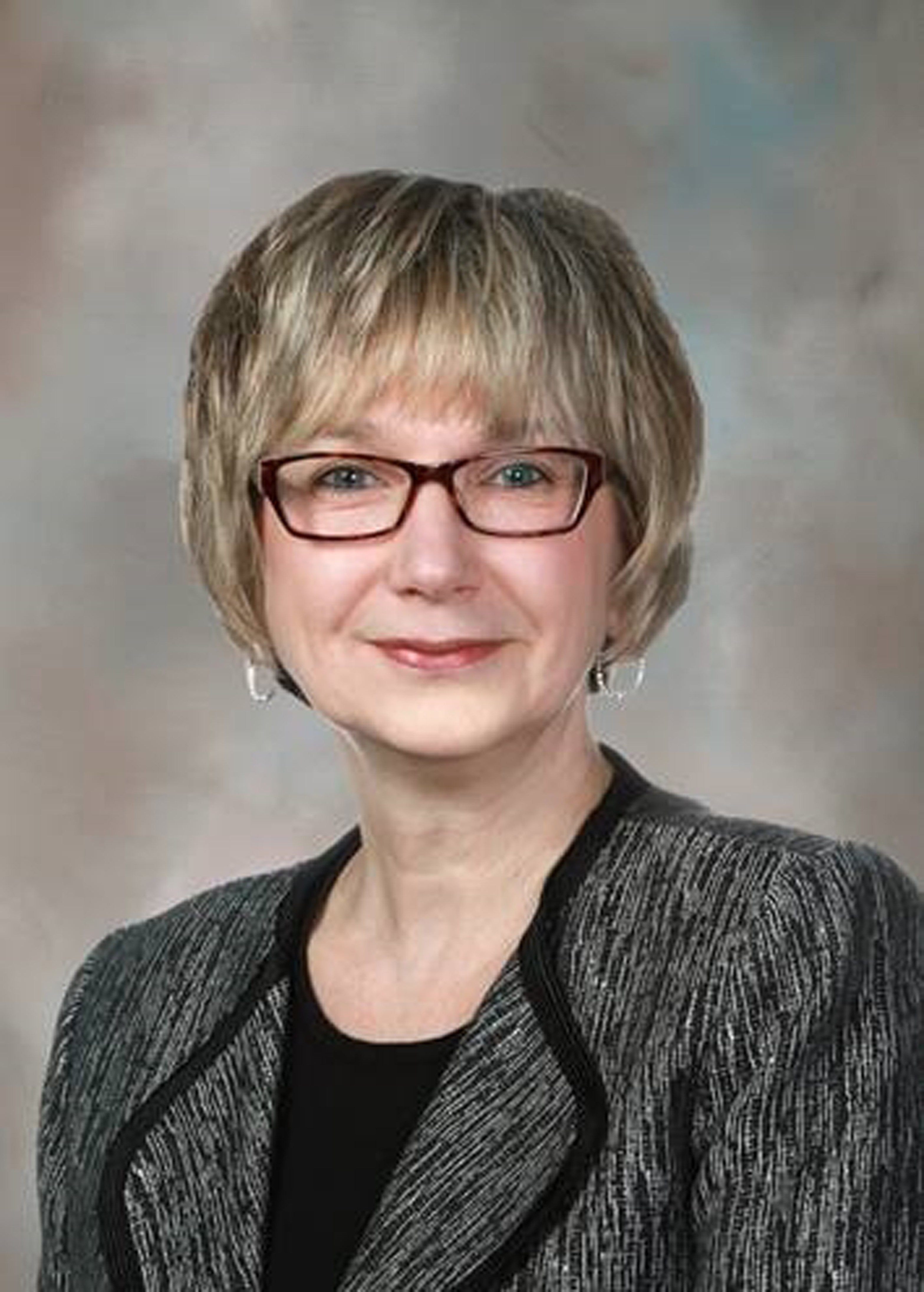
Ansys, Inc.Pushing the Performance Limits: How Ansys powers Oracle Red Bull Racing's Competitive Edge

Oracle Red Bull RacingSafety Simulation Enhancement Using AI

STELLANTISGHBMC and the Applications of GHBMC Models

General Motors Research and Development CenterBreak
Opening Remarks: Electrification and ADAS
Opening Remarks: Electronics and Lighting
Opening Remarks: Safety and Systems
Opening Remarks: Digital Engineering
Virtual Validation of Seat Integrity in a Full-Size SUV for Front Crash

General MotorsStamping Simulation Automation in LS-PrePost

General Motors CompanyDevelopment of Human Body Model (HBM-C) and Accelerated Positioning Tool (APT-C) for Virtual Testing and Product Development

Humanetics Innovative SolutionsApplication of Machine Learning technique to incorporate manufacturing and Testing variation for Robust BIW design for Crash performance

Maruti Suzuki IndiaIntelligent Engineering: AI-Driven Simulation & Design Optimization Framework

AnsysDriving into the Future of Software-Defined Vehicles with Ansys

AnsysAnsys Journey Towards Digital Engineering

AnsysDevelop High-Efficiency Electric Vehicle Powertrains (ConceptEV)

AnsysIntroducing J-SimRapid, A New Reduction Modelling Tool for Vehicle Crash Simulation

JSOL CorporationHighly Automated Springback Compensation of the Draw Die

AnsysPreliminary Validation of New Continuum Particle Gas (CPG) Method for Airbag Deployment Simulations
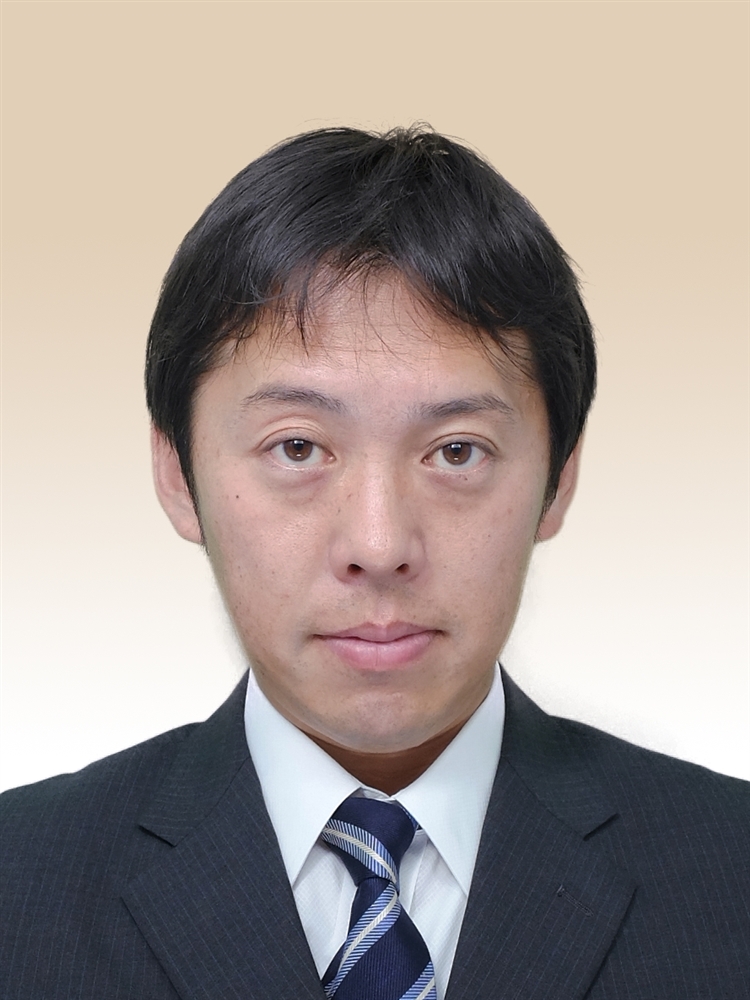
JSOL CorporationSimulating Solder Joint Shapes Post Reflow in Flip Chip Ball Grid Array Packages using ISPG – part 1

AnsysBattery Modeling and Manufacturing Simulation - What's New

AnsysNew Electronics Design Capabilities

AnsysSafety Considerations for AI in Automotive Applications

AptivAccelerating Design Exploration (Discovery)

AnsysVirtual validation of HIT: identification of key parameters to achieve ECE-R21/FMVSS201 requirements

Marelli EuropeHot Forming Simulation with Ansys Forming and LS-DYNA

Tiwa QuestUtilizing a validated laminated glass model to simulate pedestrian head impact on a windshield

ArupSimulating Solder Joint Shapes Post Reflow in Flip Chip Ball Grid Array Packages using ISPG – part 2
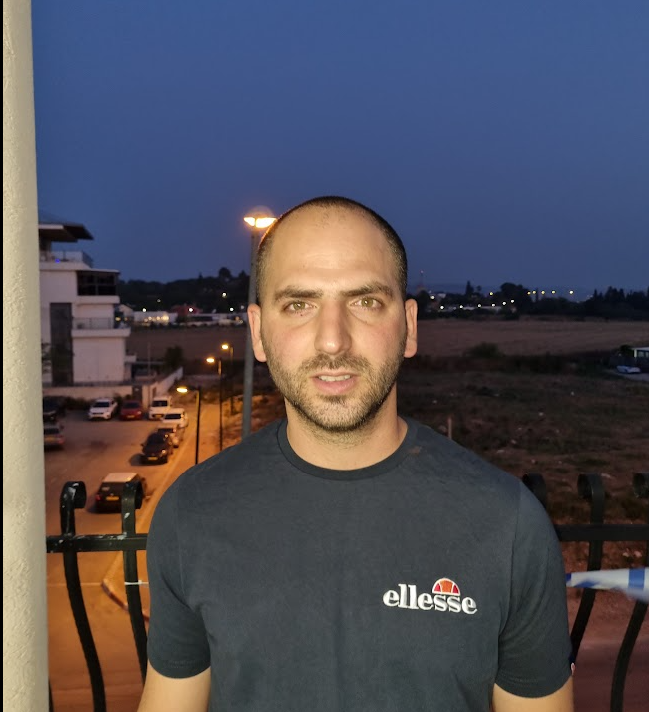
NVIDIALunch
Sponsored Lunch - HPE | AMD
Sponsored Lunch - TotalCAE
General Lunch
Shift Left: The Next Stage in Leveraging Simulation in Automotive Electronics Reliability

AnsysProcess Integration and Design Optimization (optiSLang)

AnsysEV Battery Thermal Runaway Mitigation

AnsysUsing Medini Analyze for Functional Safety
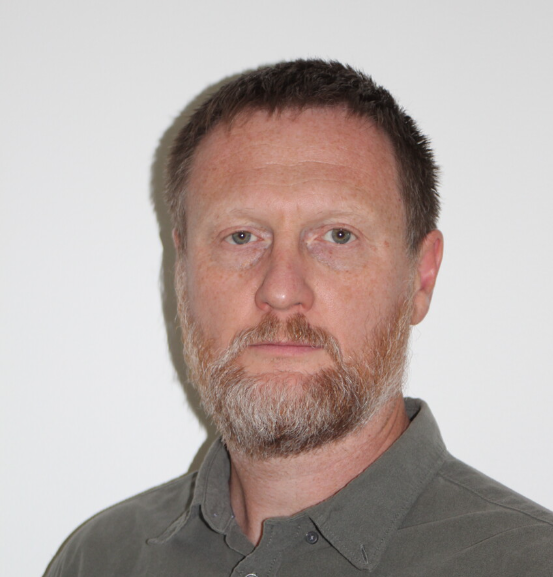
BorgWarnerComputational modeling of tensile split Hopkinson bar tests on carbon-carbon composites using continuum and mesoscale approaches

Southwest Research Institute (SwRI)Emergency Brace Positioning and Injury Risk Prediction of Aircraft Occupants under Impact Loading

Oasys LS-DYNA EnvironmentSonic weld characterization and FEA modeling method development for automotive applications

General MotorsAn Application of Shape Similarity Recognition Using PCA based Dimensional Compression

JSOL CorporationAdaptive FEM-SPH Numerical Models of CFRP Composite Materials under Hypervelocity Impacts
Introducing HBMs in Safety Simulations. Biofidelic positioning, and post-processing with ANSA and META

BETA CAE SYSTEMS INTERNATIONAL AGFrom Test to Calibrated Material Card using AI-augmented Workflows - A Case Study with Industrial Material for Aerospace and Automotive Applications

d3VIEWFacilitating Virtual Testing at an Industrial Level by Simulation Data Management

SCALE GmbHElectric Motor Design and Development - What's New

AnsysFrom Concept to Creation: Leveraging Simulation Data and AI

AnsysEMI/EMC Simulation - Latest Capabilities from Chips to Full Vehicle

AnsysA Holistic Approach to Prevent Unexpected Behavior in Autonomous Vehicles

TUV Rheinland GroupBird Strike Resistance of Thermoplastic Composite Panels: Experimental and Numerical Analysis

National Institute for Aviation Research (NIAR)HANS meets the GNS software Working with HBMs in Generator4 and Animator4

GNS mbHPolymer Material Calibration for *MAT_024 and *MAT_SAMP_LIGHT with strain-rate and damage modeling using AI-powered Workflows in d3VIEW

d3VIEWTemplate-driven management of model and loadcase variants for LS-DYNA simulations

BETA CAE SystemsComprehensive Conducted EMI Analysis of Electric Vehicle Drivetrains
AnsysHonda Material Intelligent Database for Highly Efficient and Environmentally Friendly R&D
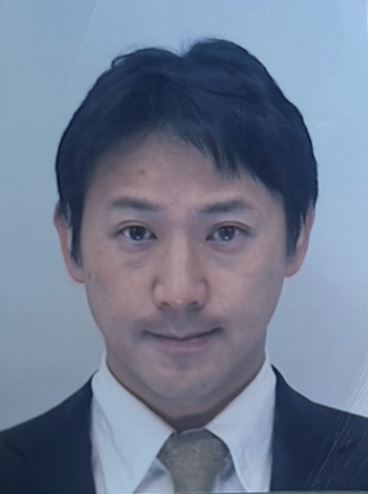
Honda R&D Co., LtdWhy MBSE? MBSE at the Intersection of Safety and Systems Engineering in the Automotive Domain

FordElectric Powertrain Durability and NVH Prediction

AnsysPreload of Rotorcraft Blade for Impact Simulation

Advance Virtual Engineering and Testing Laboratories (AVET-NIAR)Hans - Human Body Model: EnHansments

DYNAmore an ANSYS companyRecent advancements in material models

Dynamore, an Ansys CompanyManage multi-disciplinary load cases in SDM: model setup and evaluation of results

SCALEsdm. US. Corp.Lighting & Optical Simulation Overview and Technology Update

AnsysPower Electronics Simulation

AnsysAutonomy Use Case for Safety Analysis of Complex Models

Hexagon AB
HexagonUpdate on Ansys Solutions for Aerodynamics and Thermal Management

AnsysBreak
Advancing Battery Safety Through Multi-Physics Modeling: From Experimental Data to Validated Simulation Models

4a engineering GmbHTopology Optimization for Giga-Casting Design in Automotive Bodies Using LS-TASC & LS-DYNA

NovelisModeling the Sloshing Phenomena of Fuel using LS-DYNA
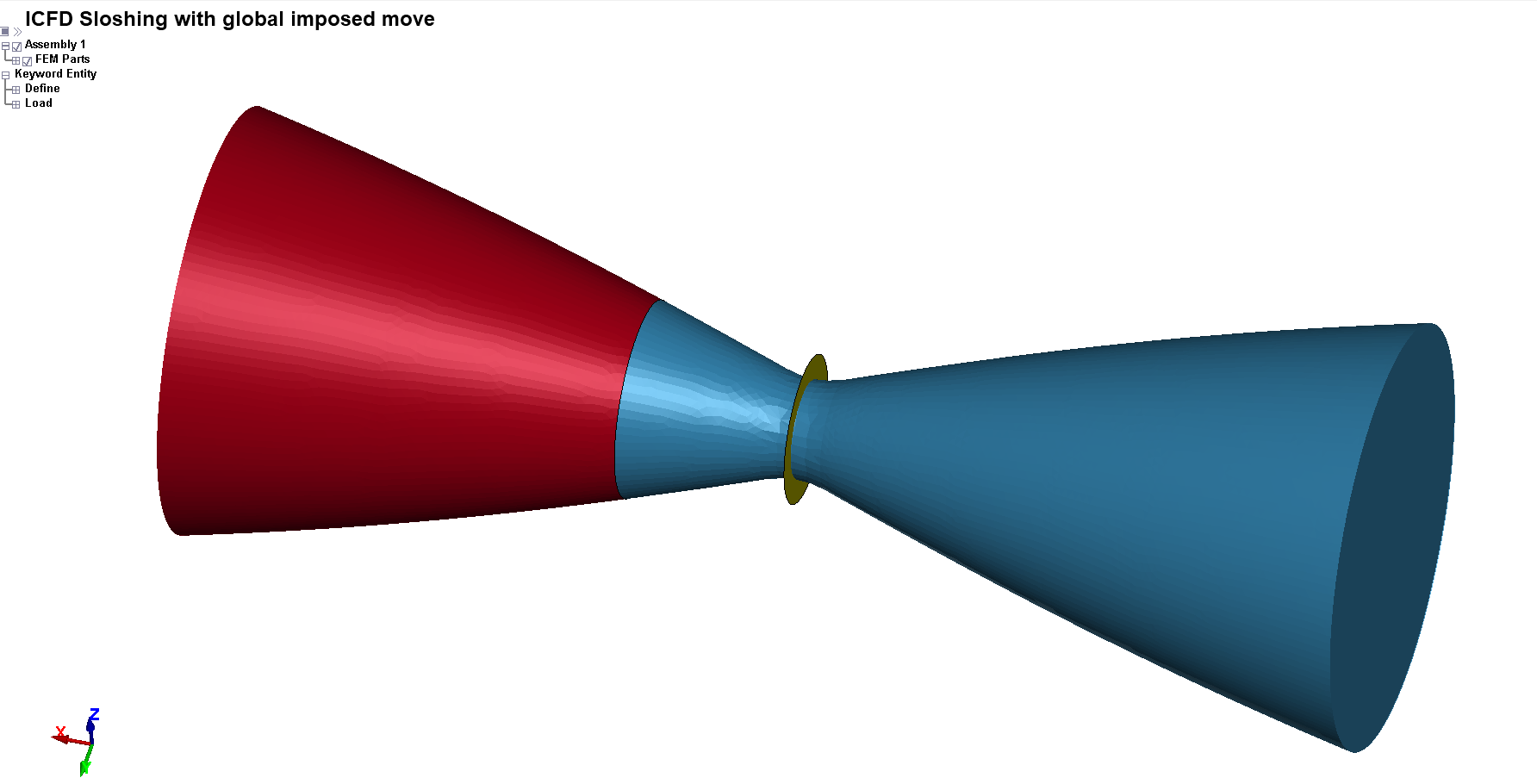
Rafael ltdCertification by Analysis: A discussion of solver requirements

DYNAmore / An Ansys CompanyBreak
Exterior Lighting Design Capabilities: How to Simulate the Latest Lamp Technologies

AnsysUpdate on Ansys Solutions for Structural and Durability (Mechanical)

AnsysAdvancing Software Safety through Test Automation using Advanced Engineering(SCADE) and Gen AI Tools

Honeywell Aerospace TechnologiesSelf-Driving Car Safety Through Accurate Simulation at Scale

Ansys IncCoupled Mechanical-Electrical-Thermal Behavior of Batteries: Experimental and Numerical Analysis
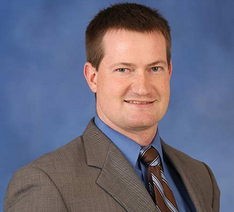
The University of Alabama in HuntsvilleParametric ROM technology for fast optimization of Crash Problems
Mass & Intertia representation, condensed stiffness & damping and other related techniques form the foundation of the ROM technology available in MeshWorks. The combining of two significant technologies – ROM & Parametric CAE provides users the advantages of optimization executed in a drastically reduced timeframe.
rajasekaran_m@depusa.comSimulating Safe Landing : A Deep Dive into Parachute Inflation and Float with LS-DYNA

CADFEM IndiaFluid Slosh Behavior For Crashworthiness A Modeling Approach Validated With Experimental Data
Stellantis
AnsysInterior Lighting, Cockpit Glare and Reflection Optimization

AnsysADAS Sensor Models (AVx Sensors)

AptivNVIDIA's AI Solution for CAE Tools

NVIDIAReducing Software Verification Lead-time with SCADE Model Coverage Analysis for Safety Critical Systems

EmbraerModeling Battery Safety under Penetration Loads Using LS-DYNA

AnsysFrom automatic event detection to automatic cause correlation

SIDACT GmbHEnhancing FSI Simulations in LS-DYNA: Implementing Immersed Interface Techniques in the Incompressible CFD Solver
AnsysModular Contact: A new approach to contact in LS-DYNA

AnsysScaling from Battery Cell to Electric Vehicle (EV) Crash – A Case Study from Full Vehicle Teardown

AnsysLS-OPT Pro: Status and Outlook

Ansys LSTNew porous media model for high-speed flows and EnSight-specific postprocessing output in the dual-CESE solver in LS-DYNA

AnsysNew Advances in the Discrete Element Method (DEM)

AnsysAnsys Digital Twin Innovations and Latest Applications in Automotive

AnsysTaking HUD Design to the Next Level (Speos)

AnsysDemonstrating MBSE for Automotive by an Electric Powertrain Case Study

AnsysImage Injection HIL Solution for Adaptive Driving Beam Development and Testing

Ansys, Inc.
dSPACE Inc.Exploring Ansys LS-DYNA's Battery Modeling Capabilities

ansysAccelerate Ped-Pro Assessments using SimAI
AnsysStudy of Vehicle Aerodynamics with the ICFD Solver and its Application to the Quarkus P3 Pikes Peak Version
Track Wrap Up: Electrification and ADAS
Track Wrap Up: Electronics and Lighting
Track Wrap Up: Safety and Systems
Track Wrap Up: Digital Engineering
Reception
Exhibits Open
Continental Breakfast
Registration
HPE | AMD Invitation-Only Roundtable
TotalCAE Invitation-Only Roundtable
Advancing Transportation and Road Safety: GMU's Research Activities Using LS-DYNA Simulation

George Mason UniversityOptimization of Diastolic Material Parameters: Use of a Shape-Based Objective Function in Conjunction with a Feasibility Classifier

UCSFModelling thick-walled aluminium extrusions in side-crash applications

Norwegian University of Science and Technology (NTNU)Study on Impact Loading Reduction Performance of "Origami Hat"
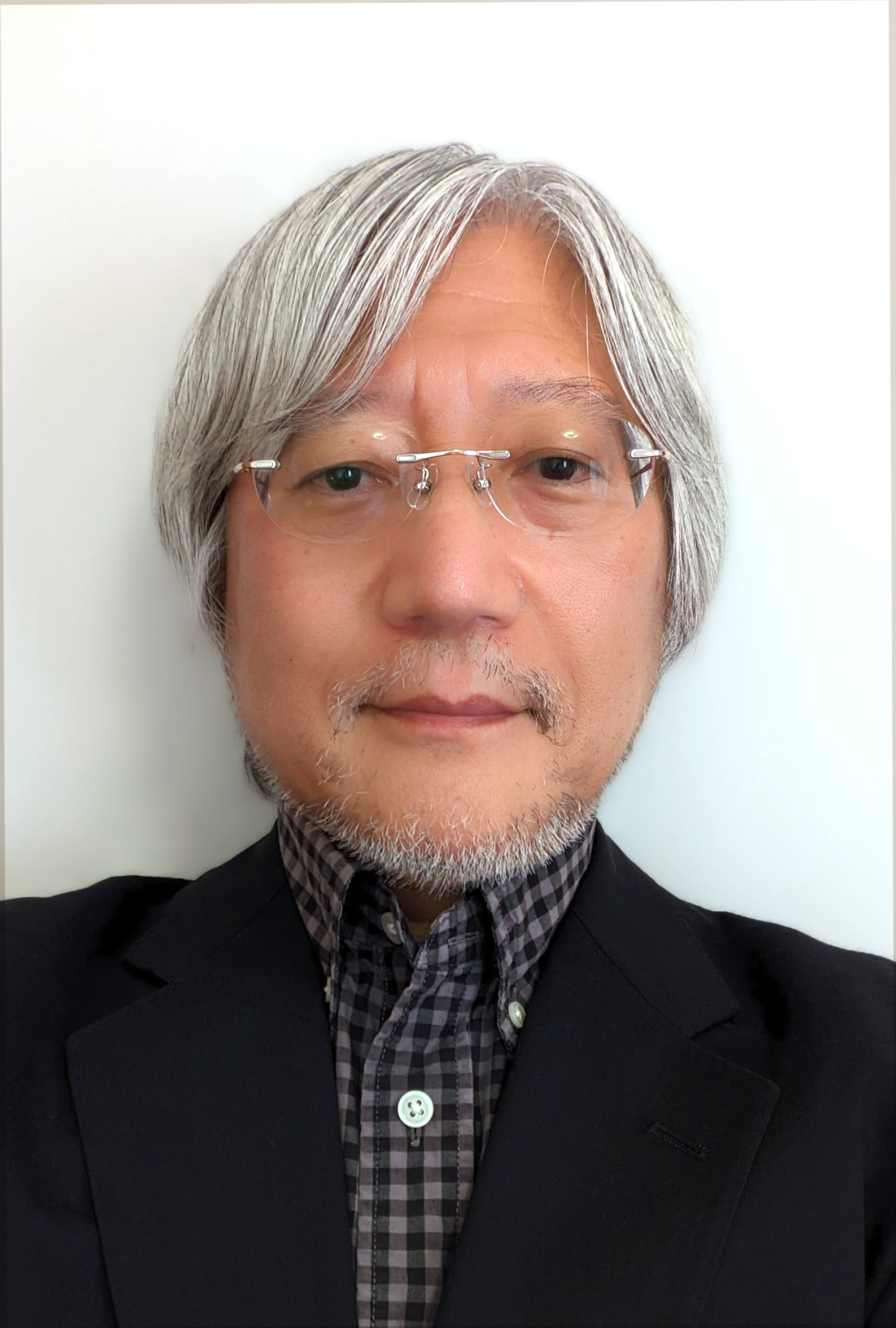
Tokura Simulation Research CorporationAnsys Forming - The New GUI for Forming Simulations with LS-DYNA: An Overview and Outlook

AnsysApplication of Trimmed Solid in IGA to Aluminum Diecast Part Analysis
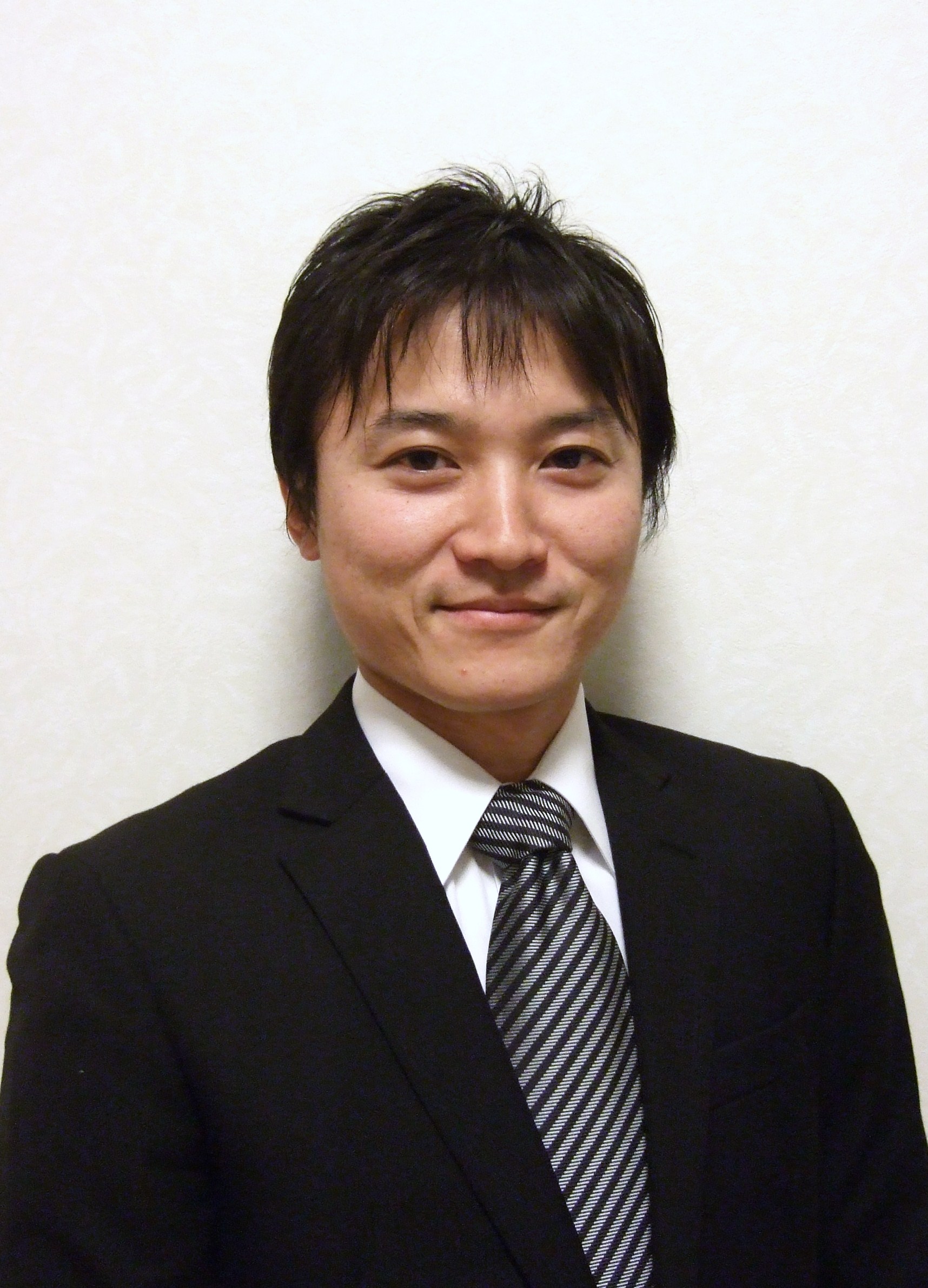
Honda Motor Co., Ltd.Advancements in Humanetics' FE Models

Humanetics GroupDigital Transformation and MBSE Workshop
8:45 AM – 9:15 AM Industry guest speaker Michael J. Vinarcik, P.E., Director, SAIC's Engineering Innovation Factory
9:15 AM – 10:10 AM MBSE Hands-on workshop - part 1
10:10 AM - 10:30 AM Break
10:30 AM - 12:30 PM MBSE Hands-on workshop - part 2
12:30 PM - 1:00 PM Lunch
1:00 PM - 1:30 PM MBSE Hands-on workshop - closingDigital Safety Workshop
8:45 AM - 9:40 AM Safety Product and the Collaboration Platform
9:40 AM - 10:10 AM Guest speaker - CS Group
10:10 AM - 10:30 AM Break
10:30 AM - 12:00 PM Hands-On Workshop for DSM and Safety Cases
12:00 PM - 1:15 PM Lunch
1:15 PM - 2:30 PM Hands-On Workshop for Digital Engineering at Ansys
2:30 PM - 3:00 PM Break
3:00 PM - 3:30 PM AI for safety and cybersecurity analysis
3:30 PM - 4:50 PM Safety of AI
4:50 PM - 5:00 PM Wrap Up & Closing Embedded Software Workshop
8:45 AM - 10:10 AM Hands-On Workshop Part 1: Architecture and Design of Embedded Software
10:10 AM - 10:30 AM Break
10:30 AM - 11:00 AM Academic Guest Speaker (UNAQ): Adoption of SCADE in a Full Academic Program
11:00 AM - 12:00 PM Hands-On Workshop Part 2: Software Implementation and Verification
12:00 PM - 1:15 PM Lunch
1:15 PM - 1:45 PM Hands-On Workshop Part 3: System / Software Integration
1:45 PM - 2:30 PM From Fail-safe to Fail-operational: Model-Based Solutions for Automotive Embedded Controls of the Future
2:30 PM - 3:00 PM Break
3:00 PM - 4:00 PM Hands-On Workshop Bonus: Ansys Innovations with Scade One
4:00 PM - 4:30 PM Wrap Up & Closing Simulation of drug effects on whole heart contractility
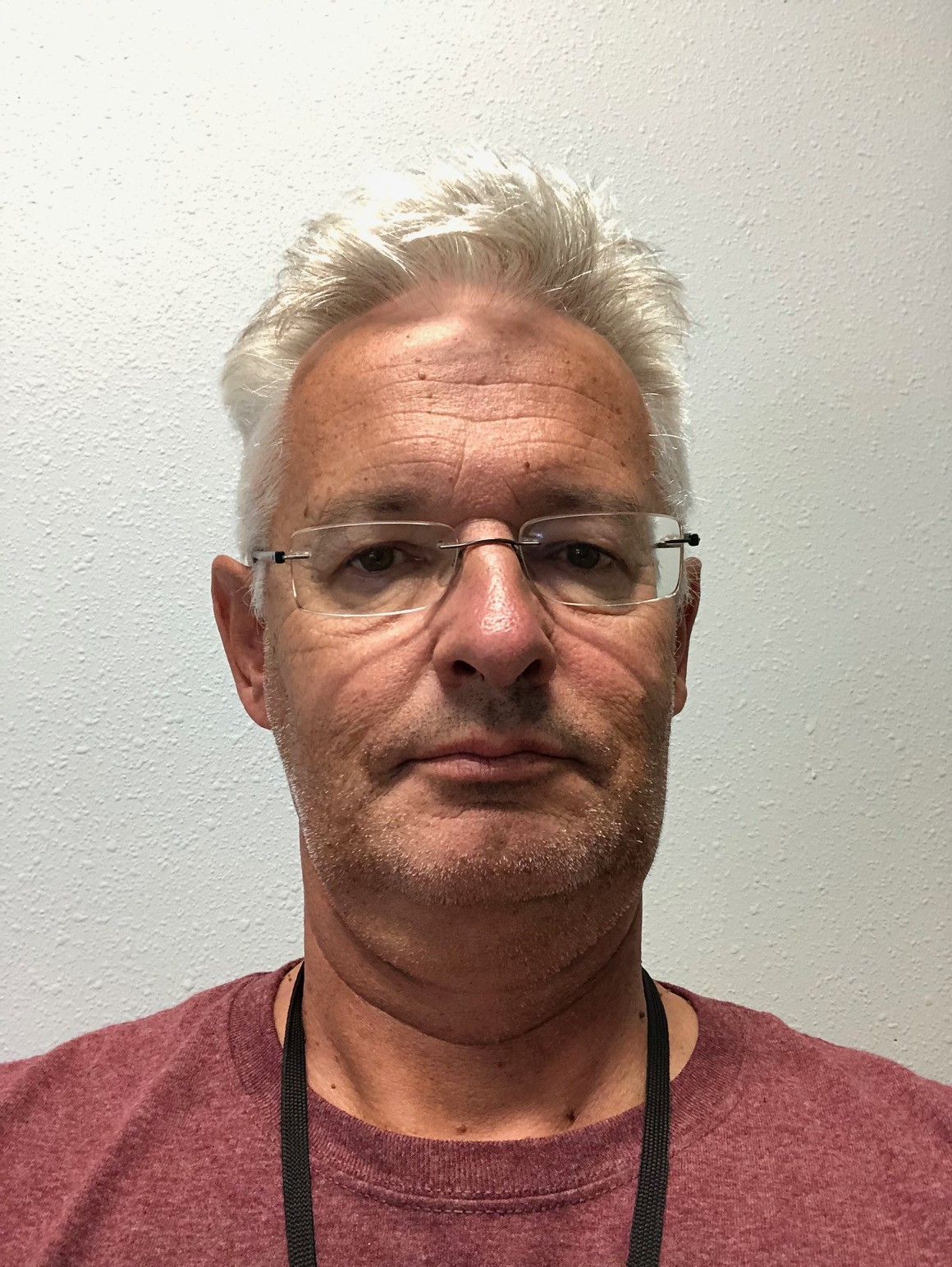
AnsysSimulated Failure Limitations of Midwest guardrail System
Safe Roads R&DMore than 40% cost reduction through drop test simulation with Ansys LS-DYNA

CADFEM Germany GmbHDie Hemming Simulation with Ansys Forming and LS-DYNA

Tiwa QuestEvaluation of B-Pillar crush using IGA Shells
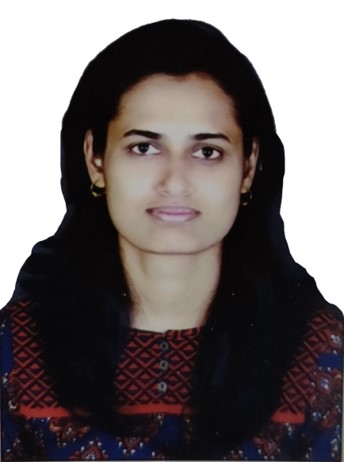
StellantisEnhancing Vehicle Safety Assessments through Advanced Virtual Testing Crashworthiness with the aid of ANSA and META

BETA CAE Systems SASimulation workflow for Transcatheter Aortic Valve Replacements: From crimp and deployment to fluid-structure interaction

DYNAmore, An Ansys CompanyLeveraging Graph Neural Networks for Surrogate Model Development in Automotive Crash Simulations

RescaleAccidental Fuel Drop on Spent Fuel Pool Storage Racks

Orano Federal Services LLCA systematic study on Ansys Forming performance
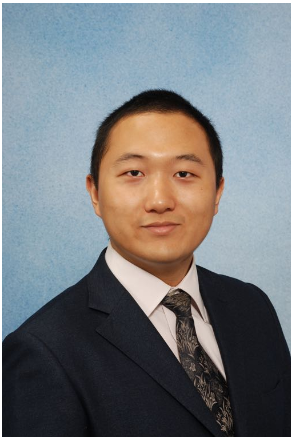
AnsysRecent Enhancements and Studies of Isogeometric Shells in LS-DYNA

DYNAmore GmbH, an ANSYS companyMitigating Risks at Bus Stops: A Study of the Effectiveness of Bollard Systems

UNLVSequential drop test simulations through automated process in Workbench LS-DYNA

CADFEM Germany GmbHOptimization of Prosthetic Heart Valves: Enhancing Hemodynamics through Advanced Morphing Techniques
Ansys3D Drawbead Design and Mesh Regeneration in Ansys Forming

AnsysUpdates on trimmed IGA B-Spline Solids

Dynamore GmbH, an Ansys CompanyData preparation for the Euro NCAP far-side ISO18571 rating calculation with tools from the DYNAmore Eco System

DYNAmore GmbH, An Ansys CompanyBreak
Determination of MAT224 Fracture Surface Points for Material Subjected to Three-Dimensional State of stress

Ohio State UniversityA New Eikonal Solver for Cardiac Electrophysiology in LS-DYNA

AnsysAdvancing Solder Joint Modeling in PCBs: A Two-Scale Co-Simulation Approach for Shock & Vibration Analysis Using LS-DYNA

ANSYS INCEvaluation of Viscoelastic Material Models in LS-DYNA based on Stress Relaxation Data

GMRecent development in Ansys LS-DYNA's NVH solvers

AnsysAcceleration of Implicit LS-DYNA

AnsysApplication of the MAT 213 Composite Impact Model to NASA Problems of Interest

NASA Glenn Research CenterPyheart-lib: A Python Library For LS-DYNA Multi-Physics Heart Simulations

AnsysCombining Physical Test with Structural Explicit FEA to Develop Package-Specific Failure Models for Electronic Components

Ansys, inc.Advancements in Eigenvalue Technology

Ansys
AnsysA Physically based strength prediction model for glass
Norwegian Defense Estates Agency / NTNUEfficient High-Performance Compute for Ansys LS-DYNA Leveraging NVIDIA Grace Platform

NVIDIAProgressive Damage and Failure Analysis for Structural Continuous Fiber Composites

AnsysSimulation of Oldroyd-B viscoelastic liquid jets with LS-DYNA ICFD
![]()
AnsysFast Study of Multiple Sizes Helmets and Design Shape Optimization using LS-DYNA, LS-OPT and DEP MeshWorks
Considering the Local Anisotropy in the Simulation Process Chain for Short and Long Fiber Reinforced Thermoplastics

4a engineering GmbHThe new linear solver with nonlinear contacts
DYNAmore Nordic AB, an Ansys companyApplication of ISPG Method in Various Manufacturing Processes Simulation

Ansys, Inc.Development of Anisotropic Plasticity Model of Titanium-6Al-4V for *MAT_264 for Ballistic Impact Simulations

George Mason UniversitySimulating Global Motion of the Brain in Response to Trauma: A Biomechanical Approach
![]()
Florida Atlantic University - Wilkes Honors CollegeSimulation of hammer impact during driving process of offshore monopile foundation for wind energy structures

Porto universityModelling of failure in aluminium high-pressure die castings

Norwegian University of Science and TechnologyIntroduction of LS-DYNA MCOL solver coupling with Ansys Aqwa for the application in shipbuilding analysis
LS-DYNA Smoothed Particle Galerkin (SPG) method for ductile failure simulation: feature updates, development road map

AnsysWIT Luncheon
General Lunch
Experimental Calibration of Flow Rule Coefficients for LS-DYNA MAT_213

Iowa State UniversityAdaptive FEM-DEM simulation of a soft missile impact on a reinforced concrete slab
Simulation of sheet metal forming using solid elements

AnsysPre-processing IGA models with ANSA

BETA CAE SYSTEMS INTERNATIONAL AGVirtual Testing Protocols and LS-DYNA Pre and Post Processing Solutions in the Oasys LS-DYNA Environment

Oasys LS-DYNA EnvironmentLS-DYNA User-Defined Internal Ballistic Modeling

NASAFailure Analysis of Adhesive Joints for Composites

Karagozian & CaseA new set of Eulerian Solver inside LS-DYNA
AnsysTrimline Development Application with Ansys Forming

Forming Simulation Technologies (FST)CAD-integrated Untrimmed Body-fit Unstructured Spline LS-DYNA Preprocessing for Isogeometric Analysis and Digital Twins

nVariateEnsuring conformity and high level productivity between ANSA and LS-DYNA during model and load case development

BETA CAE Systems SASpotweld Modeling Methodologies and Failure Characterization of Aluminum Resistance Spotwelds (RSW) using LS-DYNA

NovelisHourglass Control Recommendations for Simulating Reinforced Concrete under Low Velocity Impact

University of North Carolina at CharlotteTrim curve development in forming simulation

AnsysComputation efficiency in IGA Solid by applying subcycling technology
CAE Process Automation using ANSA and SPDRM for creating crash digital models

BETA CAE SystemsUse of LS-DYNA for Estimating Earthquake-induced Ground Settlements

Schnabel EngineeringValidating wear simulations in heat exchanger plate stamping process through comparative analysis with experimental data for enhanced productivity and quality
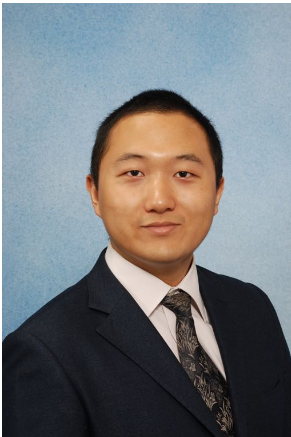
AnsysContinuum-based Particle Gas (CPG): A New Approach for Airbag Deployment Simulations

Ansys IncOverview of LS-TaSC and New Feature Highlights
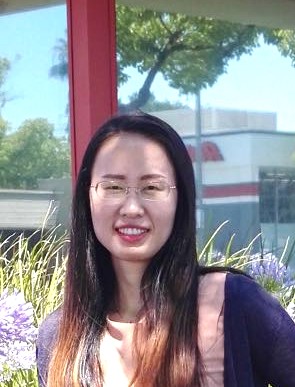
AnsysMaterials Data [Management] for Simulations

Ansys Inc.Break
Using Analysis for Decision Making in Aerospace Applications

FAAUpdate on LS-DYNA Developments

AnsysExhibits Open
Continental Breakfast
Registration
Engineering the Road Ahead with Simulation

Ansys, Inc.Pushing the Performance Limits: How Ansys powers Oracle Red Bull Racing's Competitive Edge

Oracle Red Bull RacingSafety Simulation Enhancement Using AI

STELLANTISGHBMC and the Applications of GHBMC Models

General Motors Research and Development CenterBreak
Opening Remarks: Electrification and ADAS
Opening Remarks: Electronics and Lighting
Opening Remarks: Safety and Systems
Opening Remarks: Digital Engineering
Develop High-Efficiency Electric Vehicle Powertrains (ConceptEV)

AnsysDriving into the Future of Software-Defined Vehicles with Ansys

AnsysAnsys Journey Towards Digital Engineering

AnsysIntelligent Engineering: AI-Driven Simulation & Design Optimization Framework

AnsysBattery Modeling and Manufacturing Simulation - What's New

AnsysNew Electronics Design Capabilities

AnsysAccelerating Design Exploration (Discovery)

AnsysSafety Considerations for AI in Automotive Applications

AptivLunch
Sponsored Lunch - HPE | AMD
Sponsored Lunch - TotalCAE
Process Integration and Design Optimization (optiSLang)

AnsysEV Battery Thermal Runaway Mitigation

AnsysShift Left: The Next Stage in Leveraging Simulation in Automotive Electronics Reliability

AnsysUsing Medini Analyze for Functional Safety

BorgWarnerElectric Motor Design and Development - What's New

AnsysEMI/EMC Simulation - Latest Capabilities from Chips to Full Vehicle

AnsysFrom Concept to Creation: Leveraging Simulation Data and AI

AnsysA Holistic Approach to Prevent Unexpected Behavior in Autonomous Vehicles

TUV Rheinland GroupHonda Material Intelligent Database for Highly Efficient and Environmentally Friendly R&D

Honda R&D Co., LtdElectric Powertrain Durability and NVH Prediction

AnsysComprehensive Conducted EMI Analysis of Electric Vehicle Drivetrains
AnsysWhy MBSE? MBSE at the Intersection of Safety and Systems Engineering in the Automotive Domain

FordPower Electronics Simulation

AnsysLighting & Optical Simulation Overview and Technology Update

AnsysAutonomy Use Case for Safety Analysis of Complex Models

Hexagon AB
HexagonUpdate on Ansys Solutions for Aerodynamics and Thermal Management

AnsysBreak
Update on Ansys Solutions for Structural and Durability (Mechanical)

AnsysExterior Lighting Design Capabilities: How to Simulate the Latest Lamp Technologies

AnsysAdvancing Software Safety through Test Automation using Advanced Engineering(SCADE) and Gen AI tools

Honeywell Aerospace TechnologiesSelf-Driving Car Safety Through Accurate Simulation at Scale

Ansys IncInterior Lighting, Cockpit Glare and Reflection Optimization

AnsysADAS Sensor Models (AVx Sensors)

AptivReducing Software Verification Lead-time with SCADE Model Coverage Analysis for Safety Critical Systems

EmbraerAnsys Digital Twin Innovations and Latest Applications in Automotive

AnsysNVIDIA's AI Solution for CAE Tools

NVIDIATaking HUD Design to the Next Level (Speos)

AnsysImage Injection HIL Solution for Adaptive Driving Beam Development and Testing

Ansys, Inc.
dSPACE Inc.Demonstrating MBSE for Automotive by an Electric Powertrain Case Study

AnsysTrack Wrap Up: Electrification and ADAS
Track Wrap Up: Electronics and Lighting
Track Wrap Up: Safety and Systems
Track Wrap Up: Digital Engineering
Networking Reception
Exhibits Open
Continental Breakfast
Registration
HPE | AMD Invitation-Only Roundtable
TotalCAE Invitation-Only Roundtable
Digital Transformation and MBSE Workshop
8:45 AM – 9:15 AM Industry guest speaker Michael J. Vinarcik, P.E., Director, SAIC's Engineering Innovation Factory
9:15 AM – 10:10 AM MBSE Hands-on workshop - part 1
10:10 AM - 10:30 AM Break
10:30 AM - 12:30 PM MBSE Hands-on workshop - part 2
12:30 PM - 1:00 PM Lunch
1:00 PM - 1:30 PM MBSE Hands-on workshop - closingDigital Safety Workshop
8:45 AM - 9:40 AM Safety Product and the Collaboration Platform
9:40 AM - 10:10 AM Guest speaker - CS Group
10:10 AM - 10:30 AM Break
10:30 AM - 12:00 PM Hands-On Workshop for DSM and Safety Cases
12:00 PM - 1:15 PM Lunch
1:15 PM - 2:30 PM Hands-On Workshop for Digital Engineering at Ansys
2:30 PM - 3:00 PM Break
3:00 PM - 3:30 PM AI for safety and cybersecurity analysis
3:30 PM - 4:50 PM Safety of AI
4:50 PM - 5:00 PM Wrap Up & Closing Embedded Software Workshop
8:45 AM - 10:10 AM Hands-On Workshop Part 1: Architecture and Design of Embedded Software
10:10 AM - 10:30 AM Break
10:30 AM - 11:00 AM Academic Guest Speaker (UNAQ): Adoption of SCADE in a Full Academic Program
11:00 AM - 12:00 PM Hands-On Workshop Part 2: Software Implementation and Verification
12:00 PM - 1:15 PM Lunch
1:15 PM - 1:45 PM Hands-On Workshop Part 3: System / Software Integration
1:45 PM - 2:30 PM From Fail-safe to Fail-operational: Model-Based Solutions for Automotive Embedded Controls of the Future
2:30 PM - 3:00 PM Break
3:00 PM - 4:00 PM Hands-On Workshop Bonus: Ansys Innovations with Scade One
4:00 PM - 4:30 PM Wrap Up & Closing Exhibits Open
Continental Breakfast
Registration
Engineering the Road Ahead with Simulation

Ansys, Inc.Pushing the Performance Limits: How Ansys powers Oracle Red Bull Racing's Competitive Edge

Oracle Red Bull RacingSafety Simulation Enhancement Using AI

STELLANTISGHBMC and the Applications of GHBMC Models

General Motors Research and Development CenterBreak
Virtual Validation of Seat Integrity in a Full-Size SUV for Front Crash

General MotorsStamping Simulation Automation in LS-PrePost

General Motors CompanyDevelopment of Human Body Model (HBM-C) and Accelerated Positioning Tool (APT-C) for Virtual Testing and Product Development

Humanetics Innovative SolutionsApplication of Machine Learning technique to incorporate manufacturing and Testing variation for Robust BIW design for Crash performance

Maruti Suzuki IndiaIntroducing J-SimRapid, A New Reduction Modelling Tool for Vehicle Crash Simulation

JSOL CorporationHighly Automated Springback Compensation of the Draw Die

AnsysPreliminary Validation of New Continuum Particle Gas (CPG) Method for Airbag Deployment Simulations

JSOL CorporationSimulating Solder Joint Shapes Post Reflow in Flip Chip Ball Grid Array Packages using ISPG – part 1

AnsysVirtual validation of HIT: identification of key parameters to achieve ECE-R21/FMVSS201 requirements

Marelli EuropeHot Forming Simulation with Ansys Forming and LS-DYNA

Tiwa QuestUtilizing a validated laminated glass model to simulate pedestrian head impact on a windshield

ArupSimulating Solder Joint Shapes Post Reflow in Flip Chip Ball Grid Array Packages using ISPG – part 2

NVIDIASponsored Lunch - HPE | AMD
General Lunch
Computational modeling of tensile split Hopkinson bar tests on carbon-carbon composites using continuum and mesoscale approaches

Southwest Research Institute (SwRI)Emergency Brace Positioning and Injury Risk Prediction of Aircraft Occupants under Impact Loading

Oasys LS-DYNA EnvironmentSonic weld characterization and FEA modeling method development for automotive applications

General MotorsAn Application of Shape Similarity Recognition Using PCA based Dimensional Compression

JSOL CorporationAdaptive FEM-SPH Numerical Models of CFRP Composite Materials under Hypervelocity Impacts
Introducing HBMs in Safety Simulations. Biofidelic positioning, and post-processing with ANSA and META

BETA CAE SYSTEMS INTERNATIONAL AGFrom Test to Calibrated Material Card using AI-augmented Workflows - A Case Study with Industrial Material for Aerospace and Automotive Applications

d3VIEWFacilitating Virtual Testing at an Industrial Level by Simulation Data Management

SCALE GmbHBird Strike Resistance of Thermoplastic Composite Panels: Experimental and Numerical Analysis

National Institute for Aviation Research (NIAR)HANS meets the GNS software Working with HBMs in Generator4 and Animator4

GNS mbHPolymer Material Calibration for *MAT_024 and *MAT_SAMP_LIGHT with strain-rate and damage modeling using AI-powered Workflows in d3VIEW

d3VIEWTemplate-driven management of model and loadcase variants for LS-DYNA simulations

BETA CAE SystemsManage multi-disciplinary load cases in SDM: model setup and evaluation of results

SCALEsdm. US. Corp.Preload of Rotorcraft Blade for Impact Simulation

Advance Virtual Engineering and Testing Laboratories (AVET-NIAR)Hans - Human Body Model: EnHansments

DYNAmore an ANSYS companyRecent advancements in material models

Dynamore, an Ansys CompanyBreak
Advancing Battery Safety Through Multi-Physics Modeling: From Experimental Data to Validated Simulation Models

4a engineering GmbHTopology Optimization for Giga-Casting Design in Automotive Bodies Using LS-TASC & LS-DYNA

NovelisModeling the Sloshing Phenomena of Fuel using LS-DYNA

Rafael ltdCertification by Analysis: A discussion of solver requirements

DYNAmore / An Ansys CompanyCoupled Mechanical-Electrical-Thermal Behavior of Batteries: Experimental and Numerical Analysis

The University of Alabama in HuntsvilleParametric ROM technology for fast optimization of Crash Problems

rajasekaran_m@depusa.comSimulating Safe Landing : A Deep Dive into Parachute Inflation and Float with LS-DYNA

CADFEM IndiaFluid Slosh Behavior For Crashworthiness A Modeling Approach Validated With Experimental Data
Stellantis
AnsysModeling Battery Safety under Penetration Loads Using LS-DYNA

AnsysFrom automatic event detection to automatic cause correlation

SIDACT GmbHEnhancing FSI Simulations in LS-DYNA: Implementing Immersed Interface Techniques in the Incompressible CFD Solver
AnsysModular Contact: A new approach to contact in LS-DYNA

AnsysScaling from Battery Cell to Electric Vehicle (EV) Crash – A Case Study from Full Vehicle Teardown

AnsysLS-OPT Pro: Status and Outlook

Ansys LSTNew porous media model for high-speed flows and EnSight-specific postprocessing output in the dual-CESE solver in LS-DYNA

AnsysNew Advances in the Discrete Element Method (DEM)

AnsysExploring Ansys LS-DYNA's Battery Modeling Capabilities

ansysStudy of Vehicle Aerodynamics with the ICFD Solver and its Application to the Quarkus P3 Pikes Peak Version
Accelerate Ped-Pro Assessments using SimAI
AnsysReception
Exhibits Open
Continental Breakfast
Registration
HPE | AMD Invitation-Only Roundtable
TotalCAE Invitation-Only Roundtable
Advancing Transportation and Road Safety: GMU's Research Activities Using LS-DYNA Simulation

George Mason UniversityOptimization of Diastolic Material Parameters: Use of a Shape-Based Objective Function in Conjunction with a Feasibility Classifier

UCSFModelling thick-walled aluminium extrusions in side-crash applications

Norwegian University of Science and Technology (NTNU)Study on Impact Loading Reduction Performance of "Origami Hat"

Tokura Simulation Research CorporationAnsys Forming - The New GUI for Forming Simulations with LS-DYNA: An Overview and Outlook

AnsysApplication of Trimmed Solid in IGA to Aluminum Diecast Part Analysis

Honda Motor Co., Ltd.Advancements in Humanetics' FE Models

Humanetics Innovative SolutionsSimulation of drug effects on whole heart contractility

AnsysSimulated Failure Limitations of Midwest guardrail System
Safe Roads R&DMore than 40% cost reduction through drop test simulation with Ansys LS-DYNA

CADFEM Germany GmbHDie Hemming Simulation with Ansys Forming and LS-DYNA

Tiwa QuestEvaluation of B-Pillar crush using IGA Shells

StellantisEnhancing Vehicle Safety Assessments through Advanced Virtual Testing Crashworthiness with the aid of ANSA and META

BETA CAE Systems SALeveraging Graph Neural Networks for Surrogate Model Development in Automotive Crash Simulations

RescaleAccidental Fuel Drop on Spent Fuel Pool Storage Racks
Simulation workflow for Transcatheter Aortic Valve Replacements: From crimp and deployment to fluid-structure interaction

DYNAmore, An Ansys CompanyA systematic study on Ansys Forming performance

AnsysRecent Enhancements and Studies of Isogeometric Shells in LS-DYNA

DYNAmore GmbH, an ANSYS companyMitigating Risks at Bus Stops: A Study of the Effectiveness of Bollard Systems

UNLVSequential drop test simulations through automated process in Workbench LS-DYNA

CADFEM Germany GmbH3D Drawbead Design and Mesh Regeneration in Ansys Forming

AnsysOptimization of Prosthetic Heart Valves: Enhancing Hemodynamics through Advanced Morphing Techniques
AnsysUpdates on trimmed IGA B-Spline Solids

Dynamore GmbH, an Ansys CompanyData preparation for the Euro NCAP far-side ISO18571 rating calculation with tools from the DYNAmore Eco System

DYNAmore GmbH, An Ansys CompanyBreak
Determination of MAT224 Fracture Surface Points for Material Subjected to Three-Dimensional State of stress

Ohio State UniversityA New Eikonal Solver for Cardiac Electrophysiology in LS-DYNA

AnsysAdvancing Solder Joint Modeling in PCBs: A Two-Scale Co-Simulation Approach for Shock & Vibration Analysis Using LS-DYNA

ANSYS INCEvaluation of Viscoelastic Material Models in LS-DYNA based on Stress Relaxation Data

GMRecent development in Ansys LS-DYNA's NVH solvers

AnsysAcceleration of Implicit LS-DYNA

AnsysApplication of the MAT 213 Composite Impact Model to NASA Problems of Interest

NASA Glenn Research CenterPyheart-lib: A Python Library For LS-DYNA Multi-Physics Heart Simulations

AnsysCombining Physical Test with Structural Explicit FEA to Develop Package-Specific Failure Models for Electronic Components

Ansys, inc.Advancements in Eigenvalue Technology

Ansys
AnsysA Physically based strength prediction model for glass
Norwegian Defense Estates Agency / NTNUEfficient High-Performance Compute for Ansys LS-DYNA Leveraging NVIDIA Grace Platform

NVIDIAProgressive Damage and Failure Analysis for Structural Continuous Fiber Composites

AnsysSimulation of Oldroyd-B viscoelastic liquid jets with LS-DYNA ICFD
![]()
AnsysFast Study of Multiple Sizes Helmets and Design Shape Optimization using LS-DYNA, LS-OPT and DEP MeshWorks
Considering the Local Anisotropy in the Simulation Process Chain for Short and Long Fiber Reinforced Thermoplastics

4a engineering GmbHThe new linear solver with nonlinear contacts
DYNAmore Nordic AB, an Ansys companyApplication of ISPG Method in Various Manufacturing Processes Simulation

Ansys, Inc.Development of Anisotropic Plasticity Model of Titanium-6Al-4V for *MAT_264 for Ballistic Impact Simulations

George Mason UniversitySimulating Global Motion of the Brain in Response to Trauma: A Biomechanical Approach
![]()
Florida Atlantic University - Wilkes Honors CollegeSimulation of hammer impact during driving process of offshore monopile foundation for wind energy structures

Porto universityModelling of failure in aluminium high-pressure die castings

Norwegian University of Science and TechnologyIntroduction of LS-DYNA MCOL solver coupling with Ansys Aqwa for the application in shipbuilding analysis

AnsysLS-DYNA Smoothed Particle Galerkin (SPG) method for ductile failure simulation: feature updates, development road map

AnsysWIT Luncheon
General Lunch
Experimental Calibration of Flow Rule Coefficients for LS-DYNA MAT_213

Iowa State UniversityAdaptive FEM-DEM simulation of a soft missile impact on a reinforced concrete slab

CADFEM Germany GmbHSimulation of sheet metal forming using solid elements

AnsysPre-processing IGA models with ANSA

BETA CAE SYSTEMS INTERNATIONAL AGVirtual Testing Protocols and LS-DYNA Pre and Post Processing Solutions in the Oasys LS-DYNA Environment

Oasys LS-DYNA EnvironmentLS-DYNA User-Defined Internal Ballistic Modeling

NASAFailure Analysis of Adhesive Joints for Composites

Karagozian & CaseA new set of Eulerian Solver inside LS-DYNA
AnsysTrimline Development Application with Ansys Forming

Forming Simulation Technologies (FST)CAD-integrated Untrimmed Body-fit Unstructured Spline LS-DYNA Preprocessing for Isogeometric Analysis and Digital Twins

nVariateEnsuring conformity and high level productivity between ANSA and LS-DYNA during model and load case development

BETA CAE Systems SASpotweld Modeling Methodologies and Failure Characterization of Aluminum Resistance Spotwelds (RSW) using LS-DYNA

NovelisHourglass Control Recommendations for Simulating Reinforced Concrete under Low Velocity Impact

University of North Carolina at CharlotteTrim curve development in forming simulation

AnsysComputation efficiency in IGA Solid by applying subcycling technology

AnsysCAE Process Automation using ANSA and SPDRM for creating crash digital models

BETA CAE SystemsUse of LS-DYNA for Estimating Earthquake-induced Ground Settlements

Schnabel EngineeringValidating wear simulations in heat exchanger plate stamping process through comparative analysis with experimental data for enhanced productivity and quality

AnsysContinuum-based Particle Gas (CPG): A New Approach for Airbag Deployment Simulations

Ansys IncOverview of LS-TaSC and New Feature Highlights

AnsysMaterials Data [Management] for Simulations

Ansys Inc.Break
Using Analysis for Decision Making in Aerospace Applications

FAAUpdate on LS-DYNA Developments

Ansys